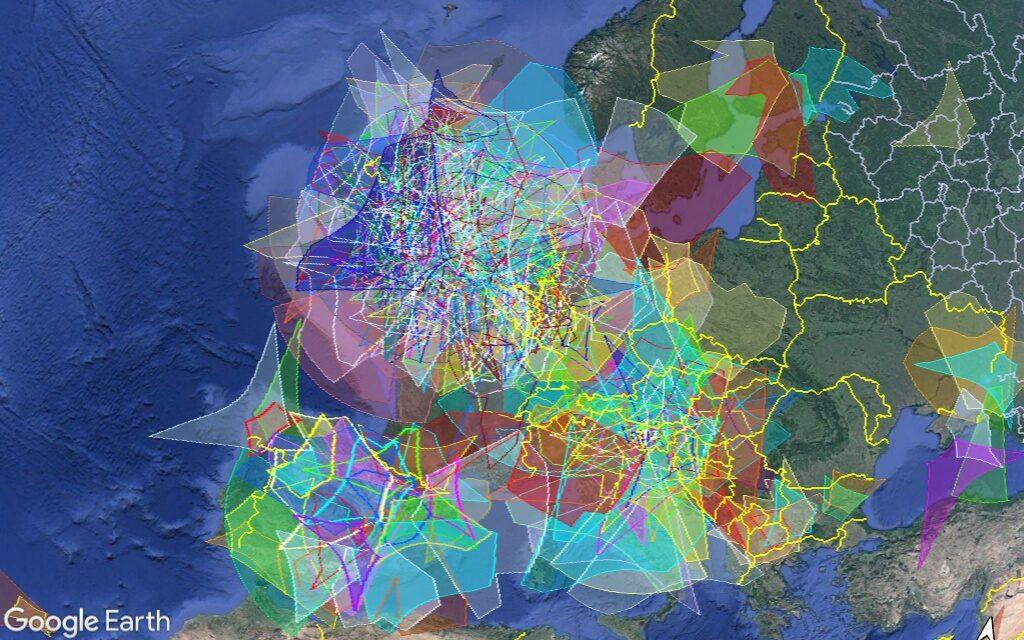By Paul Roggemans, Peter Cambell-Burns, Mark McIntyre, Damir Šegon and Denis Vida
Abstract: A status report is presented for the Global Meteor Network. Since the start of the network, 722311 orbits have been collected until end of 2022, 423 different meteor showers have been identified among these orbits. During 2022 more than 300 new GMN cameras were installed. 334668 orbits were collected in 2022. The development of the Global Meteor Network in different regions is described. The coverage of the camera fields of view is shown on maps.
1 Introduction
In the past 15 years many regional and some international video camera networks were created to obtain multi-station registrations in order to obtain meteor trajectories and orbits. Some of these networks are specialized in fireballs, others are dedicated to a fainter magnitude range comparable to what visual observers used to cover. The orbit data obtained by these networks brought a tremendous progress in our knowledge of meteoroid streams.
The Global Meteor Network is the most recent development in this domain but its success builds on many years of expertise as one of the pioneers in the field of video meteor observations was the Croatian Meteor Network which is at the origin of GMN (Gural and Šegon, 2009). Based on the significantly improved Raspberry Pi solution introduced by Zubović et al. (2015) and Vida et al. (2016), at the end of 2018 the Global Meteor Network emerged starting with 6 cameras located in New Mexico, using IP cameras controlled by a Raspberry with its own dedicated software and reduction pipeline (Vida et al., 2021). GMN became the fastest growing meteor video network with 73 operational cameras at the end of 2019, 155 at the end of 2020 and 341 by the end of 2021. The former EDMOND network was discontinued and GMN became a logic successor with most European amateur networks now building and installing RMS cameras. In this report we highlight the progress made during 2022 compared to previous years.
2 GMN camera coverage
The aim of the GMN is to cover all latitudes and longitudes to assure a global coverage of meteor activity in order to let no unexpected meteor event pass unnoticed. This is an ambitious goal especially for a project that depends for most efforts entirely on volunteers’ work. In this report we describe the progress that was made by GMN during 2022 in different regions of the world. The status of the camera coverage is illustrated with maps showing the fields of view intersected at an elevation of 100 km in the atmosphere, projected and clamped to the ground. This way the actual overlap between the camera fields is shown without any effects of 3D perspectives. Where possible the camera ID has been mentioned on the plots. The status at the end of 2022 can be compared to the 2021 annual report (Roggemans et al., 2022).
Many RMS cameras with 4 mm optics have the horizon at the bottom of their field of view what results in a huge camera field at 100 km elevation. Rather few meteors will be bright enough to get registered near the horizon. The large distance between the camera station and the meteor also reduces the chances to obtain a useable triangulation. The number of paired meteors at the outskirts of these large camera fields is very small. However, cameras pointing so low towards the horizon turn out to be very useful regarding obtaining coverage at lower heights where meteorite dropping fireballs end their visible path. When looking for camera overlap, it is strongly recommended to look for an optimized overlap between cameras. An interesting study on this topic for the New Mexico Meteor Array has been published by Mroz (2021). Camera operators are encouraged to optimize their camera overlap.
The number of multi-station events mentioned per country corresponds to the number of orbits, unless an orbit was based on camera data from different countries, then it was counted once for each country. This can also be visualized on the MeteorMap (Dijkema, 2022). The current camera coverage is presented per country or per region for reason of readability. To consider the real overlap for most European countries it is necessary to look at the camera coverage of neighboring countries.
2.1 Australia
The first 31 meteor orbits by Australian RMS cameras were registered in September 2021 when the first 5 cameras got ready to harvest meteors. By the end of 2021, 12 cameras managed to obtain 1871 orbits in the final 4 months of 2021. A real breakthrough was achieved in 2022 as the number of RMS cameras in Australia increased to 29, good for 12460 orbits in 2022. Most cameras were installed in West Australia. Three cameras overlap in Victoria and some lonely cameras in Queensland and New South Wales wait for multi-station partners. Australia being a very large country, there is a great potential for GMN to expand further.
To view and toggle on/off camera fields yourself in Google Earth Pro (freeware) :
- All aggregated kml files for Australia status end of 2022;
- All aggregated kml files for GMN status end of 2022;
- All current status kml files at 25 km, 70 km and 100 km elevation (absolute height, to be corrected to clamped-to-ground);
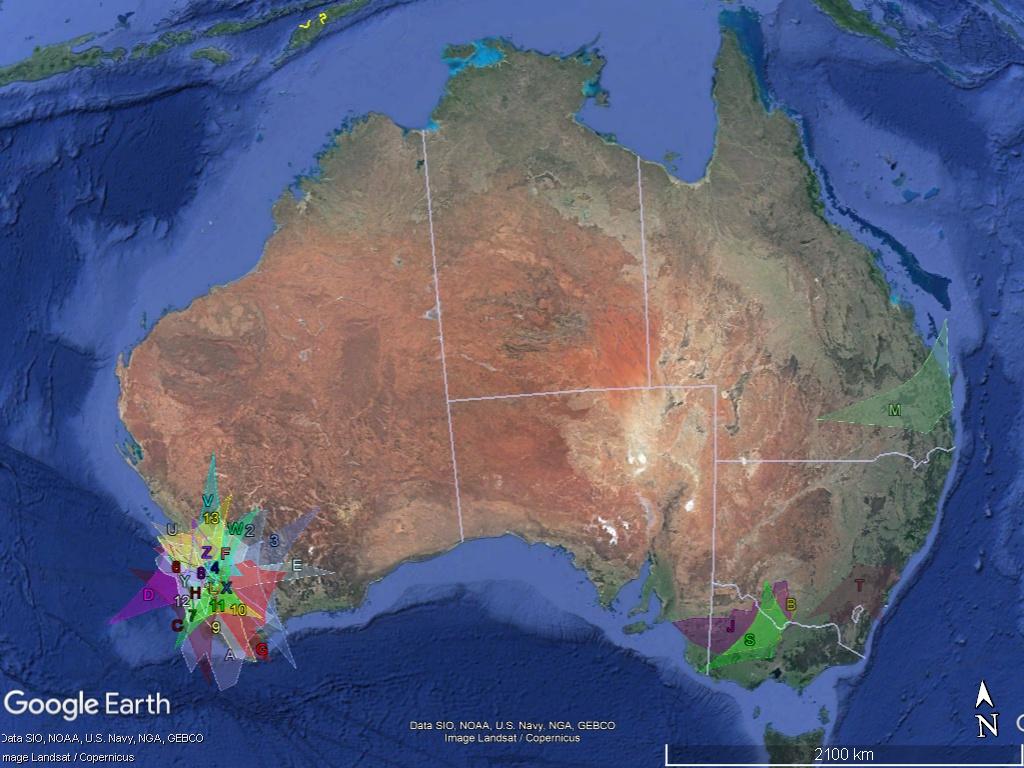
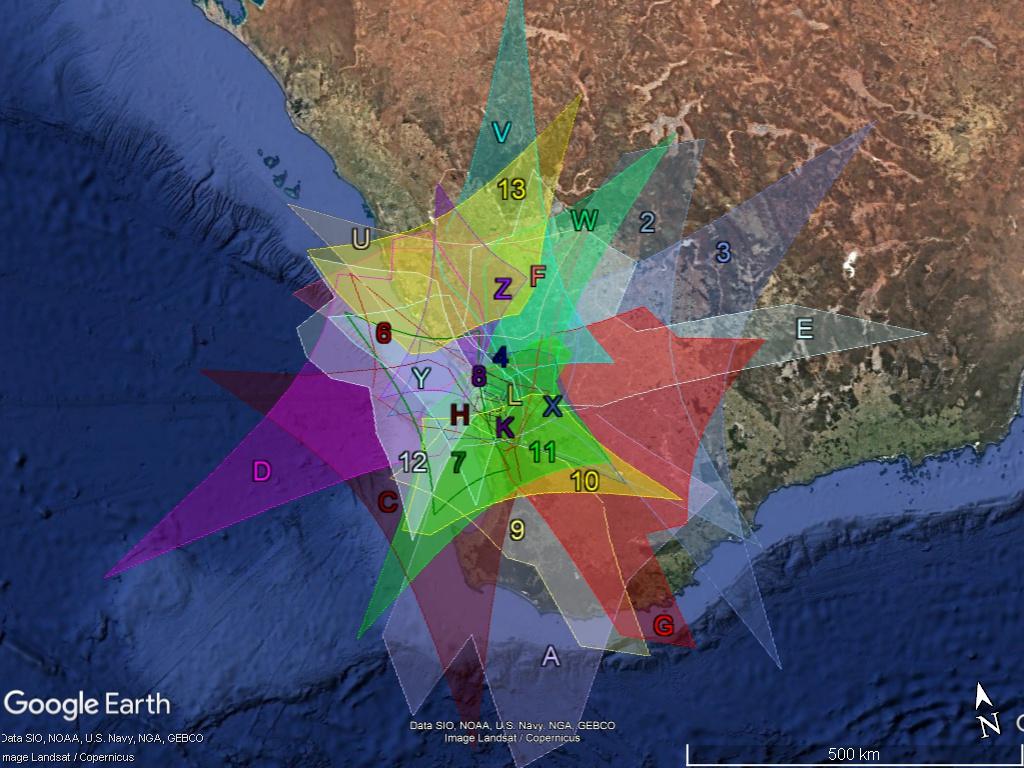
Figure 1 – GMN camera fields in 2022 intersected at 100 km elevation, for cameras active in Australia, global view on top and a close up for West Australia at bottom. The letter code refers to the camera ID, e.g., D = AU000D.
2.2 Belgium
Belgium had its first RMS cameras operational in early 2019. Figure 2 shows the GMN coverage at the end of 2022 for Belgium. The map can be compared with the situation end of 2021 in the previous GMN annual report (Roggemans, 2022). The number of RMS cameras has doubled from 10 to 20, good for 23174 orbits in 2022 against 8582 orbits previous year.
Most of the Belgian RMS cameras are being installed for the reinforcement of the CAMS-BeNeLux network. For this purpose, the 6 mm lenses are preferred which have less distortion than the 3.6 mm. All cameras are pointed in function of an optimal geographic overlap. 2022 brought exceptional many clear nights and 2022 ended as the best year ever in 11 years for CAMS-BeNeLux, much thanks to the extra coverage created by the RMS cameras.
To view and toggle on/off camera fields yourself in Google Earth Pro (freeware) :
- All aggregated kml files for Belgium status end of 2022;
- All aggregated kml files for GMN status end of 2022;
- All current status kml files at 25 km, 70 km and 100 km elevation (absolute height, to be corrected to clamped-to-ground);
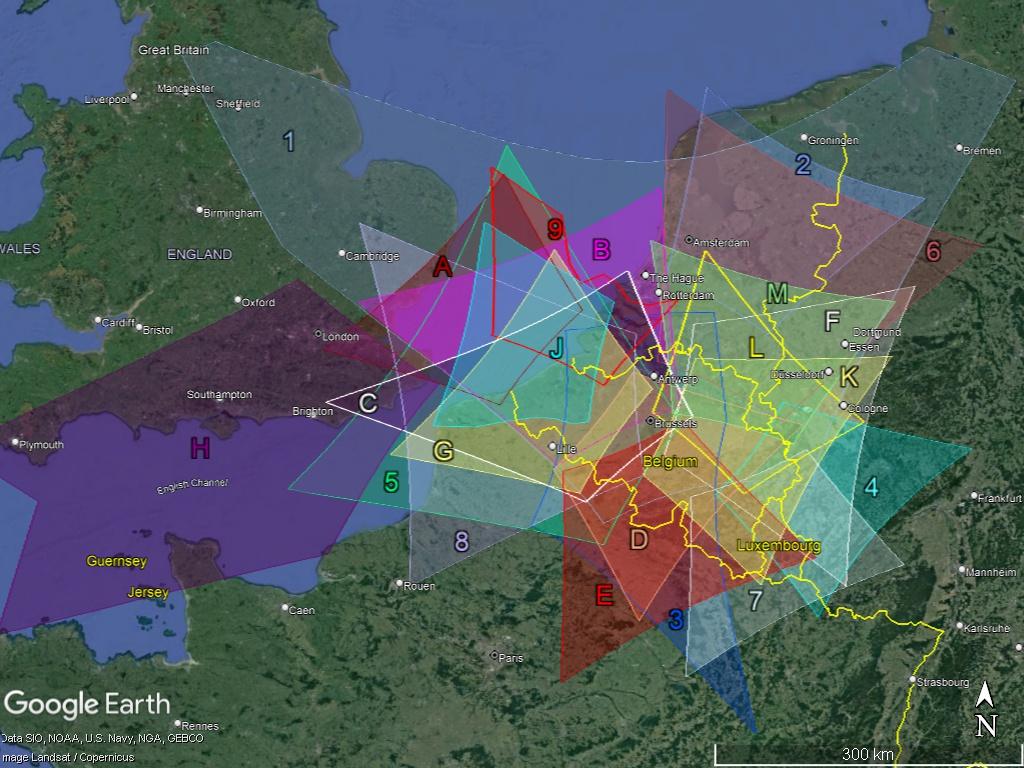
Figure 2 – GMN camera fields intersected at 100 km elevation, for 20 cameras installed in Belgium, status 2022. The letter code refers to the camera ID, e.g., M = BE000M.
2.3 Brazil
The BRAMON network had its first two RMS cameras getting paired meteors in October 2020 good for 40 orbits with two cameras in the last quarter of 2020. The network expanded to 13 operational cameras, good for 1645 orbits in 2021. In 2022 the number of cameras increased to 20 and 2760 orbits were obtained. The number of paired meteors will increase once the overlap of the camera FoVs will be optimized. Several cameras do not yet have overlap from multi-station partners (Figure 3). One camera installed in the north (BR0010) is outside of the map.
To view and toggle on/off camera fields yourself in Google Earth Pro (freeware) :
- All aggregated kml files for Brazil status end of 2022;
- All aggregated kml files for GMN status end of 2022;
- All current status kml files at 25 km, 70 km and 100 km elevation (absolute height, to be corrected to clamped-to-ground);
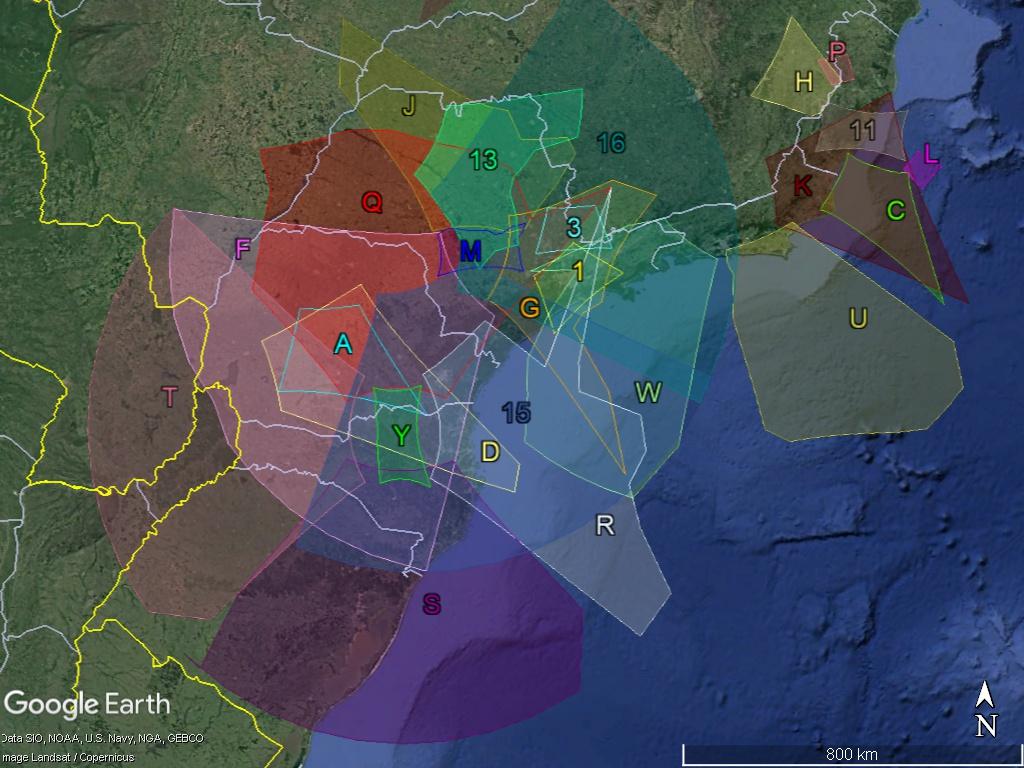
Figure 3 – GMN camera fields in 2022 intersected at 100 km elevation, for 20 cameras active in Brazil. The letter code refers to the camera ID, e.g., S = BR000S.
2.4 Bulgaria
Bulgaria got its first RMS camera operational in June 2021 and got three cameras installed by the end of 2021 of which two had 419 multi-station events. In April 2022 a 4th RMS and in July 2022, two extra cameras were pointed. With 6 cameras in 2022, 3877 orbits could be collected. One camera, BG0006, was only active in July 2022 and is not included on the map (Figure 4).
To view and toggle on/off camera fields yourself in Google Earth Pro (freeware) :
- All aggregated kml files for Bulgaria status end of 2022;
- All aggregated kml files for GMN status end of 2022;
- All current status kml files at 25 km, 70 km and 100 km elevation (absolute height, to be corrected to clamped-to-ground);
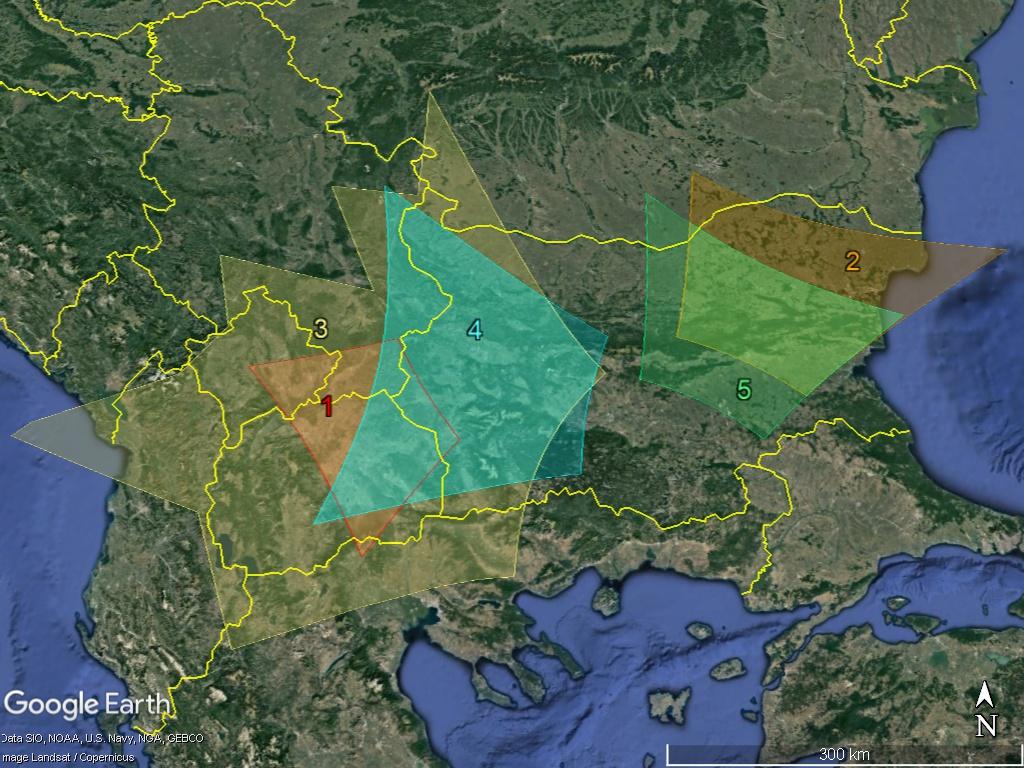
Figure 4 – GMN camera fields in 2022 intersected at 100 km elevation, for 5 cameras active in Bulgaria. The code refers to the camera ID, e.g., 4 = BG0004.
2.5 Canada
The Canadian GMN network got its first 5 operational RMS cameras providing orbits in June 2019 and expanded to 11 cameras by the end of 2019, good for 3599 orbits. The number of cameras increased to 18 by the end of 2020 with 10815 orbits registered. During 2021, 15 new camera IDs appeared in the list and 8809 orbits were recorded with 29 cameras in 2021, less than the year before despite the extra cameras. The number of cameras doubled from 29 to 58 in 2022 resulting in 16232 orbits. Some cameras in New Found Land still wait for a multi-station partner (Figure 5). Most cameras are installed in Quebec and Southern Ontario, ideal for volunteers south of the Canadian border in the US (Figure 6). A small network in the Calgary region of Alberta had its first orbits in 2022 (Figure 7).
To view and toggle on/off camera fields yourself in Google Earth Pro (freeware) :
- All aggregated kml files for Canada status end of 2022;
- All aggregated kml files for Canada WE status end of 2022;
- All aggregated kml files for Canada WT status end of 2022;
- All aggregated kml files for GMN status end of 2022;
- All current status kml files at 25 km, 70 km and 100 km elevation (absolute height, to be corrected to clamped-to-ground);
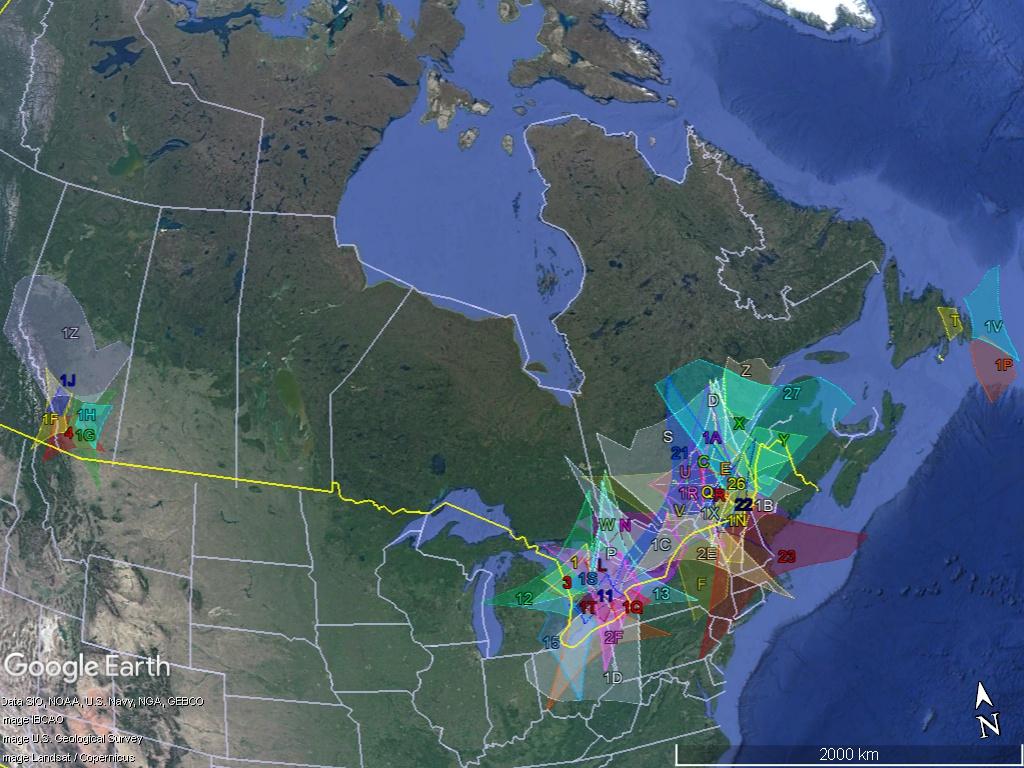
Figure 5 – GMN camera fields in 2022 intersected at 100 km elevation, for cameras active in Canada, overview.
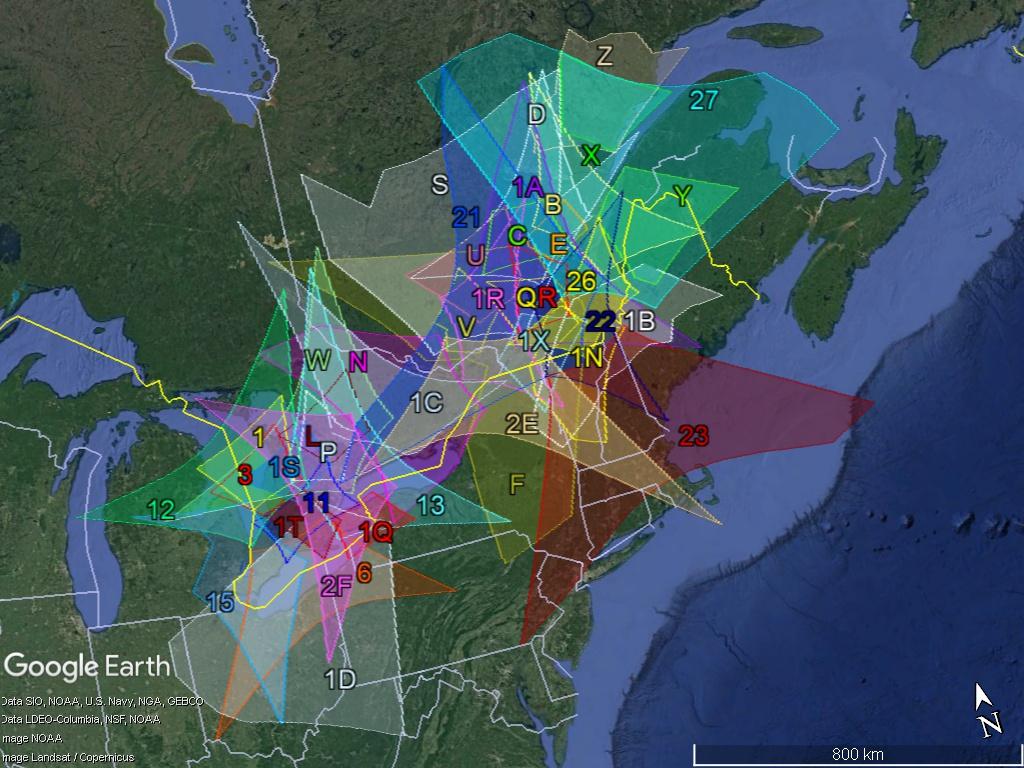
Figure 6 – GMN camera fields intersected at 100 km elevation, for cameras active in Canada, Quebec and Ontario. The letter code refers to the camera ID, e.g., 1D = CA001D.
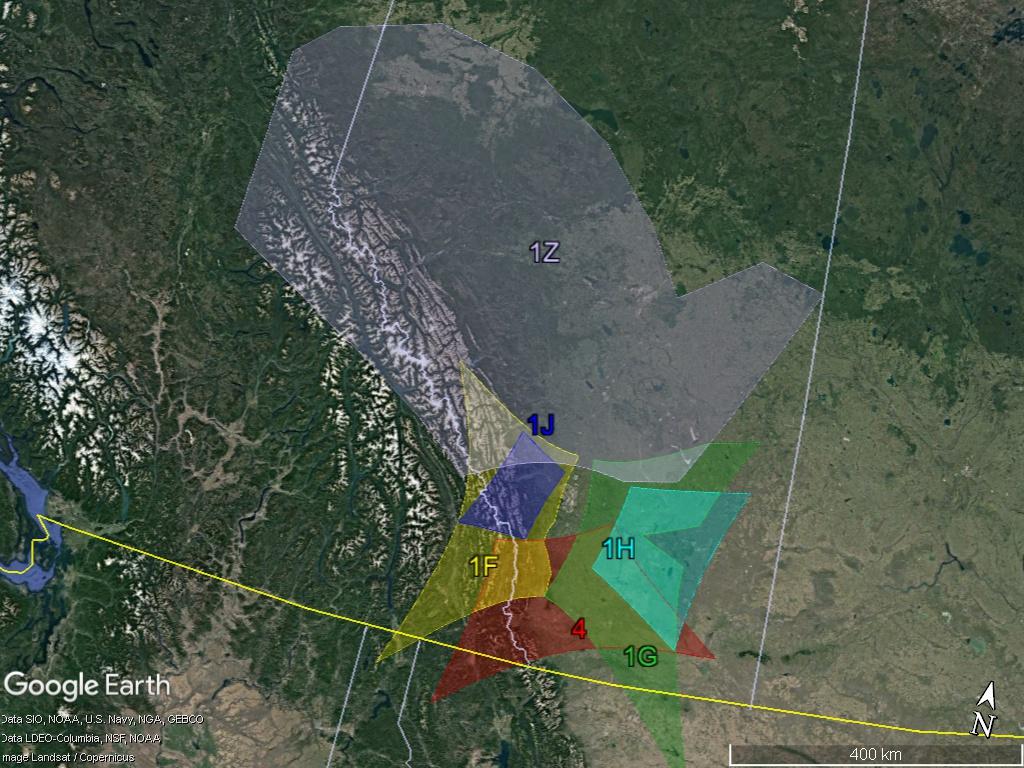
Figure 7 – GMN camera fields intersected at 100 km elevation, for cameras active in Canada, Alberta. The letter code refers to the camera ID, e.g., 1F = CA001F.
2.6 Croatia
Croatia was the first European country in May 2019 to harvest orbits with three RMS cameras. By the end of 2019 Croatia had already 23 cameras successfully contributing in triangulations, good for 12221 multi-station events. The number of cameras increased to 32 in 2020 resulting in 35099 orbits that year. 38370 multi-station events were recorded in 2021 with 48 cameras. Last year was slightly less successful with 31329 orbits and 45 operational cameras.
Croatia plays a major role in the coordination of GMN, maintaining the IStream website, offering RMS cameras plug & play for sale and providing technical assistance to participants in the GMN project worldwide. The Croatian cameras provide a huge overlap on the neighboring countries (Figure 8). A number of Croatian cameras have a very small FoV to register fainter meteors with higher positional accuracy. For clarity, these camera fields are shown in close-up in Figure 9.
To view and toggle on/off camera fields yourself in Google Earth Pro (freeware) :
- All aggregated kml files for Croatia status end of 2022;
- All aggregated kml files for GMN status end of 2022;
- All current status kml files at 25 km, 70 km and 100 km elevation (absolute height, to be corrected to clamped-to-ground);
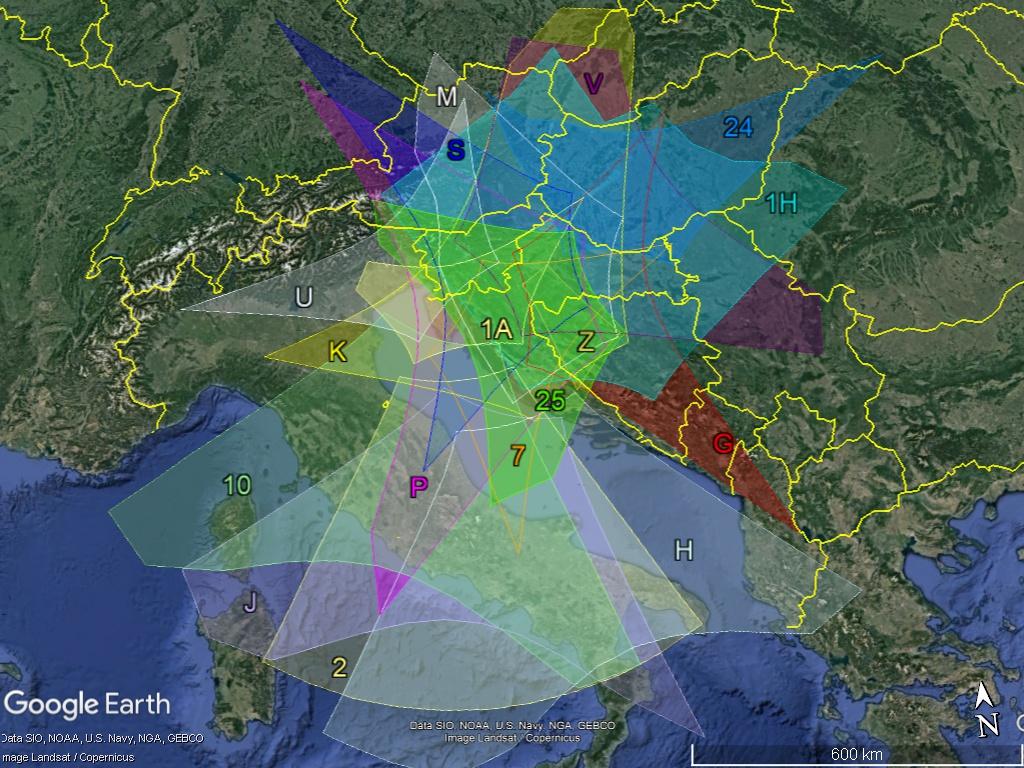
Figure 8 – GMN camera fields intersected at 100 km elevation, for cameras installed in Croatia, status 2022. The code refers to the camera ID, e.g., M = HR000M.
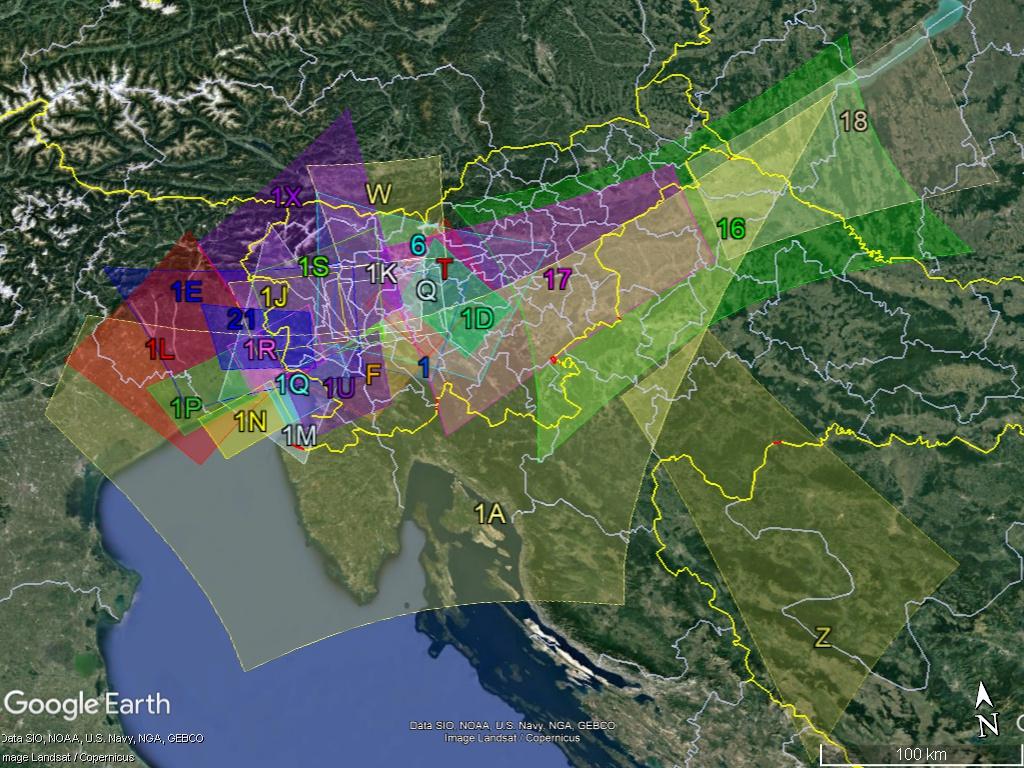
Figure 9 – Close-up for small GMN camera fields in 2022 intersected at 100 km elevation, for cameras active in Croatia.
2.7 Czech Republic
The number of operational cameras in the Czech Republic increased from 4 in 2021 to 6 in 2022. In total 2490 orbits were collected in 2022 against 464 in 2021 and 163 in 2020 with 3 cameras. The central location of the country in Europe and the increasing number of cameras installed in neighboring countries determine to a large extend the number of paired meteors (Figure 10). The Czech Republic was the driving force behind the former EDMOND network and there is good hope to see a revival of video meteor work in this part of Europe.
To view and toggle on/off camera fields yourself in Google Earth Pro (freeware) :
- All aggregated kml files for Czech Republic status end of 2022;
- All aggregated kml files for GMN status end of 2022;
- All current status kml files at 25 km, 70 km and 100 km elevation (absolute height, to be corrected to clamped-to-ground);
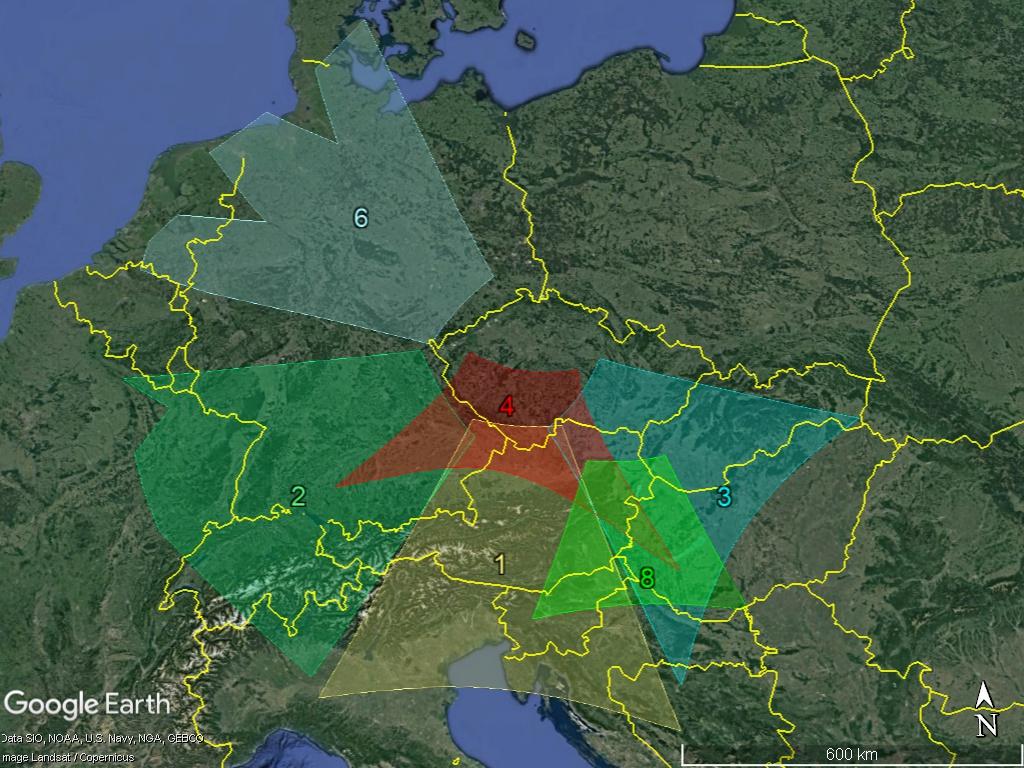
Figure 10 – GMN camera fields in 2022, intersected at 100 km elevation, for cameras active in the Czech Republic. The code refers to the camera ID, e.g., 1 = CZ0001.
2.8 Denmark
In October 2022 a first GMN camera got operational in Denmark, good for 55 orbits in 2022 with paired meteors mainly with German and Dutch cameras and occasionally some British and a Belgian camera (Figure 11).
To view and toggle on/off camera fields yourself in Google Earth Pro (freeware) :
- All aggregated kml files for Denmark status end of 2022;
- All aggregated kml files for GMN status end of 2022;
- All current status kml files at 25 km, 70 km and 100 km elevation (absolute height, to be corrected to clamped-to-ground);
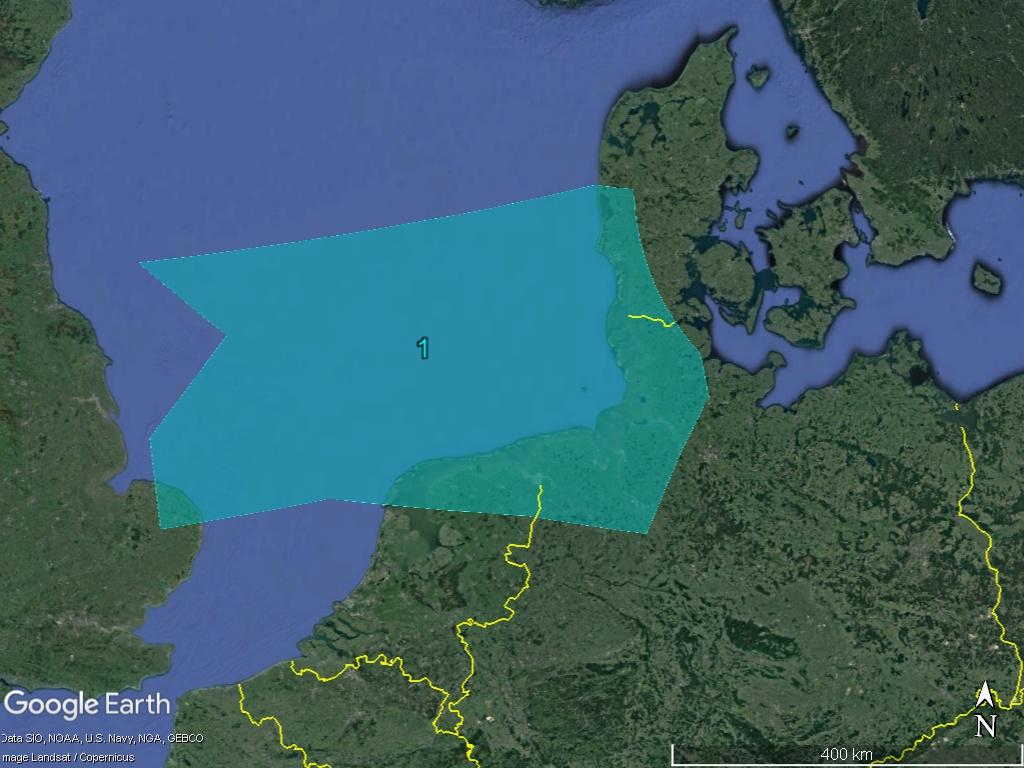
Figure 11 – GMN camera field in 2022 intersected at 100 km elevation, for cameras active in Denmark. The code refers to the camera ID, e.g., 1 = DK0001.
2.9 Finland
In October 2022 the first GMN cameras became operational at two sites in Finland, with 41 orbits as a first result (Figure 12). There is a long tradition in Finland with meteor photography and all-sky fireball surveys. Hopefully the video meteor work will continue this tradition.
To view and toggle on/off camera fields yourself in Google Earth Pro (freeware) :
- All aggregated kml files for Finland status end of 2022;
- All aggregated kml files for GMN status end of 2022;
- All current status kml files at 25 km, 70 km and 100 km elevation (absolute height, to be corrected to clamped-to-ground);
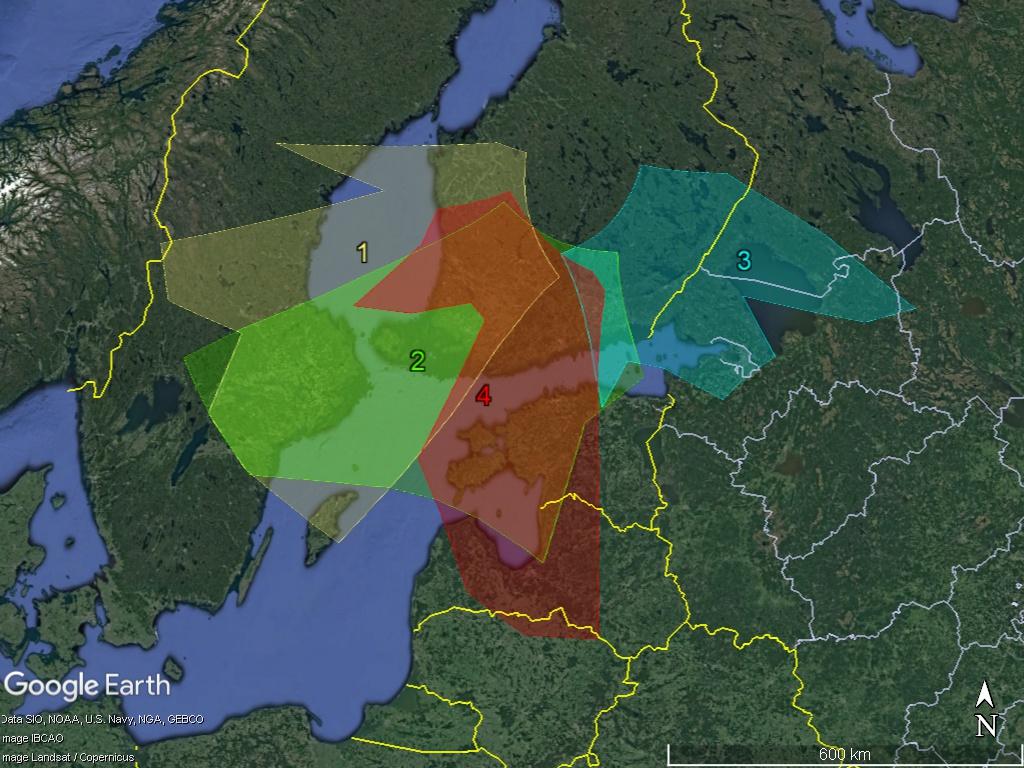
Figure 12 – GMN camera fields in 2022 intersected at 100 km elevation, for cameras active in Finland. The code refers to the camera ID, e.g., 3 = FI0003.
2.10 France
The number of French RMS cameras had increased from 10 to 14 devices in 2021, good for 5601 multi-station events in 2021 against 3176 events in 2020 with 10 cameras. In 2022 there were 16 RMS cameras in France which contributed 11990 orbits. In total 20 RMS cameras were installed since March 2020, but 4 of them did not function anymore in 2022. The Southwestern part of France so far got no GMN installed. Extra cameras in the west of France would benefit from the coverage by British sites and in the southwest from Spanish GMN cameras (Figure 13).
To view and toggle on/off camera fields yourself in Google Earth Pro (freeware) :
- All aggregated kml files for France status end of 2022;
- All aggregated kml files for GMN status end of 2022;
- All current status kml files at 25 km, 70 km and 100 km elevation (absolute height, to be corrected to clamped-to-ground);
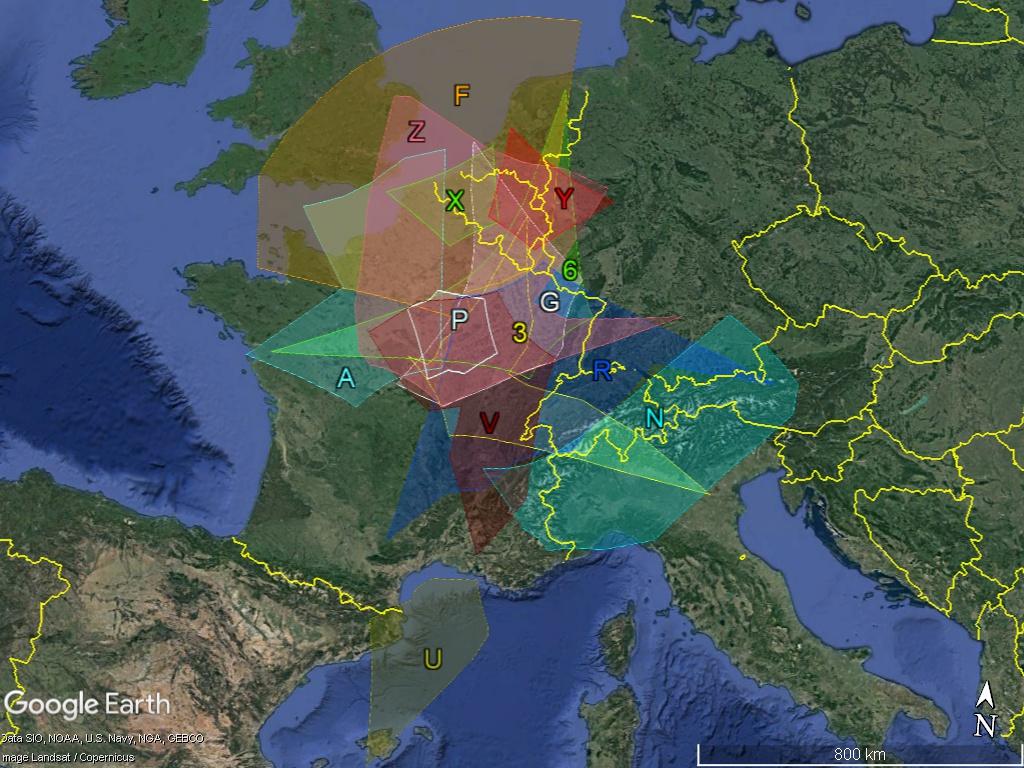
Figure 13 – GMN camera fields in 2022 intersected at 100 km elevation, for cameras active in France. The code refers to the camera ID, e.g., P = FR000P.
2.11 Germany
The first GMN camera in Germany had its first orbits in August 2019 with Belgian GMN cameras. By end of 2019 there were 4 GMN cameras in Germany, good for 200 orbits. The number of cameras increased to 10 and the numbers of orbits to 3963 in 2020. With 12 cameras in 2021, 7009 orbits were collected. In 2022 some extra devices were installed, with 18 cameras 9128 orbits were collected. Some GMN cameras in the North-Western part of Germany also participate in the CAMS-BeNeLux network, supporting both GMN and CAMS (Figure 14).
To view and toggle on/off camera fields yourself in Google Earth Pro (freeware) :
- All aggregated kml files for Germany status end of 2022;
- All aggregated kml files for GMN status end of 2022;
- All current status kml files at 25 km, 70 km and 100 km elevation (absolute height, to be corrected to clamped-to-ground);
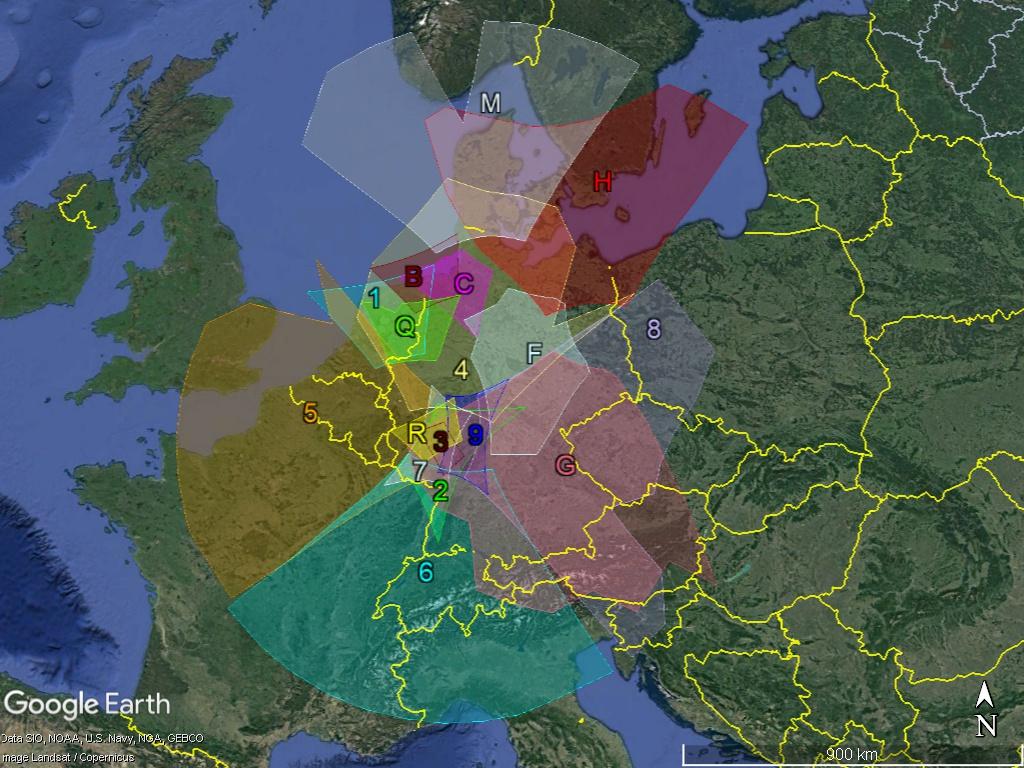
Figure 14 – GMN camera fields in 2022 intersected at 100 km elevation, for cameras active in Germany. The code refers to the camera ID, e.g., M = DE000M.
2.12 Greece
In September 2022 the first GMN camera got operational in Greece, ideally point to overlap with some Bulgarian GMN cameras, good for as many as 977 paired meteors in the 4 last months of 2022 (Figure 15).
To view and toggle on/off camera fields yourself in Google Earth Pro (freeware) :
- All aggregated kml files for Greece status end of 2022;
- All aggregated kml files for GMN status end of 2022;
- All current status kml files at 25 km, 70 km and 100 km elevation (absolute height, to be corrected to clamped-to-ground);
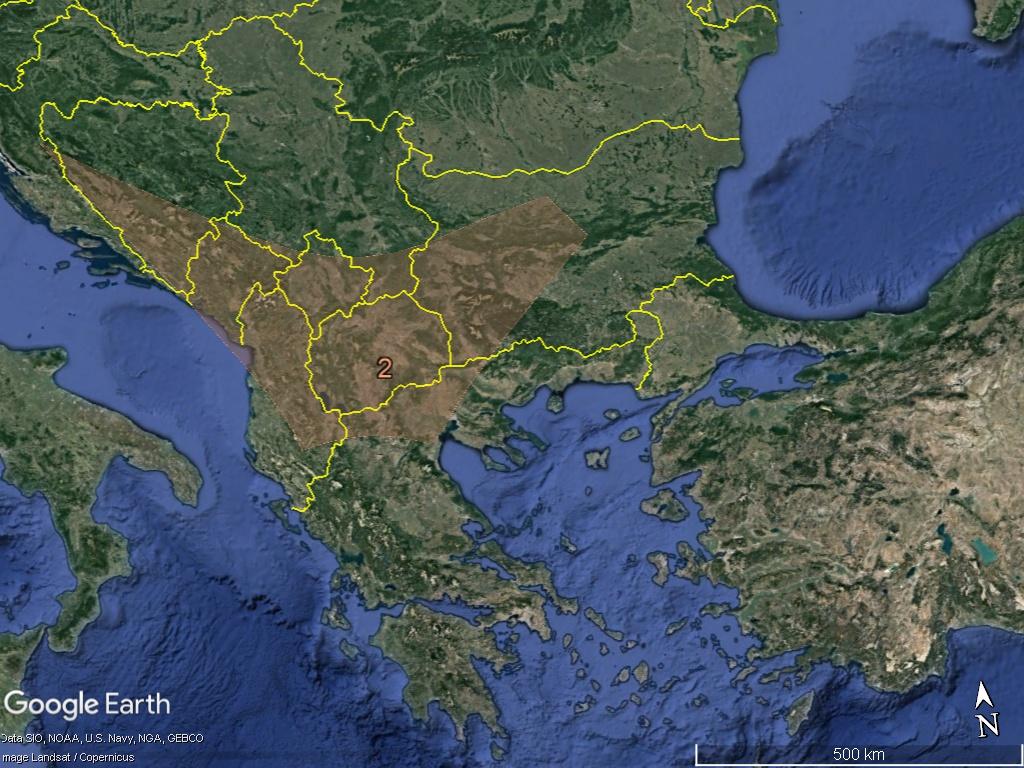
Figure 15 – GMN camera fields in 2022 intersected at 100 km elevation, for cameras active in Greece. The code refers to the camera ID, e.g., 2 = GR0002.
2.13 Hungary
A first GMN camera got operational in March 2022 in Hungary and by end of 2022, two Hungarian cameras had obtained 2114 orbits, mainly multi-station events with Croatian cameras, but also with cameras in the Czech Republic and Slovenia. Hungary has a long tradition in meteor astronomy and hopefully more GMN camera sites will get installed (Figure 16).
To view and toggle on/off camera fields yourself in Google Earth Pro (freeware) :
- All aggregated kml files for Hungary status end of 2022;
- All aggregated kml files for GMN status end of 2022;
- All current status kml files at 25 km, 70 km and 100 km elevation (absolute height, to be corrected to clamped-to-ground);
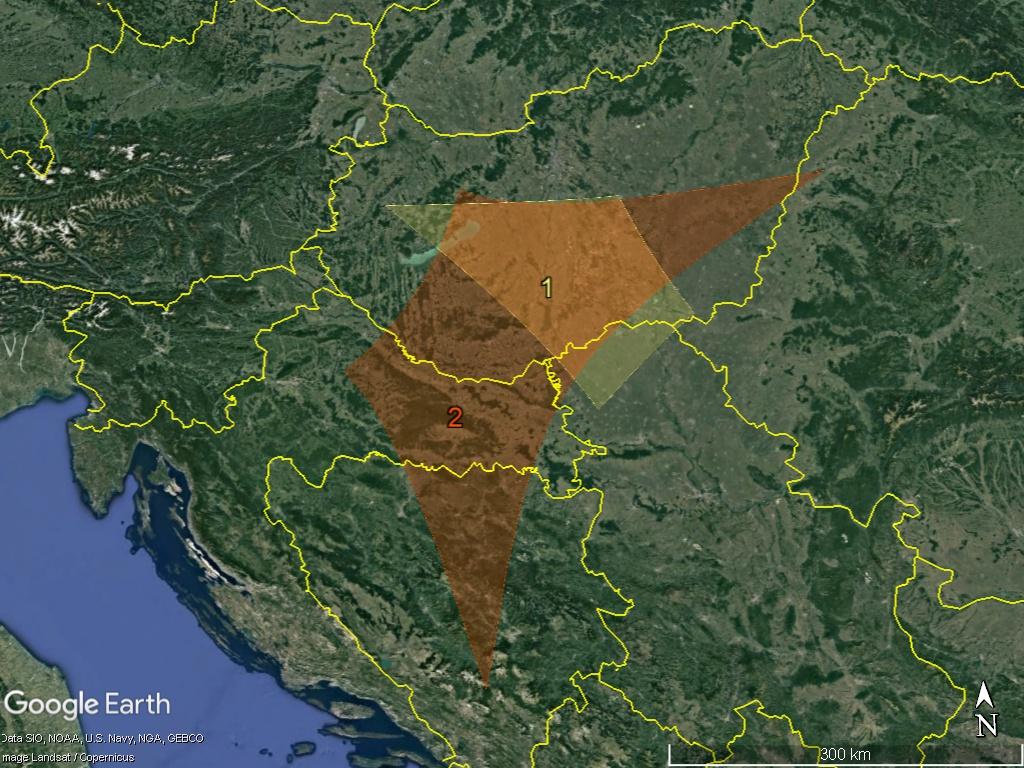
Figure 16 – GMN camera fields in 2022 intersected at 100 km elevation, for cameras active in Hungary. The code refers to the camera ID, e.g., 2 = HU0002.
2.14 Ireland
Ireland got a first GMN operational in October 2020 and second one a month later, good for 120 orbits in 2020. With 3 cameras in 2021 the number of orbits increased to 424. The number of orbits increased a lot to 3490 in 2022 with 5 GMN cameras (Figure 17). Most of the paired meteors were obtained thanks to the overlap provided by GMN cameras in the UK. Many attributed GMN camera IDs don’t show up on the map yet as several new cameras are expected to get installed in 2023.
To view and toggle on/off camera fields yourself in Google Earth Pro (freeware) :
- All aggregated kml files for Ireland status end of 2022;
- All aggregated kml files for GMN status end of 2022;
- All current status kml files at 25 km, 70 km and 100 km elevation (absolute height, to be corrected to clamped-to-ground);
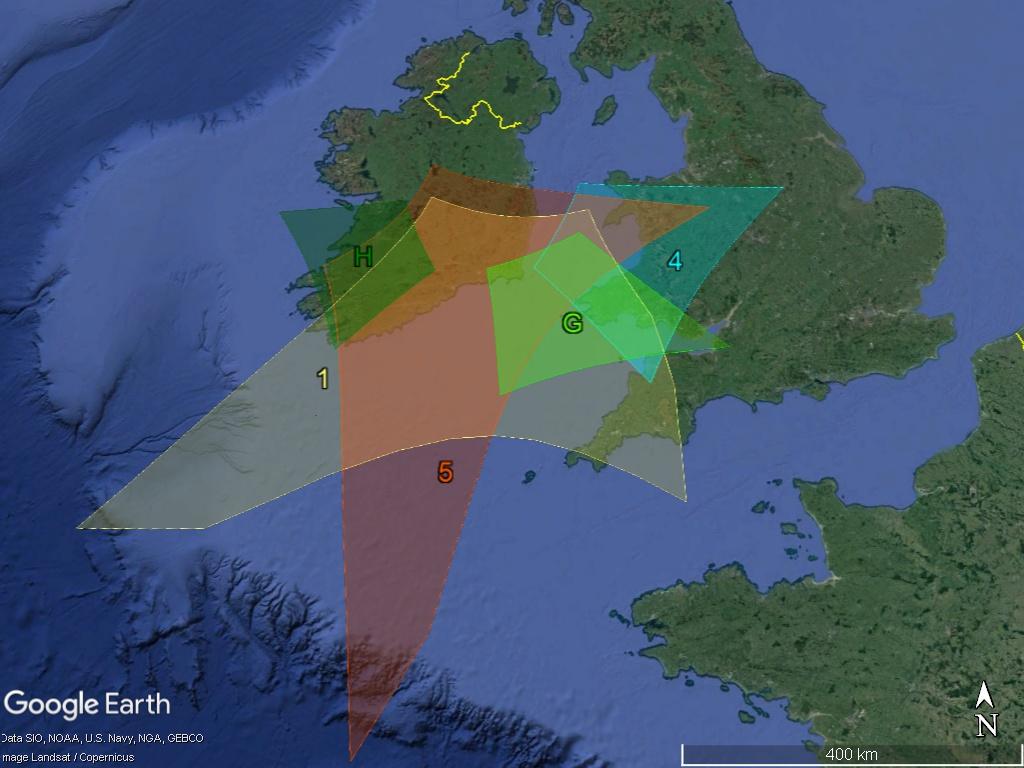
Figure 17 – GMN camera fields in 2022 intersected at 100 km elevation, for cameras active in Ireland. The code refers to the camera ID, e.g., G = IE000G.
2.15 Israel
Israel got its first 3 GMN cameras installed in November 2020, good for 553 orbits that year. In 2021 3 extra cameras got installed which collected 2009 orbits. In 2022 the cameras did not provide orbits during some time and one camera was discontinued. With 5 cameras still 975 orbits could be obtained (Figure 18).
To view and toggle on/off camera fields yourself in Google Earth Pro (freeware) :
- All aggregated kml files for Israel status end of 2022;
- All aggregated kml files for GMN status end of 2022;
- All current status kml files at 25 km, 70 km and 100 km elevation (absolute height, to be corrected to clamped-to-ground);
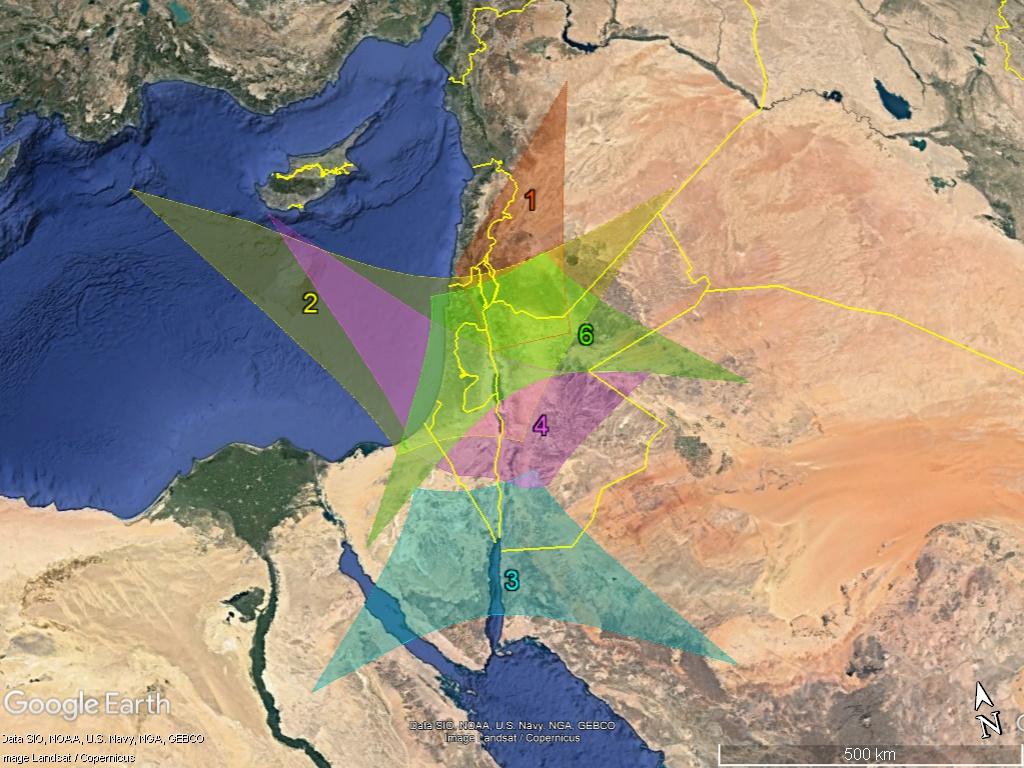
Figure 18 – GMN camera fields in 2022 intersected at 100 km elevation, for cameras active in Israel. The code refers to the camera ID, e.g., 3 = IL0003.
2.16 Italy
Italy got its first GMN camera installed and contributing to orbits in October 2019, good for 862 orbits in 2019. Italy remained with one GMN camera in 2020, which had as many as 5384 paired meteors with Croatian and Slovenian cameras. Italy increased its number of cameras from 1 to 5 and these cameras were involved in 5447 multi-station events in 2021. One camera IT0005 functioned only in September 2021. An extra camera was added in Bologna in 2022 and last year 5 GMN cameras collected 4943 orbits (Figure 19).
To view and toggle on/off camera fields yourself in Google Earth Pro (freeware) :
- All aggregated kml files for Italy status end of 2022;
- All aggregated kml files for GMN status end of 2022;
- All current status kml files at 25 km, 70 km and 100 km elevation (absolute height, to be corrected to clamped-to-ground);
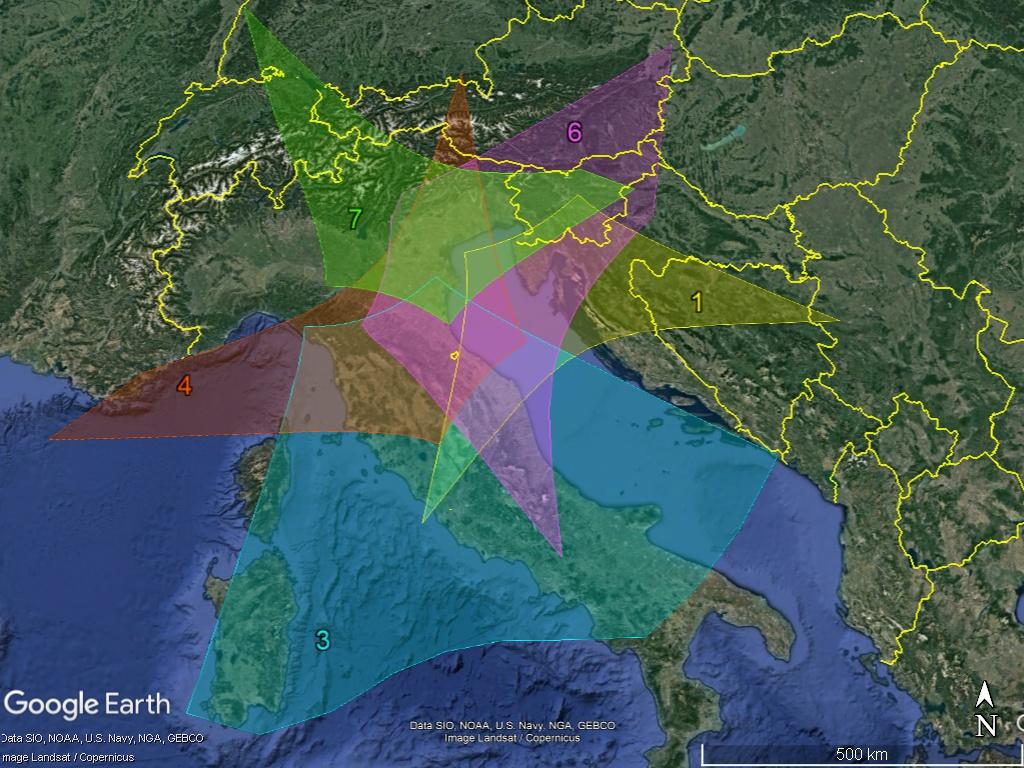
Figure 19 – GMN camera fields in 2022 intersected at 100 km elevation, for cameras active in Italy. The code refers to the camera ID, e.g., 3 = IT0003.
2.17 Japan
A first GMN camera got installed in Japan in 2022, waiting for some multi-station partners at suitable distance for triangulation. When more GMN cameras get installed in Japan, there is an interesting opportunity to obtain paired meteors with South Korean GMN cameras (Figure 20).
To view and toggle on/off camera fields yourself in Google Earth Pro (freeware) :
- All aggregated kml files for Japan status end of 2022;
- All aggregated kml files for GMN status end of 2022;
- All current status kml files at 25 km, 70 km and 100 km elevation (absolute height, to be corrected to clamped-to-ground);
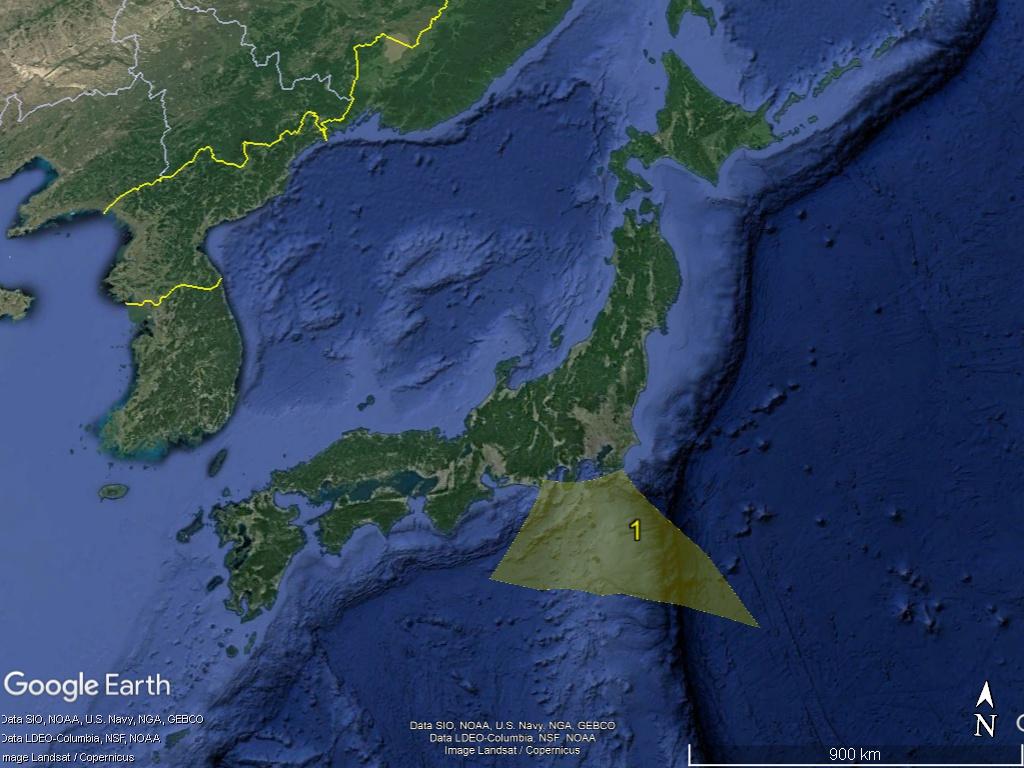
Figure 20 – GMN camera fields in 2022 intersected at 100 km elevation, for cameras active in Japan. The code refers to the camera ID, e.g., 1 = JP0001.
2.18 Korea (South)
A most impressive deployment of GMN cameras took place in 2022 in South Korea with a first few cameras obtaining orbits in September and as many as 47 GMN cameras installed in November and December 2022. The cameras were installed and pointed to obtain an optimal overlap (Figures 21 and 22), resulting in 7711 orbits!
To view and toggle on/off camera fields yourself in Google Earth Pro (freeware) :
- All aggregated kml files for Korea (South) status end of 2022;
- All aggregated kml files for GMN status end of 2022;
- All current status kml files at 25 km, 70 km and 100 km elevation (absolute height, to be corrected to clamped-to-ground);
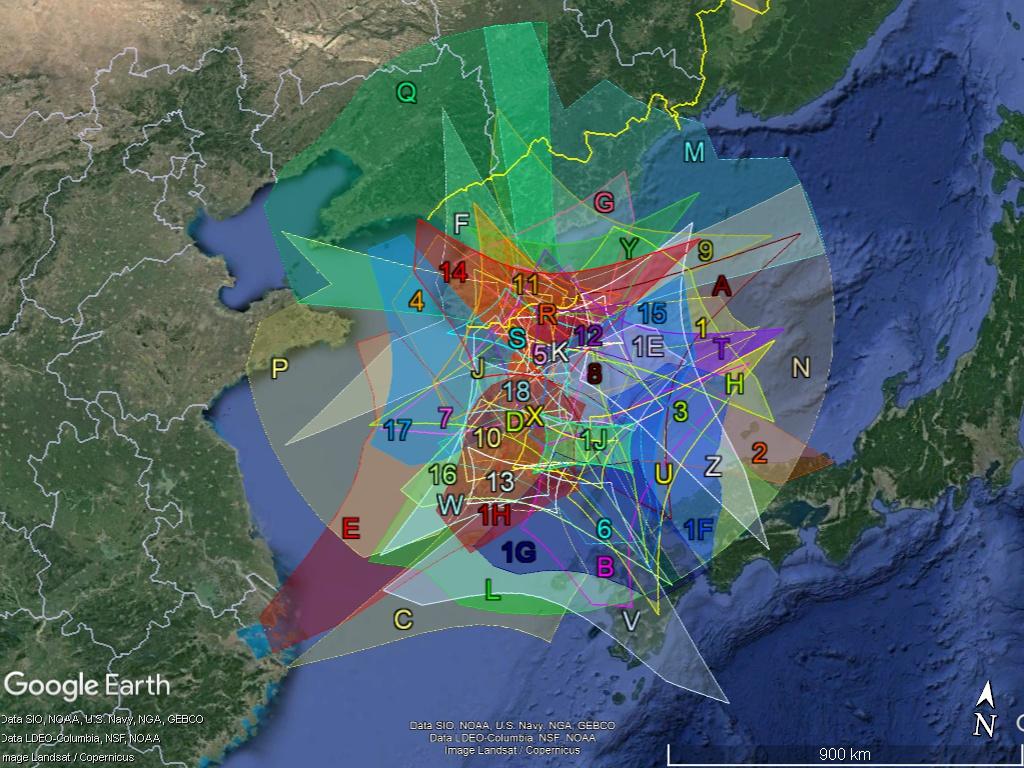
Figure 21 – GMN camera fields in 2022 intersected at 100 km elevation, for cameras active in South Korea. The code refers to the camera ID, e.g., E = KR000E.
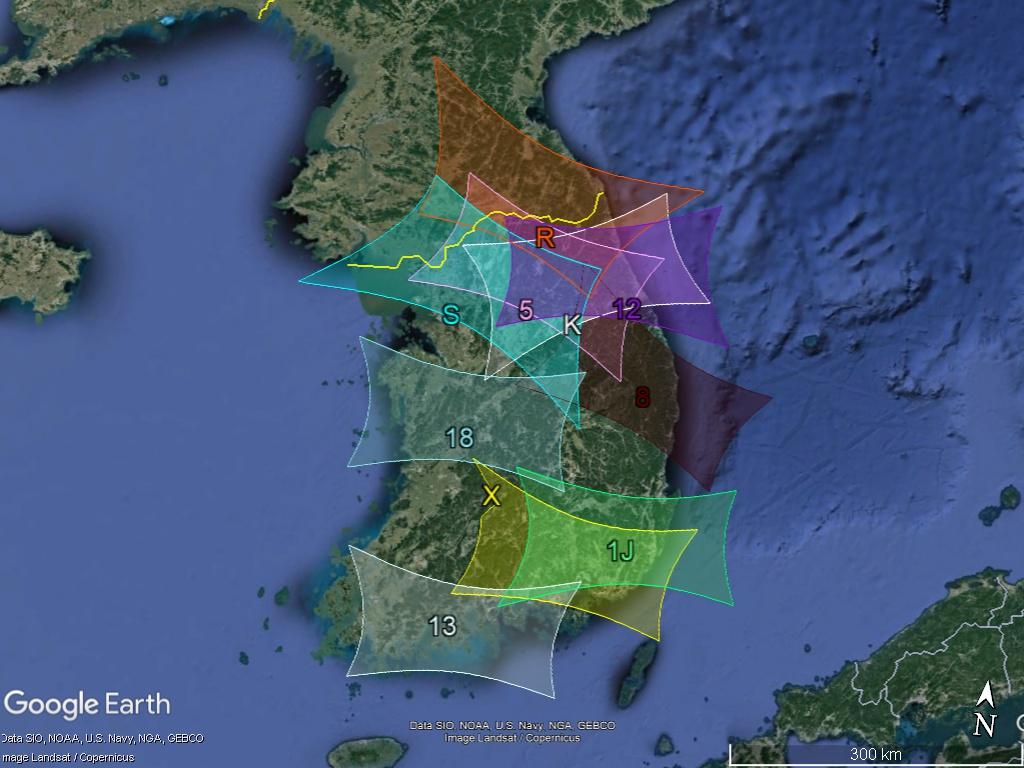
Figure 22 – Close-up for small GMN camera fields in 2022 intersected at 100 km elevation, for cameras active in Korea.
2.19 Luxembourg
In October 2022 a first GMN camera got installed in Luxembourg contributing to 622 orbits combining with Belgian, Dutch, French, German and even Czech GMN cameras (Figure 23).
To view and toggle on/off camera fields yourself in Google Earth Pro (freeware) :
- All aggregated kml files for Luxembourg status end of 2022;
- All aggregated kml files for GMN status end of 2022;
- All current status kml files at 25 km, 70 km and 100 km elevation (absolute height, to be corrected to clamped-to-ground);
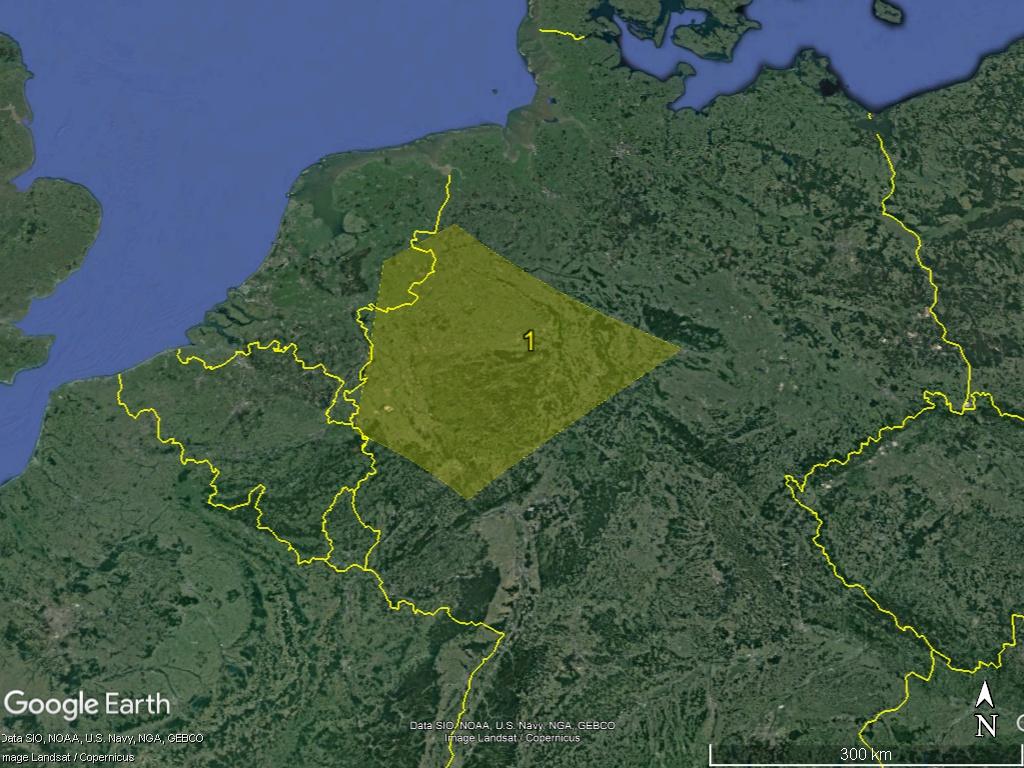
Figure 23 – GMN camera fields in 2022 intersected at 100 km elevation, for cameras active in Luxembourg. The code refers to the camera ID, e.g., 1 = LU0001.
2.20 Mexico
An impressive deployment of GMN cameras took place in Mexico in 2022. The first few installed cameras obtained the first orbits in February 2022 and soon 12 cameras got installed with a good overlap (Figure 24). A total of 1769 meteor orbits could be collected.
To view and toggle on/off camera fields yourself in Google Earth Pro (freeware) :
- All aggregated kml files for Mexico status end of 2022;
- All aggregated kml files for GMN status end of 2022;
- All current status kml files at 25 km, 70 km and 100 km elevation (absolute height, to be corrected to clamped-to-ground);
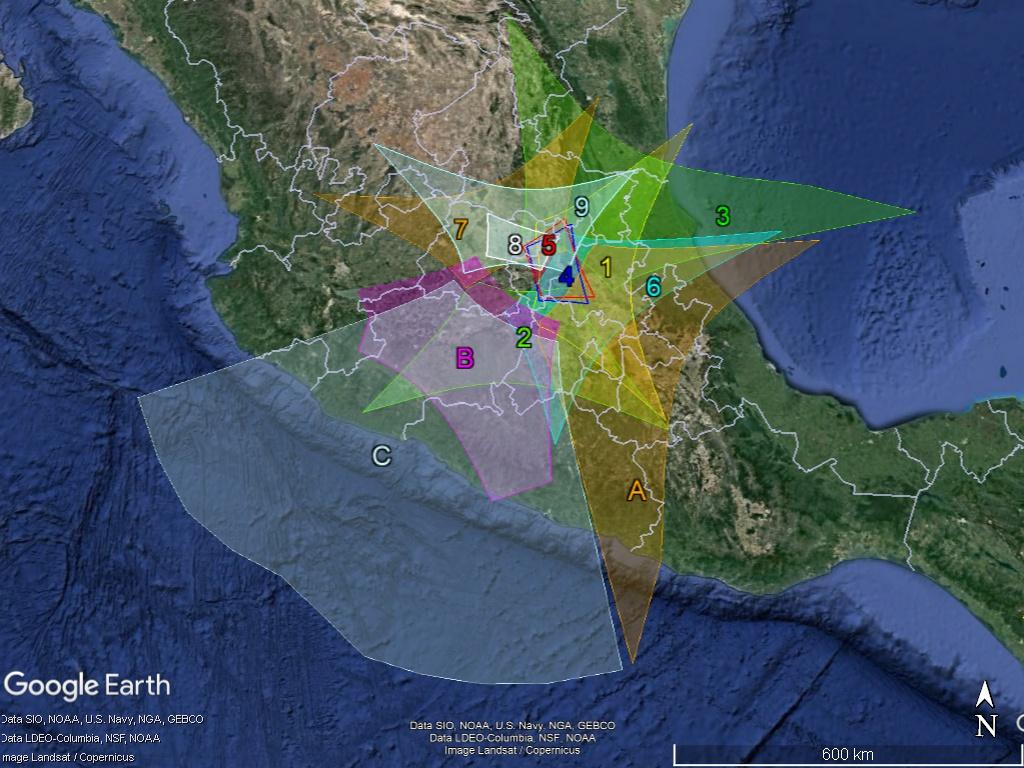
Figure 24 – GMN camera fields in 2022 intersected at 100 km elevation, for cameras active in Mexico. The code refers to the camera ID, e.g., C = MX000C.
2.21 Malaysia
A first GMN camera had been installed in Malaysia in 2021 waiting for coverage from cameras installed at a suitable distance to get good triangulations. Some extra cameras got installed in 2022 and in June 2022 the first orbits were obtained. With 3 cameras 50 orbits were obtained. With some extra camera coverage, the number of orbits will increase drastically.
To view and toggle on/off camera fields yourself in Google Earth Pro (freeware) :
- All aggregated kml files for Malaysia status end of 2022;
- All aggregated kml files for GMN status end of 2022;
- All current status kml files at 25 km, 70 km and 100 km elevation (absolute height, to be corrected to clamped-to-ground);
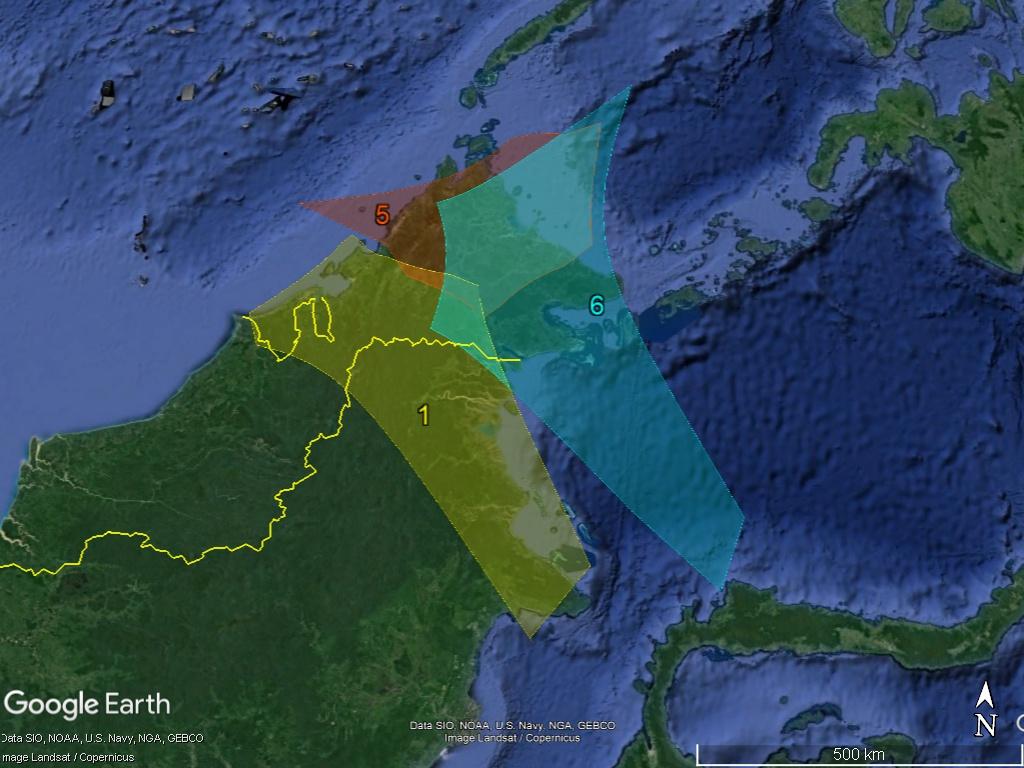
Figure 25 – GMN camera fields in 2022 intersected at 100 km elevation, for cameras active in Malaysia. The code refers to the camera ID, e.g., 5 = MY0005.
2.22 Netherlands
The Netherlands started collecting orbits within the GMN in August 2019 and had 278 orbits in its first year. The number of GMN cameras increased to 11 in 2020 with 4337 orbits as result. The number of cameras remained unchanged in 2021 but the better overlap from neighboring countries resulted in 7605 orbits. Some cameras dropped off in 2022 and few new got installed, resulting in 9139 orbits with 13 cameras (Figure 26). Dutch cameras get mainly multi-station coverage from cameras in Belgium, Germany, the UK and recently also Denmark.
To view and toggle on/off camera fields yourself in Google Earth Pro (freeware) :
- All aggregated kml files for the Netherlands status end of 2022;
- All aggregated kml files for GMN status end of 2022;
- All current status kml files at 25 km, 70 km and 100 km elevation (absolute height, to be corrected to clamped-to-ground);
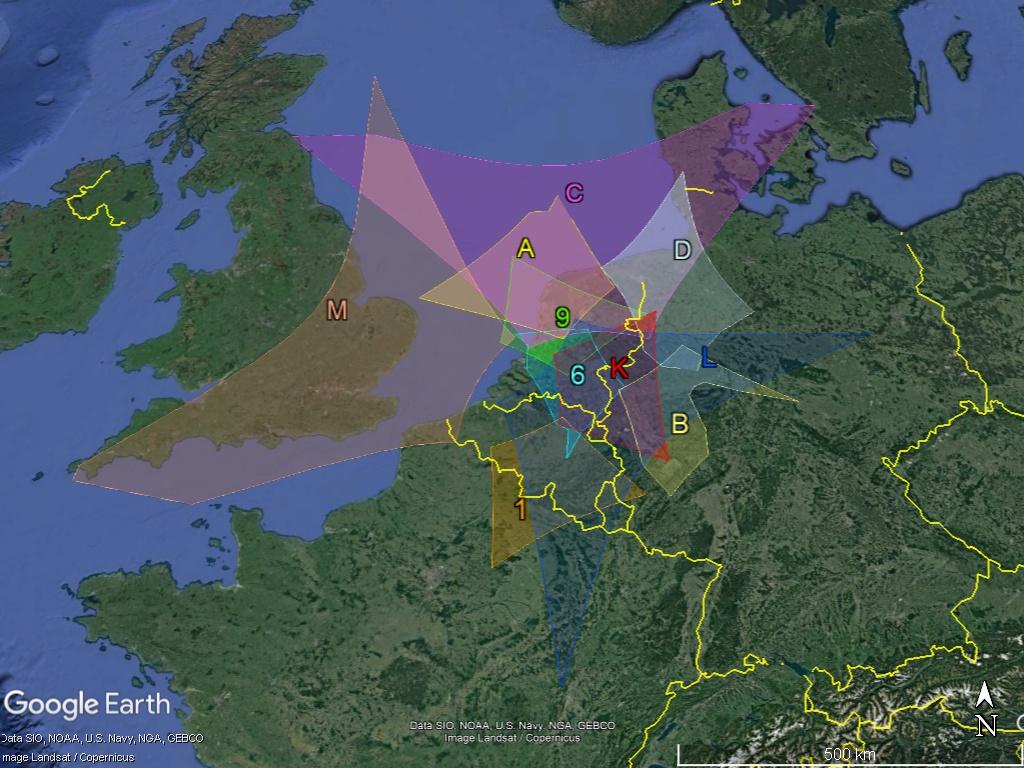
Figure 26 – GMN camera fields in 2022 intersected at 100 km elevation, for cameras active in the Netherlands. The code refers to the camera ID, e.g., C = NL000C.
2.23 New Zealand
The first two GMN cameras got installed in July 2021 in New Zealand and 1146 orbits were obtained that year. From March 2022 more cameras got installed month by month with an impressive deployment of strategically placed well pointed cameras covering the huge surface of the country. With 28 active cameras at the end of 2022, 6280 orbits were recorded, making New Zealand one of the most important providers of orbit data for the Southern Hemisphere (Figure 27).
To view and toggle on/off camera fields yourself in Google Earth Pro (freeware) :
- All aggregated kml files for New Zealand status end of 2022;
- All aggregated kml files for GMN status end of 2022;
- All current status kml files at 25 km, 70 km and 100 km elevation (absolute height, to be corrected to clamped-to-ground);
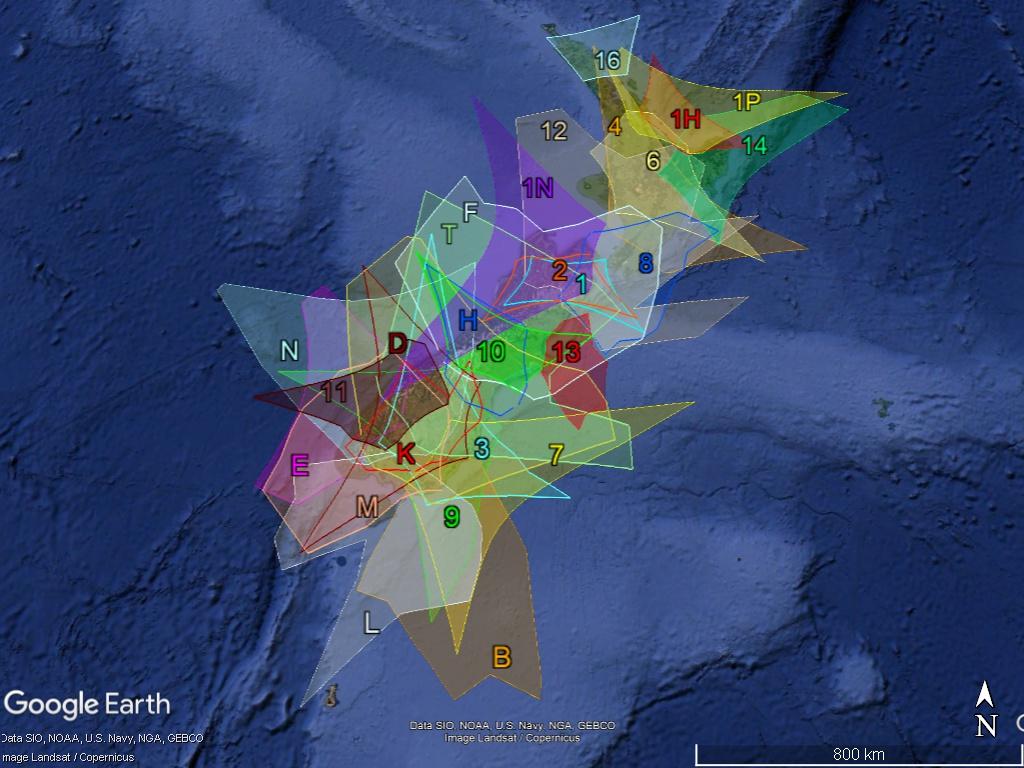
Figure 27 – GMN camera fields in 2022 intersected at 100 km elevation, for cameras active in New Zealand. The code refers to the camera ID, e.g., 1P = NZ001P.
2.24 Poland
The first GMN camera got installed in September 2020 and remained long the only Polish GMN camera. In March 2022 two extra Polish GMN cameras got their first orbits. The cameras didn’t function all the time but the number of orbits obtained increased from 67 in 2021 to 398 in 2022. Polish amateurs were major contributors to the former EDMOND network. Unfortunately, when EDMOND quit, also many former contributors quit. A revival in Poland of meteor video work combined with extra cameras in the Czech Republic and Germany would bring a major boost to the coverage of the atmosphere over Europe for the monitoring of meteor shower events within the European observing window (Figure 28).
To view and toggle on/off camera fields yourself in Google Earth Pro (freeware) :
- All aggregated kml files for Poland status end of 2022;
- All aggregated kml files for GMN status end of 2022;
- All current status kml files at 25 km, 70 km and 100 km elevation (absolute height, to be corrected to clamped-to-ground);
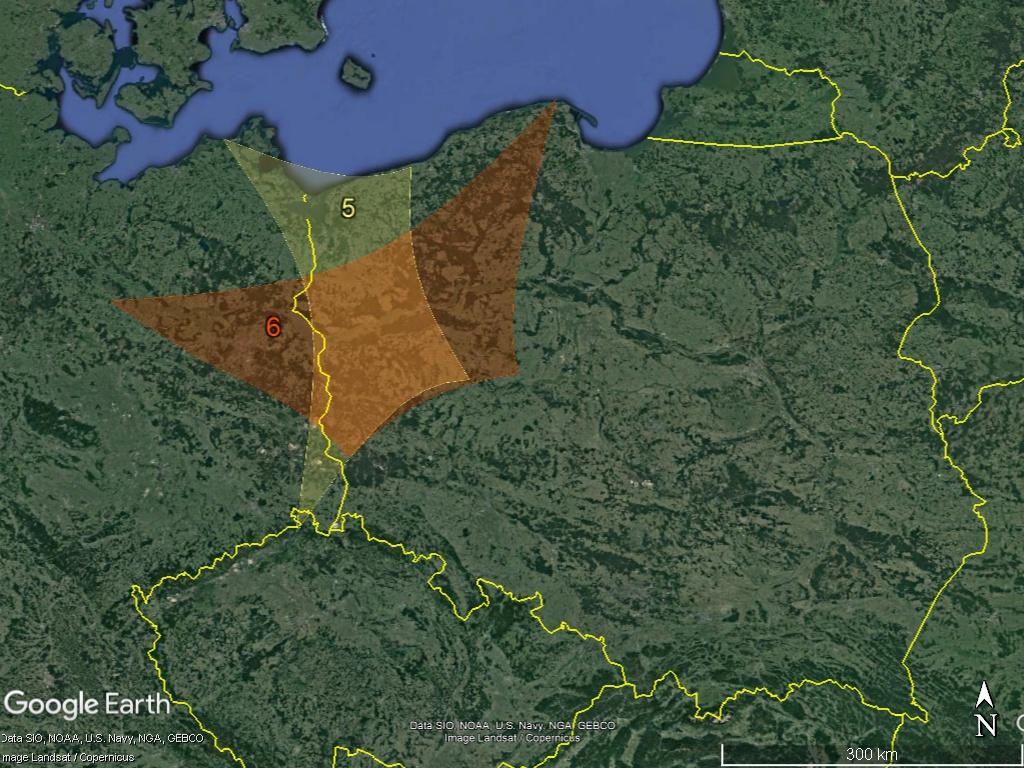
Figure 28 – GMN camera fields in 2022 intersected at 100 km elevation, for cameras active in Poland. The code refers to the camera ID, e.g., 5 = PL0005.
2.25 Portugal
A first GMN camera got its first orbits in September 2022 in Portugal. A vast coverage from GMN cameras in Spain guarantees many paired meteors (Figure 29). Any extra cameras installed in the western part of the Iberian Peninsula would significantly improve the multi-station coverage.
To view and toggle on/off camera fields yourself in Google Earth Pro (freeware) :
- All aggregated kml files for Portugal status end of 2022;
- All aggregated kml files for GMN status end of 2022;
- All current status kml files at 25 km, 70 km and 100 km elevation (absolute height, to be corrected to clamped-to-ground);
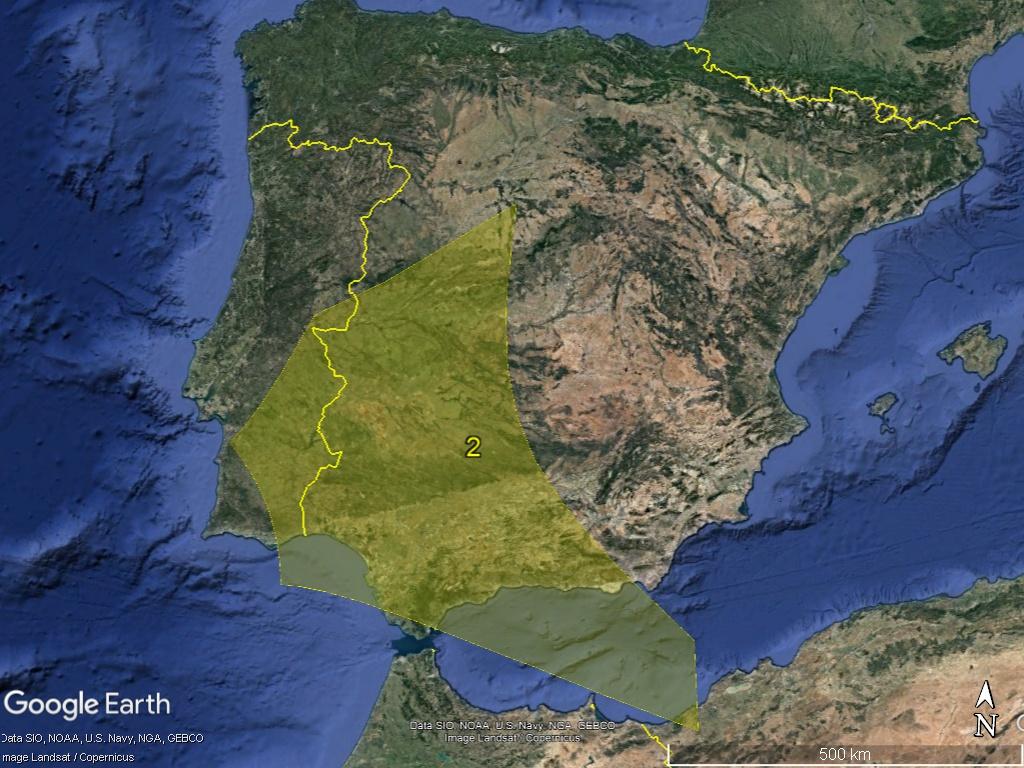
Figure 29 – GMN camera fields in 2022 intersected at 100 km elevation, for cameras active in Portugal. The code refers to the camera ID, e.g., 2 = PT0002.
2.26 Russia
The first two GMN cameras had orbits in July 2019. The first year had already 5715 orbits with 10 cameras. In 2020 the number of cameras increased to 21, good for as many as 13438 orbits. The number of RMS cameras having paired meteors remained stable at 21, but the number of orbits decreased to 6208 in 2021. Problems with the maintenance of some meteor stations reduced the number of paired observations. In 2022, 19 cameras in Russia had 5437 orbits. Some single RMS devices (Figure 30) got installed elsewhere in Russia, waiting for coverage from other RMS cameras at a suitable distance.
Two cameras are installed in the far east of Russia and were good for 1252 of the orbits recorded in 2022 (Figure 31).
To view and toggle on/off camera fields yourself in Google Earth Pro (freeware) :
- All aggregated kml files for Russia status end of 2022;
- All aggregated kml files for GMN status end of 2022;
- All current status kml files at 25 km, 70 km and 100 km elevation (absolute height, to be corrected to clamped-to-ground);
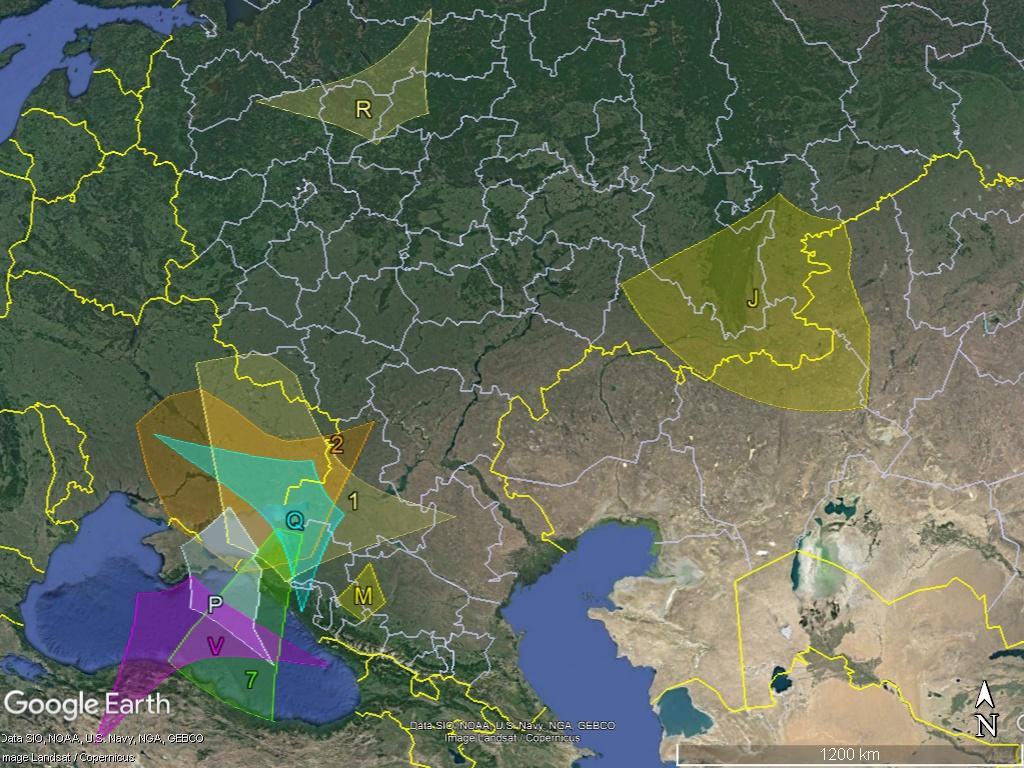
Figure 30 – GMN camera fields in 2022 intersected at 100 km elevation, for cameras active in Russia (West). The code refers to the camera ID, e.g., J = RU000J.
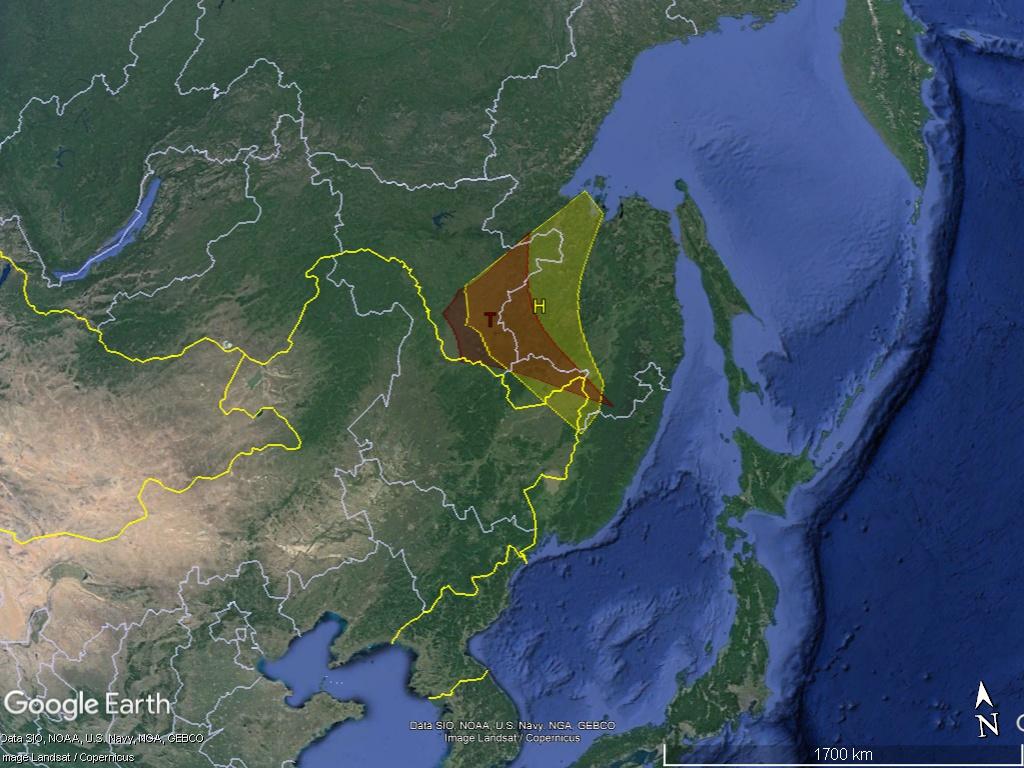
Figure 31 – GMN camera fields in 2022 intersected at 100 km elevation, for cameras active in Russia (far east). The code refers to the camera ID, e.g., T = RU000T.
2.27 Singapore
A first camera got installed in 2022 and is waiting for multi-station partners (Figure 32).
To view and toggle on/off camera fields yourself in Google Earth Pro (freeware) :
- All aggregated kml files for Singapore status end of 2022;
- All aggregated kml files for GMN status end of 2022;
- All current status kml files at 25 km, 70 km and 100 km elevation (absolute height, to be corrected to clamped-to-ground);
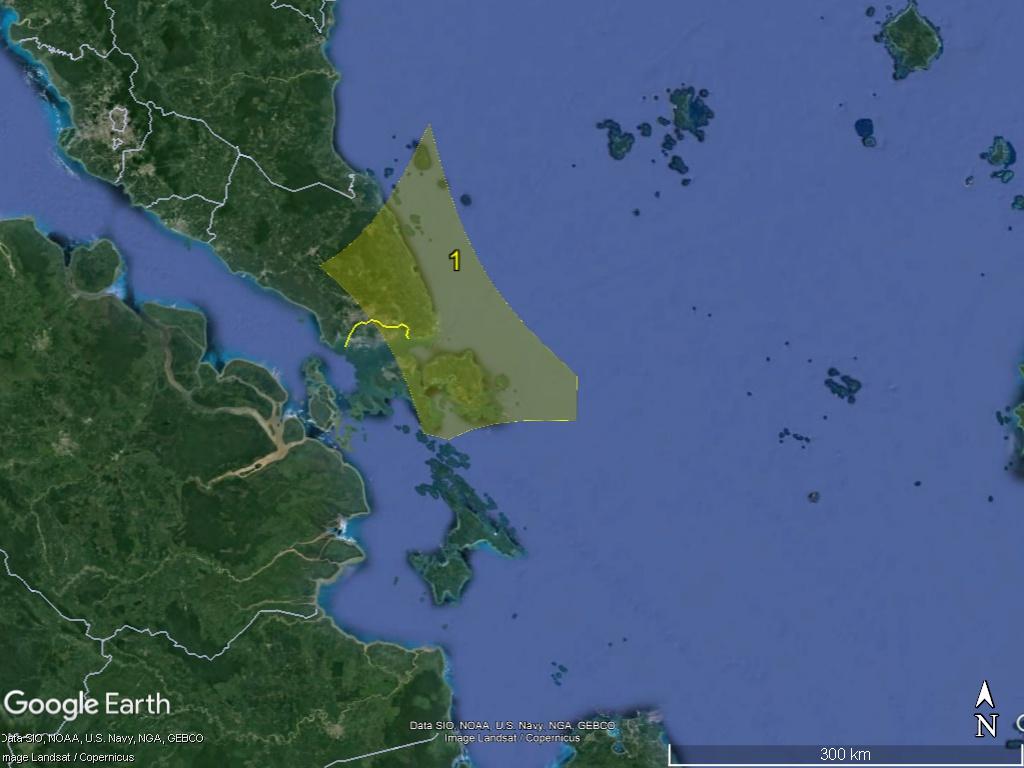
Figure 32 – GMN camera fields in 2022 intersected at 100 km elevation, for cameras active in Singapore. The code refers to the camera ID, e.g., 1 = SG0001.
2.28 Slovakia
Slovakia got its first camera in November 2021 with 37 paired meteors. Meanwhile 3 GMN cameras got operational and 2022 had 2026 orbits for Slovakian cameras (Figure 33).
To view and toggle on/off camera fields yourself in Google Earth Pro (freeware) :
- All aggregated kml files for Slovakia status end of 2022;
- All aggregated kml files for GMN status end of 2022;
- All current status kml files at 25 km, 70 km and 100 km elevation (absolute height, to be corrected to clamped-to-ground);
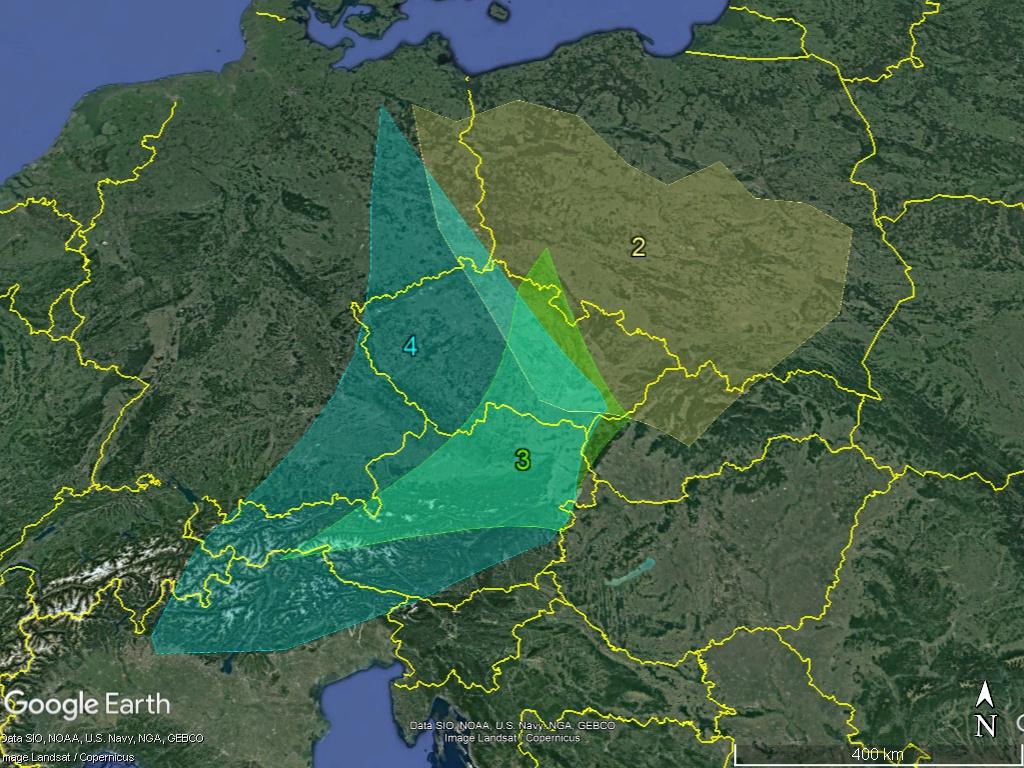
Figure 33 – GMN camera fields in 2022 intersected at 100 km elevation, for cameras active in Slovakia. The code refers to the camera ID, e.g., 3 = SK0003.
2.29 Slovenia
Slovenia got its first RMS contributing in August 2019 and a second RMS in August 2021. The coverage by cameras in neighboring Croatia resulted in 2753 orbits in 2019, 3999 in 2020 and 6001 in 2021. The two Slovenian cameras contributed to 5887 orbits in 2022 (Figure 34).
To view and toggle on/off camera fields yourself in Google Earth Pro (freeware) :
- All aggregated kml files for Slovenia status end of 2022;
- All aggregated kml files for GMN status end of 2022;
- All current status kml files at 25 km, 70 km and 100 km elevation (absolute height, to be corrected to clamped-to-ground);
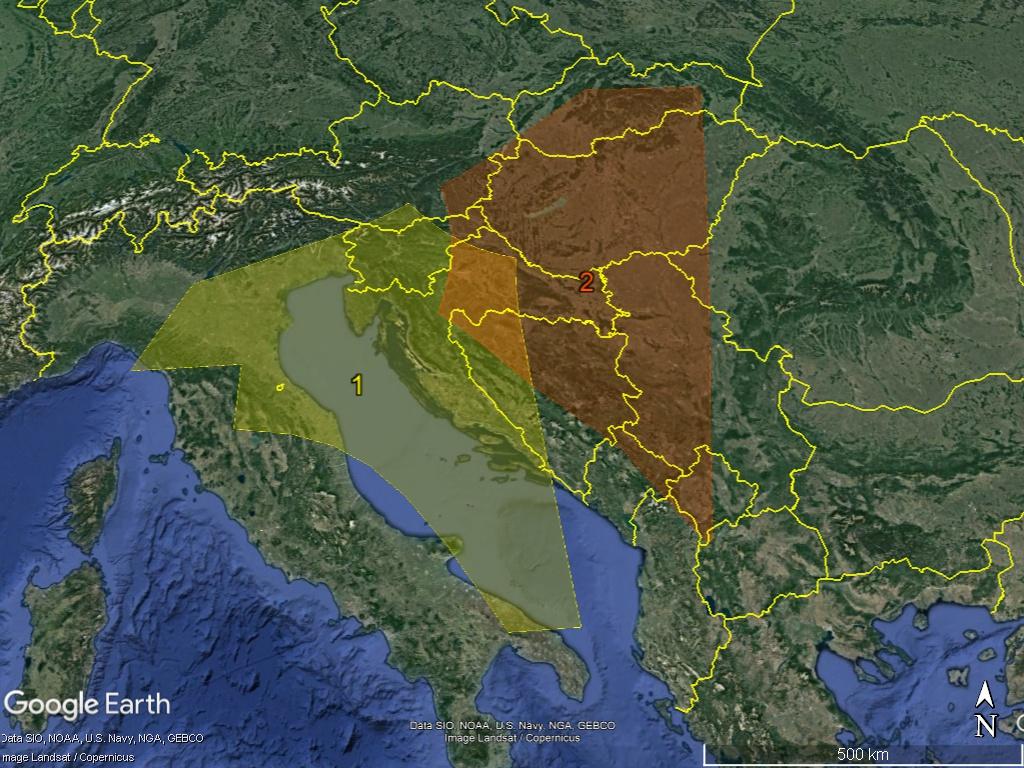
Figure 34 – GMN camera fields in 2022 intersected at 100 km elevation, for cameras active in Slovenia. The code refers to the camera ID, e.g., 1 = SI0001.
2.30 Spain
The GMN had its first orbits collected in Spain in April 2020. End of 2020, 8 GMN cameras had collected 1207 orbits. A lot of progress was made in Spain in 2021 when the number of cameras increased from 8 to 23. The 23 Spanish cameras were involved in 15113 multi-station events in 2021. The number of GMN cameras increased further to 30 in 2022 and resulted in 19301 orbits (Figure 35).
To view and toggle on/off camera fields yourself in Google Earth Pro (freeware) :
- All aggregated kml files for Spain status end of 2022;
- All aggregated kml files for GMN status end of 2022;
- All current status kml files at 25 km, 70 km and 100 km elevation (absolute height, to be corrected to clamped-to-ground);
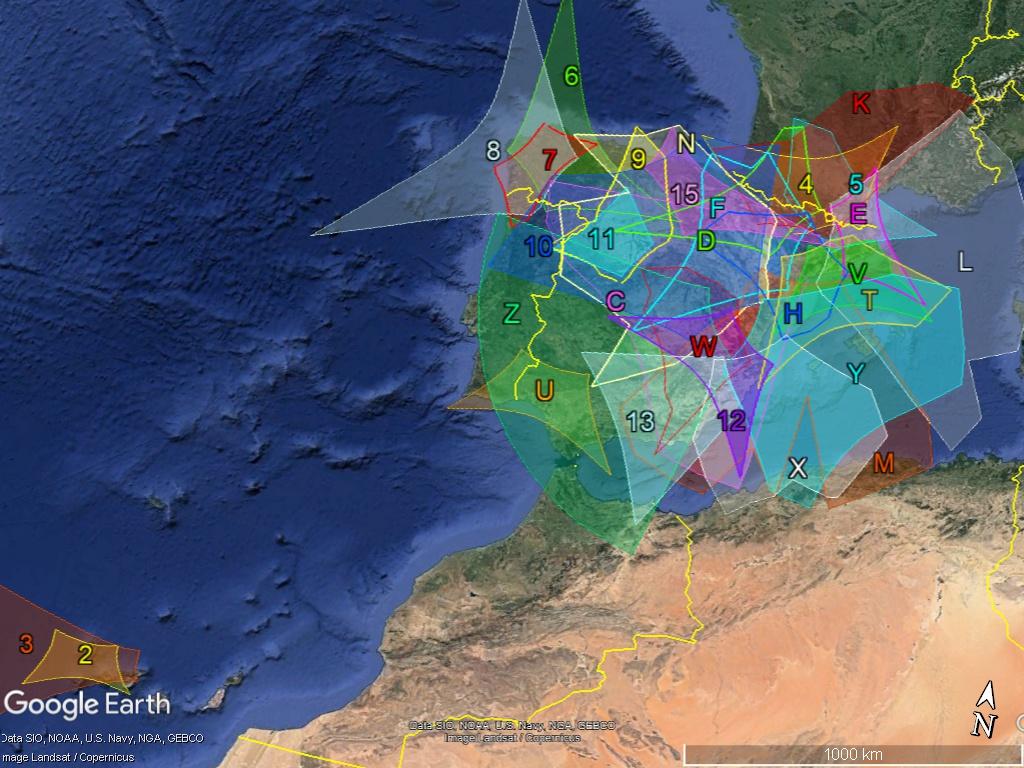
Figure 35 – GMN camera fields in 2022 intersected at 100 km elevation, for cameras active in Spain. The code refers to the camera ID, e.g., C = ES000C.
2.31 Switzerland
The first orbits were obtained in August 2021 but it took until May 2022 before extra cameras got installed and more orbits recorded. With 5 operational cameras 3439 orbits were obtained. The central location of Switzerland is ideal to obtain multi-station events with GMN cameras in the neighboring countries (Figure 36).
To view and toggle on/off camera fields yourself in Google Earth Pro (freeware) :
- All aggregated kml files for Switzerland status end of 2022;
- All aggregated kml files for GMN status end of 2022;
- All current status kml files at 25 km, 70 km and 100 km elevation (absolute height, to be corrected to clamped-to-ground);
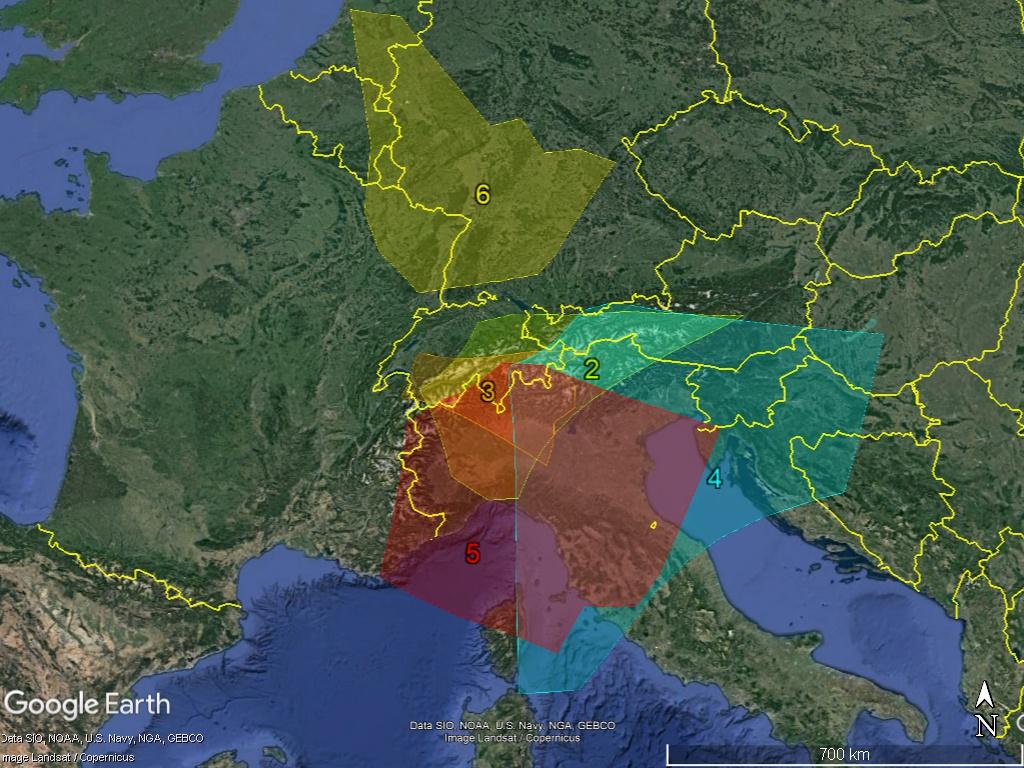
Figure 36 – GMN camera fields in 2022 intersected at 100 km elevation, for cameras active in Switzerland. The code refers to the camera ID, e.g., 6 = CH0006.
2.32 United Kingdom
Cameras
During 2022 the number of active cameras in the UK grew from 97 in 2021 to 169 at the end of 2022 (Figure 37). The vast majority of these cameras are part of the UK Meteor Network which now provides complete coverage of the UK and Eire though some parts of the far West are covered by only one or two cameras.
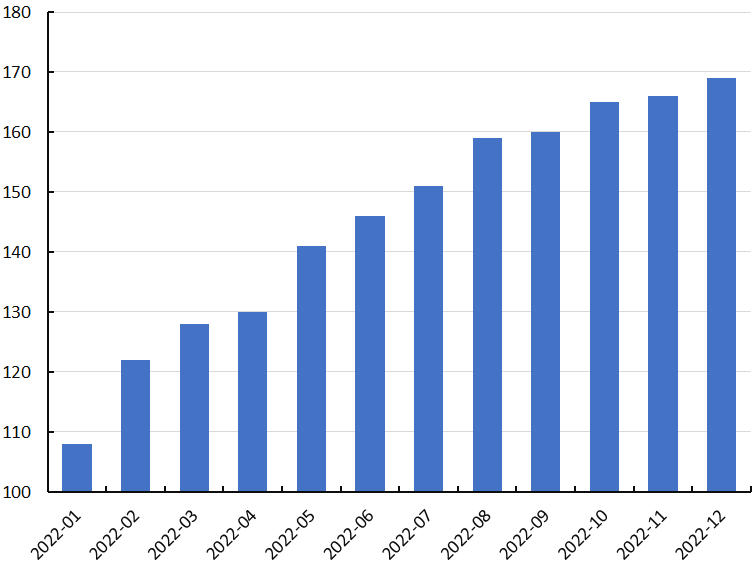
Figure 37 – The camera growth in the United Kingdom in 2022.
At 100 km UK camera coverage reaches as far as Shetland, Faroe, Norway, Western Germany, the Bay of Biscay and central France. Notable growth this year has been in Scotland which is now well covered, though the Western Isles are still not covered fully at lower altitudes. There is almost complete overlap with the BENELUX network. Maps showing coverage and camera overlaps are available on UKMON’s website (Figure 38).
To view and toggle on/off camera fields yourself in Google Earth Pro (freeware) :
- All aggregated kml files for the United Kingdom status end of 2022;
- See also UKMON’s website;
- All aggregated kml files for GMN status end of 2022;
- All current status kml files at 25 km, 70 km and 100 km elevation (absolute height, to be corrected to clamped-to-ground);
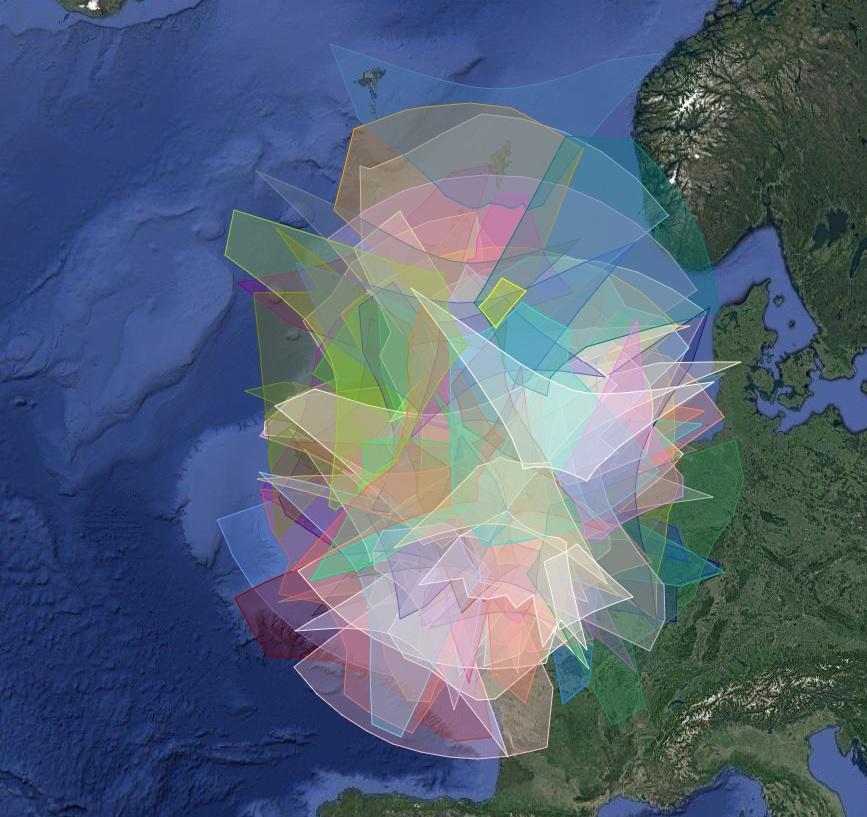
Figure 38 – GMN camera fields in 2022 intersected at 100 km elevation, for cameras active in the United Kingdom. To check the camera IDs and positions, consult the link provided above.
Matches
UK cameras were involved in 78652 matched multi-station events compared to 27430 in 2021. One match was detected by 31 cameras, and 6809 were detected by ten or more stations, providing high levels of confidence in the data (though see next section). Over 1.5 million individual single-station detections were recorded, though this total includes non-meteoric events.
The furthest East match involving a UK camera was just south of Erfurt, Germany, while the furthest West was a few miles off the Dingle, Eire. The furthest north was near Shetland, Scotland and the furthest south was in the Bay of Biscay, about 150km south of Quimper, France. A fireball was also matched off the coast of Norway!
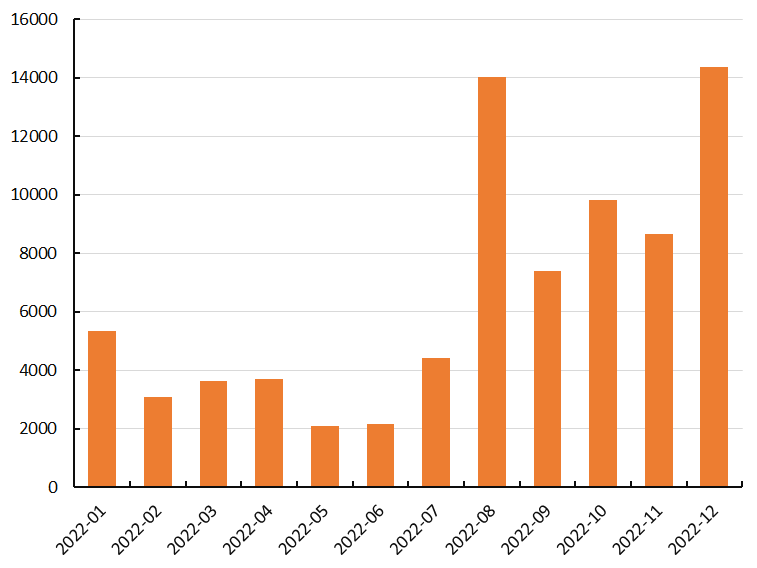
Figure 39 – The number of matches in the United Kingdom in 2022.
Data volume issues
There are downsides to such large numbers of cameras. Firstly, multi-station matches take longer to solve, delaying overall GMN processing. Secondly, there is a much higher chance of two different meteors being detected within a 10 second window. This can sometimes lead to mismatching or even failures to match. To mitigate these issues, the GMN team is working on code changes to rank detections by quality, and then use only the best in solutions.
Showers
360 individual meteor showers were detected, accounting for 46% of all matches. As one might expect, the Perseids and Geminids dominate shower meteors, though other major showers were well represented. Relatively low numbers of Quadrantids and Lyrids are reflective of poor weather in January and April. The top ten showers are listed below. 2022 was a “Taurid Swarm” year, and so various flavors of Taurid meteors were detected in numbers – for example the s-Taurids feature in the list below.
- PER 7207
- GEM 6631
- ORI 2342
- STA 959
- STS 794
- QUA 716
- COM 678
- LEO 597
- NTA 591
- HYD 523
Fireballs
49 detections over the UK were marked as fireballs, with five probable meteorite dropping events. In the UK, when a potential meteorite dropper is detected, GMN works with the UK Fireball Alliance to effect press communications, engage with UK universities and museums, and organize ground searches where appropriate. Two ground searches were in fact conducted in 2022, and although no meteorites were recovered many valuable lessons were learned – notably, that searching in former coal mining areas and sheep fields is quite impractical as there are many “small black rocks” to confound the search! The three other likely meteorite-dropping events were over the sea.
Looking forward
The UK network continues to grow, with at least 30 additional cameras being commissioned. Over 7000 matches and three fireballs have already been detected in January 2023, and we look forward to a busy year!
2.33 United States
The American New Mexico Meteor Array was the pioneering network of the GMN as it started to harvest meteors in December 2018 with 6 cameras, and the first 497 orbits for GMN. It remained the only data provider for GMN until May 2019 when the first 3 Croatian cameras started to deliver orbits. At the end of 2019, the number of US cameras had increased to 20 when the network collected 27643 orbits that year.
Figure 40 shows the GMN status like it was end of 2022 with 100 GMN cameras in the US, most of which belong to the New Mexico Camera Array and the Lowell Observatory in Arizona. Both networks are independent in neighboring states but have a large overlap. Figure 41 shows the situation for New Mexico and Figure 42 for Arizona. The Lowell Observatory cameras also benefit coverage from other GMN cameras in the state as well as in California (Figure 43). In December 2020 the Lowell CAMS team at Lowell Observatory, Arizona, had added 9 GMN cameras to their CAMS network and another 14 GMN cameras got installed elsewhere in the US. The 33 operational cameras in the US collected as many as 50607 orbits in 2020.
The Lowell team added another 27 GMN cameras to their CAMS network in 2021 and 12 cameras got installed in California and elsewhere in the US. With 72 RMS cameras registering paired meteors in the US, a total of 91901 orbits were obtained. The number of GMN cameras involved in orbit determinations increased to 100 in 2022, good for 114054 orbits.
The implementation of GMN cameras by the Lowell Observatory in Arizona made Lowell the most important orbit contributor for the CAMS project. While Lowell contributed 51425 orbits to GMN in 2021, it contributed 76232 orbits to CAMS. In 2022 Lowell contributed 106596 orbits to CAMS against 79647 to GMN. The GMN software provides CAMS compatible data and this way these cameras prove an excellent alternative for the outdated Watecs. Beyond the Lowell Observatory, CAMS benefits from GMN in its CAMS-BeNeLux network and in CAMS Australia, a win-win for both projects. GMN has more rigorous quality validation built-in for its trajectory solver than CAMS which explains why CAMS obtains more orbits from the same number of paired meteors.
GMN camera networks are emerging at several other sites in the US (Figure 44). The network reaches till Alaska at 65° northern latitude (Figure 45). Several cameras installed near the East Coast, south of the Canadian border connect to the existing GMN network in Canada (Figure 46). The maps show where cameras in the US still wait for multi-station partners to set up cameras.
To view and toggle on/off camera fields yourself in Google Earth Pro (freeware) :
- All aggregated kml files for the United States status end of 2022;
- All aggregated kml files for the United States (Lowell Observatory) status end of 2022;
- All aggregated kml files for the United States (NASA) status end of 2022;
- All aggregated kml files for the United States (V) status end of 2022;
- All aggregated kml files for GMN status end of 2022;
- All current status kml files at 25 km, 70 km and 100 km elevation (absolute height, to be corrected to clamped-to-ground);
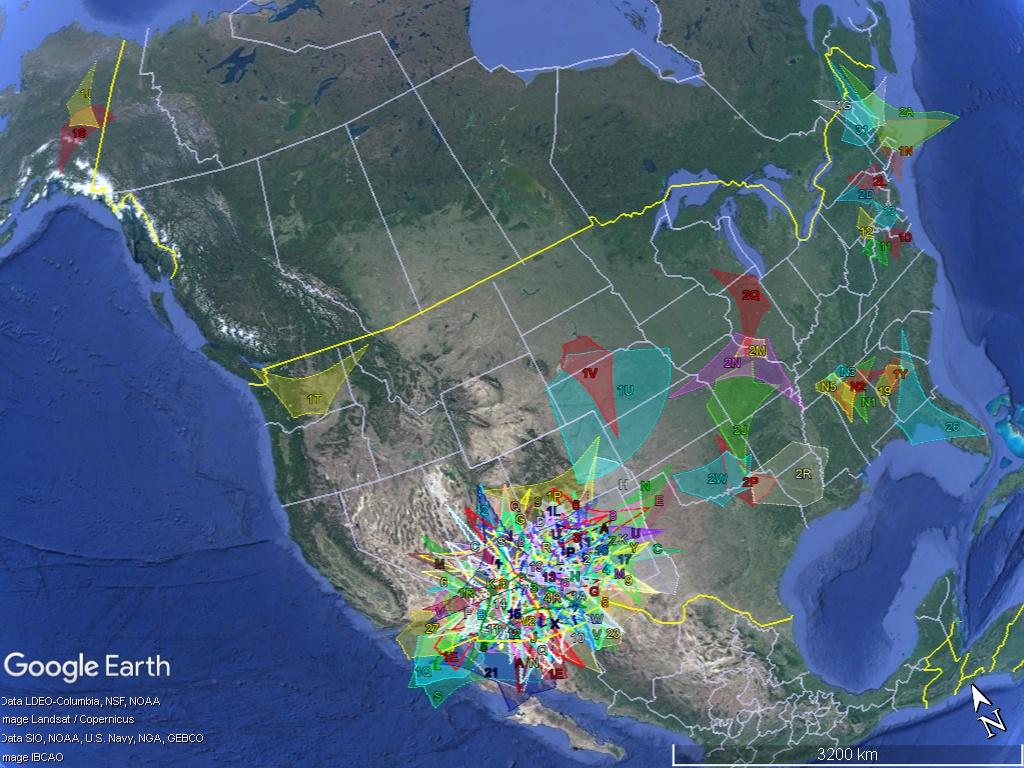
Figure 40 – GMN camera fields intersected at 100 km elevation, global view for cameras installed in the USA, status 2022.
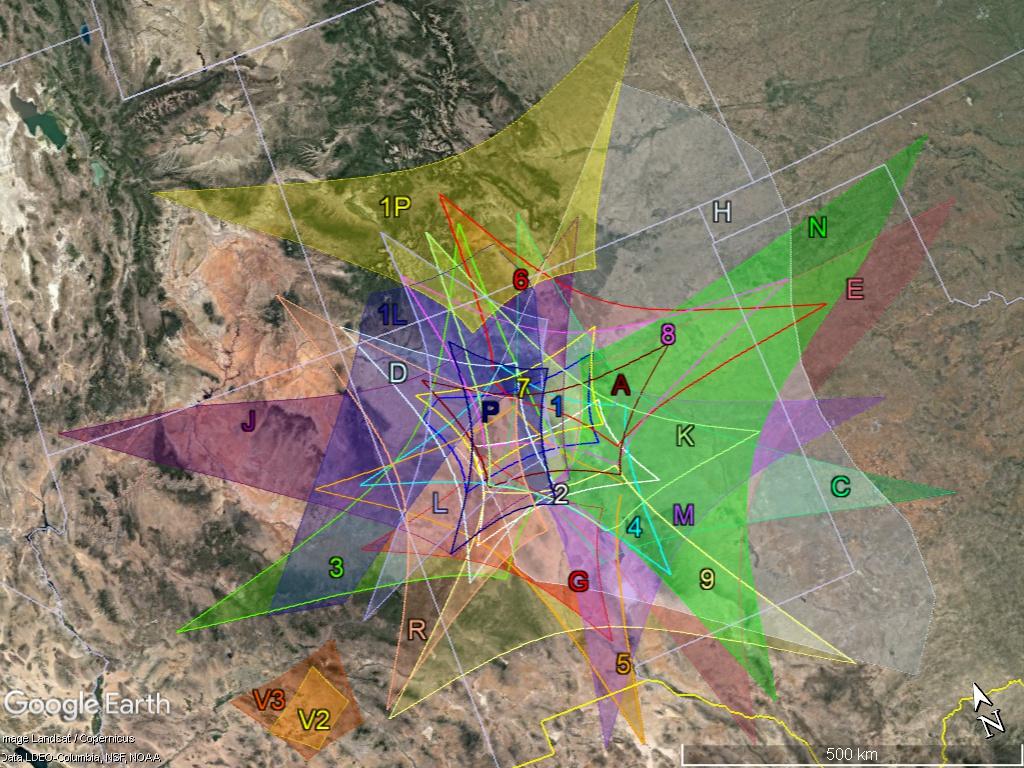
Figure 41 – GMN camera fields in 2022 intersected at 100 km elevation, for cameras of the New Mexico Camera Array. The code refers to the camera ID, e.g., D = US000D.
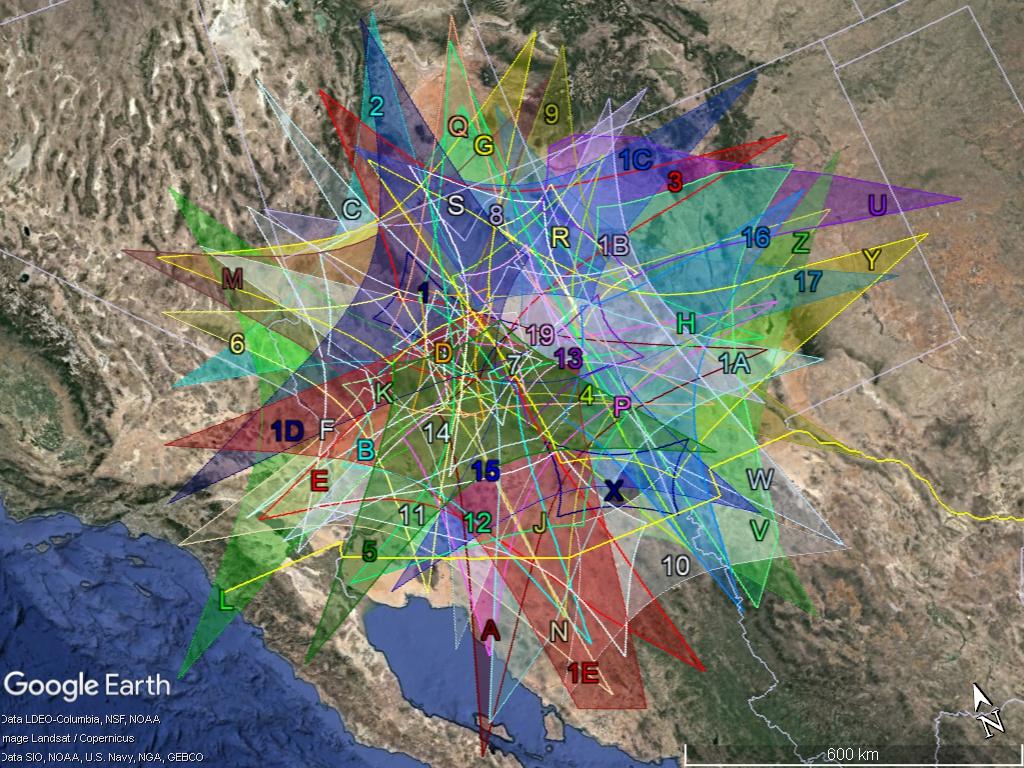
Figure 42 – GMN camera fields in 2022 intersected at 100 km elevation, for cameras of the Lowell Observatory in Arizona. The code refers to the camera ID, e.g., D = USL00D.
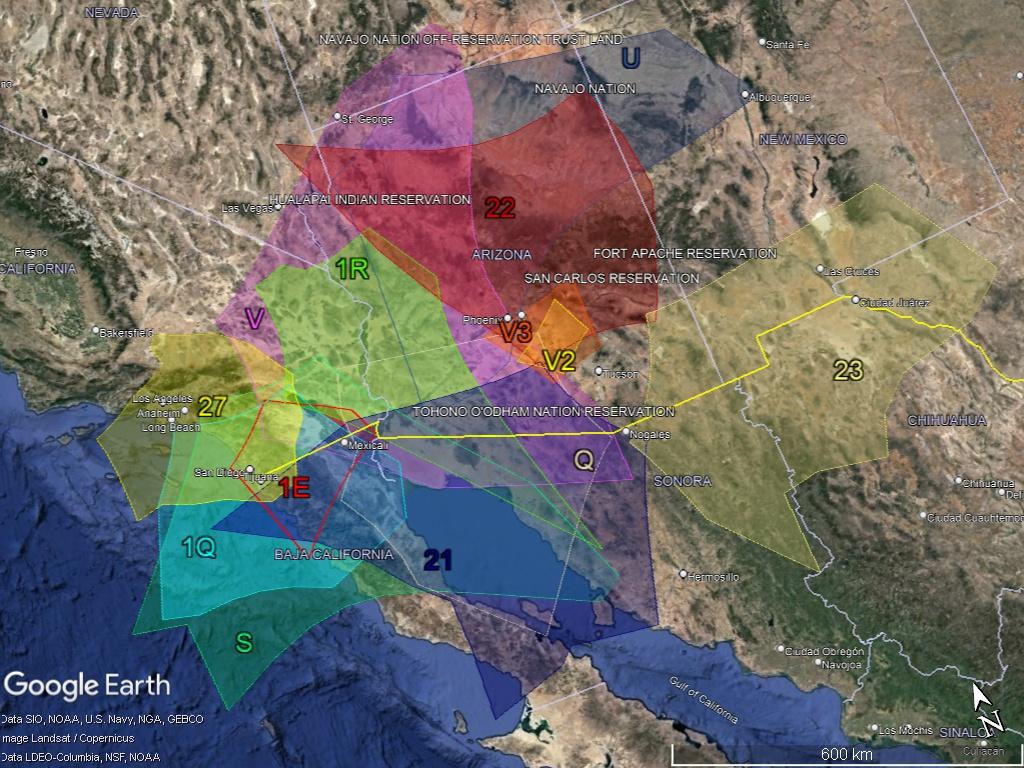
Figure 43 – GMN camera fields in 2022 intersected at 100 km elevation, for cameras in California and Arizona. The code refers to the camera ID, e.g., Q = US000Q.
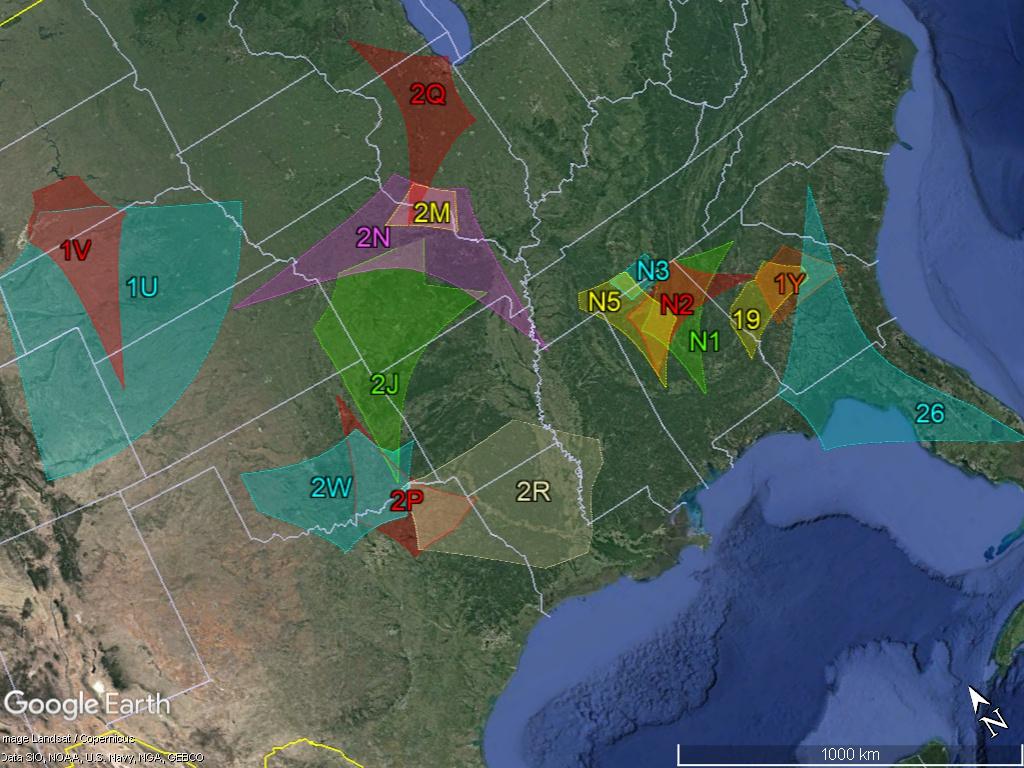
Figure 44 – GMN camera fields in 2022 intersected at 100 km elevation, several new networks in the US. The code refers to the camera ID, e.g., 2R = US002R.
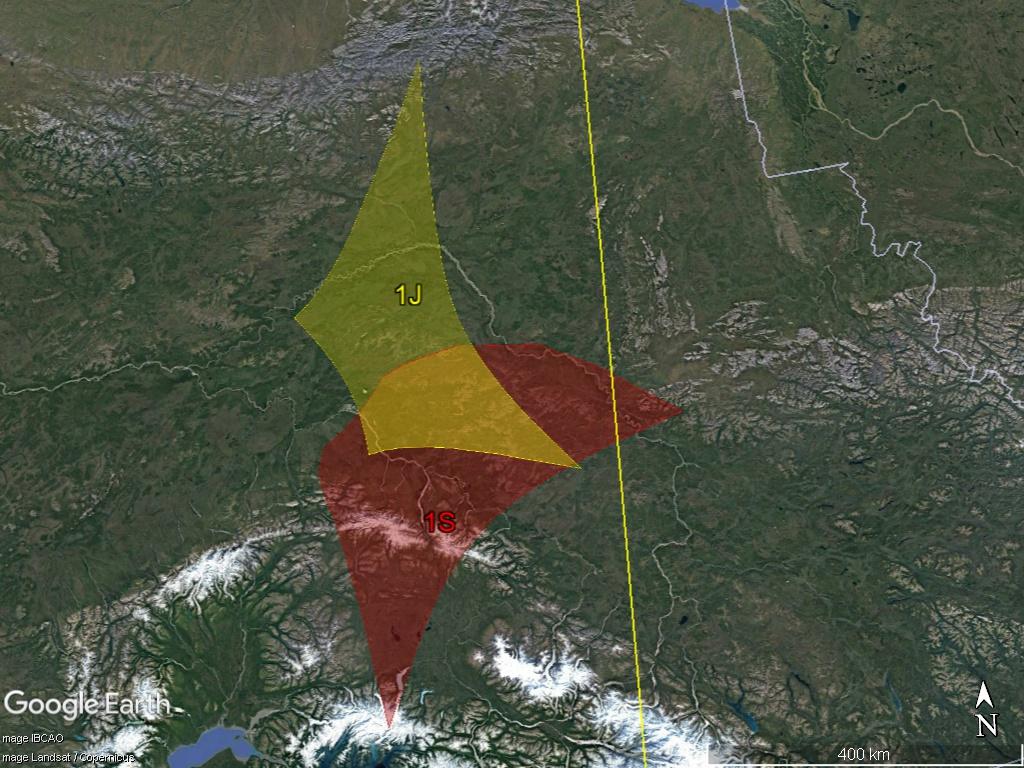
Figure 45 – GMN camera fields in 2022 intersected at 100 km elevation, for cameras in Alaska. The code refers to the camera ID, e.g., 1J = US001J.
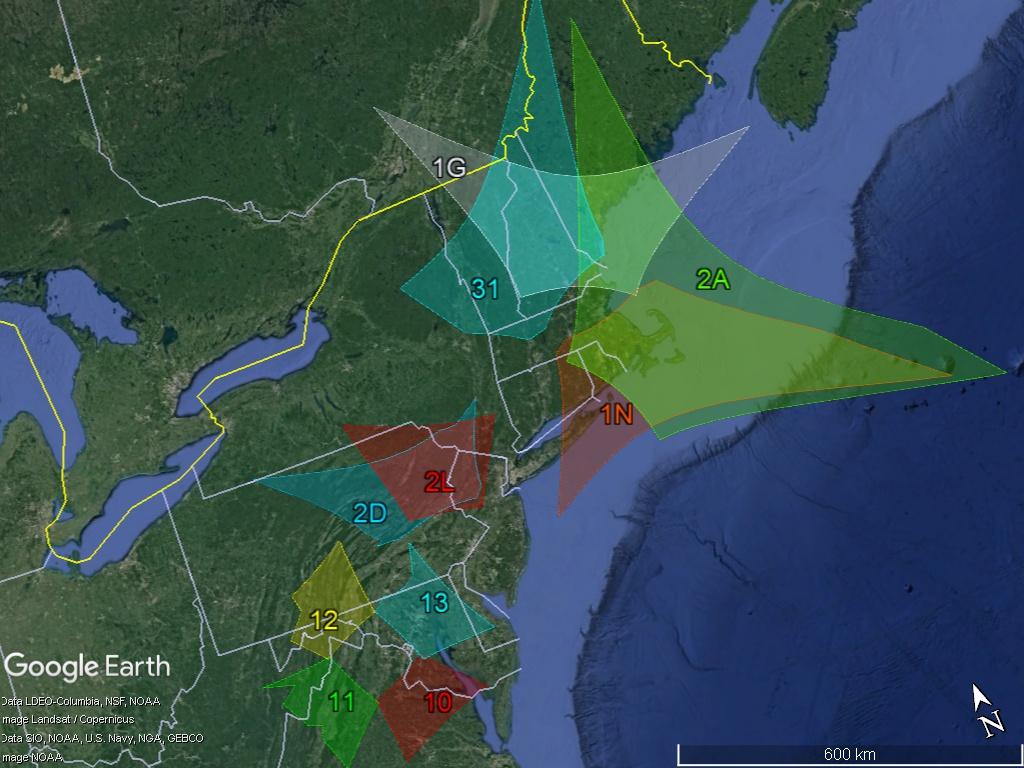
Figure 46 – GMN camera fields in 2022 intersected at 100 km elevation, for cameras at the East Coast of the US. The code refers to the camera ID, e.g., 2A = US002A.
2.34 South Africa
The first two GMN cameras got installed and are waiting for multi-station partners (Figure 47).
To view and toggle on/off camera fields yourself in Google Earth Pro (freeware) :
- All aggregated kml files for South Africa status end of 2022;
- All aggregated kml files for GMN status end of 2022;
- All current status kml files at 25 km, 70 km and 100 km elevation (absolute height, to be corrected to clamped-to-ground);
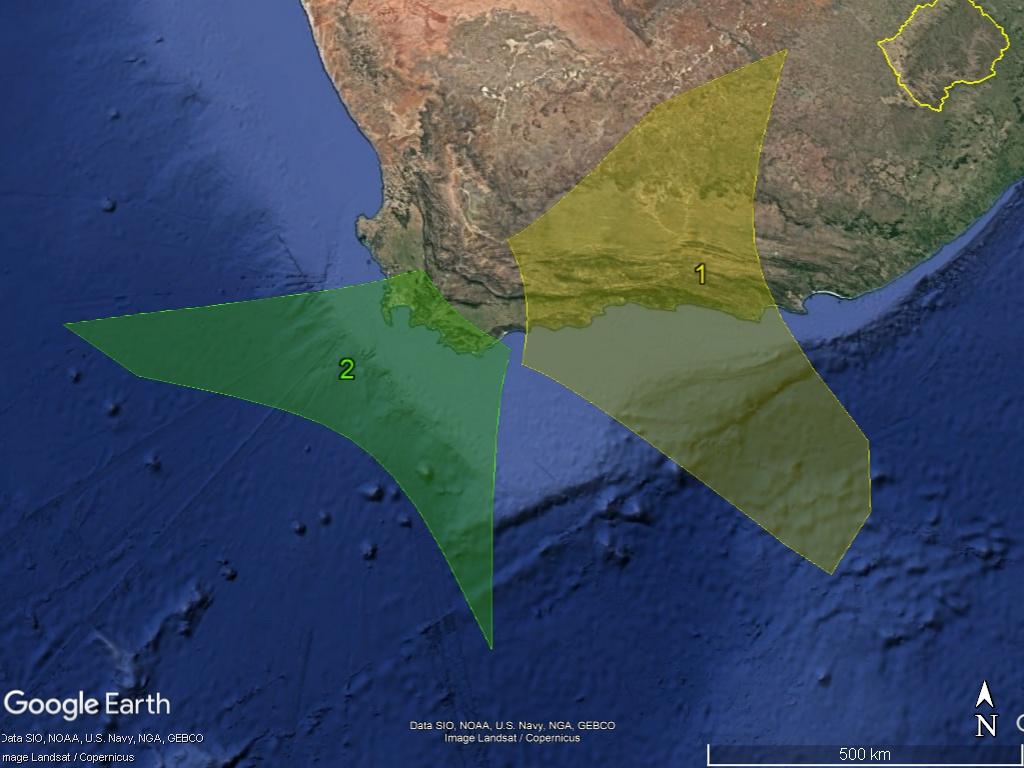
Figure 47 – GMN camera fields in 2022 intersected at 100 km elevation, for cameras active in South Africa. The code refers to the camera ID, e.g., 2 = ZA0002.
3 GMN statistics 2022
When a first GMN status report got published, including all data until end October 2020, 140 operational cameras were involved and 144950 orbits had been collected (Roggemans, 2021). Meanwhile, we can compare 4 years of GMN work. Figure 48 shows the accumulated number of orbits obtained and the number of contributing cameras during each calendar month. The rapid growth of the Global Meteor Network is obvious. The number of cameras involved in collecting orbits for GMN increased from 390 in 2021 to 700 in 2022.
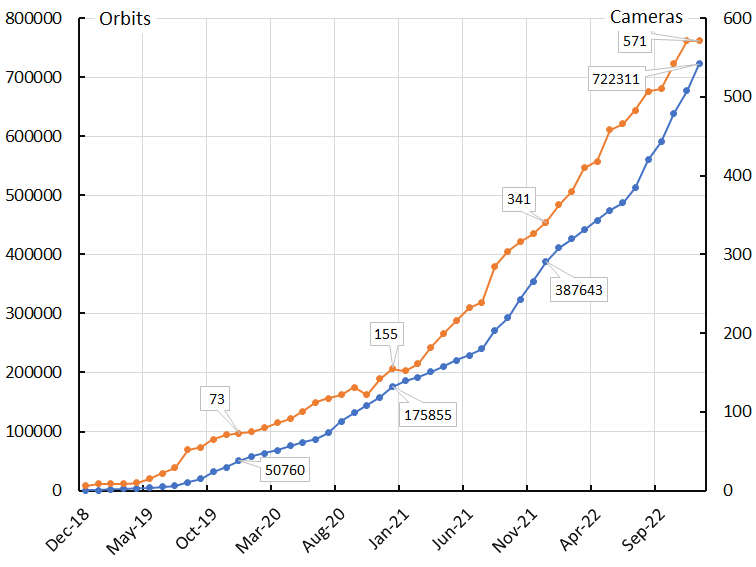
Figure 48 – The accumulated number of orbits (blue) and the actual number of operational cameras involved in triangulations (orange). The numbers at the end of each year are indicated.
The details per month for the number of orbits are given in Table 1 and the number of cameras is given in Table 2. Note in Table 2 that for instance 571 cameras contributed with orbits in December, far less than the 700 cameras that contributed during the entire year of 2022. The explanation can be bad weather, technical issues or other problems which temporarily prevented cameras to score multi-station events. A number of formerly active cameras did not contribute in 2022. Installed cameras waiting for multi-station coverage are not included in these totals.
Table 3 lists the number of paired meteors that contributed to orbits counted per country. That meteors have no borders is obvious as the sum of all totals per country equals 812338 orbits while there were 722311 orbits in total in the GMN dataset at the end of 2022. The difference 90027 are orbits established by cameras in two or more countries for cross-border events and thus counted twice or more times.
Table 4 lists the number of different camera IDs that contributed to orbits in each country. Sometimes, cameras were not recording all year long and a number of active cameras from past years did no longer contribute data. For Canada cameras with country code CAWE (Western) were counted for CA, while CAWT (Tavistock) is not included as no orbits from these cameras were found in the GMN orbit dataset. US includes cameras and orbits identified as USL (Lowell) and USV (Arizona), but not USN (NASA stations) which has no orbits in the GMN dataset. One camera had been functioning with a preliminary country code XX.
Table 1 – Total number of orbits obtained by the Global Meteor Network cameras per calendar month.
| 2018 | 2019 | 2020 | 2021 | 2022 | Total | |
| >01 | >0 | >564 | >7539 | >9919 | >23727 | >41749 |
| 02 | 0 | 1284 | 5330 | 6529 | 14910 | 28053 |
| 03 | 0 | 537 | 5101 | 8767 | 15409 | 29814 |
| 04 | 0 | 876 | 7213 | 9655 | 15658 | 33402 |
| 05 | 0 | 1242 | 5654 | 10217 | 16951 | 34064 |
| 06 | 0 | 1523 | 5700 | 7954 | 13463 | 28640 |
| 07 | 0 | 1961 | 10973 | 11325 | 25226 | 49485 |
| 08 | 0 | 5387 | 19422 | 31292 | 47300 | 103401 |
| 09 | 0 | 6058 | 14012 | 21189 | 29984 | 71243 |
| 10 | 0 | 11978 | 13097 | 31501 | 48360 | 104936 |
| 11 | 0 | 7710 | 13228 | 30381 | 37895 | 89214 |
| 12 | 497 | 11143 | 17826 | 33059 | 45785 | 108310 |
| 497 | 50263 | 125095 | 211788 | 334668 | 722311 |
Table 2 – Total number of operational cameras within the Global Meteor Network per calendar month.
| 2018 | 2019 | 2020 | 2021 | 2022 | Total | |
| 01 | 9 | 75 | 152 | 363 | 397 | |
| 02 | 9 | 80 | 161 | 380 | 417 | |
| 03 | 9 | 86 | 182 | 410 | 445 | |
| 04 | 10 | 91 | 200 | 418 | 462 | |
| 05 | 15 | 101 | 216 | 458 | 499 | |
| 06 | 22 | 112 | 232 | 466 | 524 | |
| 07 | 29 | 117 | 239 | 483 | 534 | |
| 08 | 52 | 122 | 285 | 507 | 568 | |
| 09 | 55 | 131 | 304 | 510 | 578 | |
| 10 | 65 | 122 | 316 | 542 | 607 | |
| 11 | 71 | 142 | 326 | 571 | 642 | |
| 12 | 6 | 73 | 155 | 341 | 571 | 659 |
| 6 | 76 | 173 | 390 | 700 | 729 |
Table 3 – Total number of multi-station events contributing to an orbit result, recorded in each country for each year.
| 2018 | 2019 | 2020 | 2021 | 2022 | Total | |
| AU | 0 | 0 | 0 | 1871 | 12460 | 14331 |
| BE | 0 | 921 | 5500 | 8582 | 23174 | 38177 |
| BG | 0 | 0 | 0 | 419 | 3877 | 4296 |
| BR | 0 | 0 | 40 | 1645 | 2760 | 4445 |
| CA | 0 | 3599 | 10815 | 8809 | 16232 | 39455 |
| CH | 0 | 0 | 0 | 3 | 3439 | 3442 |
| CZ | 0 | 0 | 163 | 464 | 2490 | 3117 |
| DE | 0 | 200 | 3963 | 7009 | 9128 | 20300 |
| DK | 0 | 0 | 0 | 0 | 55 | 55 |
| ES | 0 | 0 | 1207 | 15113 | 19301 | 35621 |
| FI | 0 | 0 | 0 | 0 | 41 | 41 |
| FR | 0 | 0 | 3176 | 5601 | 11990 | 20767 |
| GR | 0 | 0 | 0 | 0 | 977 | 977 |
| HR | 0 | 12221 | 35099 | 38370 | 31329 | 117019 |
| HU | 0 | 0 | 0 | 0 | 2114 | 2114 |
| IE | 0 | 0 | 120 | 424 | 3490 | 4034 |
| IL | 0 | 0 | 553 | 2009 | 975 | 3537 |
| IT | 0 | 862 | 5384 | 5447 | 4943 | 16636 |
| KR | 0 | 0 | 0 | 0 | 7711 | 7711 |
| LU | 0 | 0 | 0 | 0 | 622 | 622 |
| MX | 0 | 0 | 0 | 0 | 1769 | 1769 |
| MY | 0 | 0 | 0 | 0 | 50 | 50 |
| NL | 0 | 278 | 4337 | 7605 | 9139 | 21359 |
| NZ | 0 | 0 | 0 | 1146 | 6280 | 7426 |
| PL | 0 | 0 | 35 | 67 | 398 | 500 |
| PT | 0 | 0 | 0 | 0 | 327 | 327 |
| RU | 0 | 5715 | 13438 | 6208 | 5437 | 30798 |
| SI | 0 | 2753 | 3999 | 6001 | 5887 | 18640 |
| SK | 0 | 0 | 0 | 37 | 2026 | 2063 |
| UK | 0 | 0 | 1889 | 27430 | 78652 | 107971 |
| US | 497 | 27643 | 50607 | 91901 | 114054 | 284702 |
Table 4 – Total number of operational cameras in each country for each year. Inactive devices and cameras without orbits are not counted.
| 2018 | 2019 | 2020 | 2021 | 2022 | Total | |
| AU | 0 | 0 | 0 | 12 | 29 | 30 |
| BE | 0 | 4 | 4 | 10 | 20 | 20 |
| BG | 0 | 0 | 0 | 2 | 6 | 6 |
| BR | 0 | 0 | 2 | 13 | 20 | 21 |
| CA | 0 | 11 | 18 | 29 | 58 | 60 |
| CH | 0 | 0 | 0 | 1 | 5 | 5 |
| CZ | 0 | 0 | 3 | 4 | 6 | 6 |
| DE | 0 | 4 | 10 | 12 | 18 | 19 |
| DK | 0 | 0 | 0 | 0 | 1 | 1 |
| ES | 0 | 0 | 8 | 23 | 30 | 30 |
| FI | 0 | 0 | 0 | 0 | 4 | 4 |
| FR | 0 | 0 | 10 | 14 | 16 | 20 |
| GR | 0 | 0 | 0 | 0 | 1 | 1 |
| HR | 0 | 23 | 32 | 48 | 45 | 54 |
| HU | 0 | 0 | 0 | 0 | 2 | 2 |
| IE | 0 | 0 | 2 | 3 | 5 | 6 |
| IL | 0 | 0 | 3 | 6 | 5 | 6 |
| IT | 0 | 1 | 1 | 5 | 5 | 6 |
| KR | 0 | 0 | 0 | 0 | 47 | 47 |
| LU | 0 | 0 | 0 | 0 | 1 | 1 |
| MX | 0 | 0 | 0 | 0 | 12 | 12 |
| MY | 0 | 0 | 0 | 0 | 3 | 3 |
| NL | 0 | 2 | 11 | 11 | 13 | 15 |
| NZ | 0 | 0 | 0 | 2 | 28 | 28 |
| PL | 0 | 0 | 1 | 1 | 3 | 3 |
| PT | 0 | 0 | 0 | 0 | 1 | 1 |
| RU | 0 | 10 | 21 | 21 | 19 | 25 |
| SI | 0 | 1 | 1 | 2 | 2 | 2 |
| SK | 0 | 0 | 0 | 1 | 3 | 3 |
| UK | 0 | 0 | 13 | 97 | 191 | 191 |
| US | 6 | 20 | 33 | 72 | 100 | 100 |
| 6 | 76 | 173 | 389 | 699 | 728 |
4 Meteor showers covered by GMN
Using the Working List of Meteor Showers (Jenniskens et al., 2020; Jopek and Kaňuchová, 2017; Jopek and Jenniskens, 2011; Neslušan et al., 2020) as a reference, 423 of the showers listed could be associated with orbits collected by the Global Meteor Network. The number of orbits recorded for each of these showers is listed in Table 5 for each year since 2018.
The GMN meteor shower association has been based on the table of Sun-centered ecliptic shower radiant positions given in Jenniskens et al. (2018). Many entrees of the Working List of Meteor Showers have no matching orbits in the GMN database yet. Some of the showers are periodic and display only some activity once every few years, some showers have been detected only by radar in a fainter range of magnitudes than what GMN cameras cover and others are known as daylight meteor showers. While GMN is getting better coverage at the southern hemisphere, more of the low declination meteor showers will get covered. For a number of listed meteor showers their absence in the GMN orbit database may be explained because the evidence for the existence of the shower could be missing. One of the goals of the GMN project is to help to identify ghost meteor showers that should be removed from the Working List.
Table 5 serves as an inventory of what the GMN orbit database has available until end 2022. Of course, the number of shower members detected depends on the criteria used to associate a meteor with a known meteor shower radiant. The GMN shower association criterion assumes that meteors within 1° in solar longitude, within 3° in radiant, and within 10% in geocentric velocity of a shower reference location are members of that shower. Further details about the shower association are explained in Moorhead et al. (2020). This is a rather strict criterion since meteor showers often have a larger dispersion in radiant position and velocity. Therefore, using the orbit similarity criteria (Drummond, 1981; Southworth and Hawkins, 1963; Jopek, 1993) will certainly detect more shower candidates but at the risk of including sporadic orbits that fulfil similarity criteria by pure chance.
The main goal of the GMN, not to let any meteor shower activity pass unnoticed is being achieved. Whenever some unexpected meteor activity occurs, the Global Meteor Network has good chances to cover it.
Table 5 – Total number of orbits according to the meteor shower association (IAU number + code) for each year.
| Shower | 2018 | 2019 | 2020 | 2021 | 2022 | Total |
| SPOR#-1 | 188 | 27834 | 71186 | 115900 | 188413 | 403521 |
| CAP#1 | 0 | 139 | 793 | 641 | 1563 | 3136 |
| STA#2 | 0 | 1388 | 1645 | 3417 | 5171 | 11621 |
| SIA#3 | 0 | 25 | 53 | 61 | 91 | 230 |
| GEM#4 | 200 | 2664 | 7309 | 12163 | 17950 | 40286 |
| SDA#5 | 0 | 350 | 1560 | 1570 | 4099 | 7579 |
| LYR#6 | 0 | 46 | 733 | 1044 | 1431 | 3254 |
| PER#7 | 0 | 1809 | 8615 | 14711 | 20480 | 45615 |
| ORI#8 | 0 | 2771 | 3423 | 6900 | 12690 | 25784 |
| DRA#9 | 0 | 4 | 3 | 10 | 10 | 27 |
| QUA#10 | 3 | 139 | 919 | 1710 | 2172 | 4943 |
| EVI#11 | 0 | 5 | 102 | 424 | 408 | 939 |
| KCG#12 | 0 | 51 | 237 | 2554 | 305 | 3147 |
| LEO#13 | 0 | 426 | 912 | 1598 | 2247 | 5183 |
| URS#15 | 5 | 134 | 336 | 259 | 560 | 1294 |
| HYD#16 | 7 | 557 | 778 | 2116 | 1994 | 5452 |
| NTA#17 | 1 | 963 | 1332 | 2476 | 2803 | 7575 |
| AND#18 | 0 | 61 | 126 | 1034 | 316 | 1537 |
| MON#19 | 12 | 184 | 330 | 791 | 727 | 2044 |
| COM#20 | 17 | 367 | 762 | 925 | 2183 | 4254 |
| AVB#21 | 0 | 15 | 155 | 194 | 226 | 590 |
| LMI#22 | 0 | 109 | 134 | 269 | 451 | 963 |
| EGE#23 | 0 | 168 | 198 | 597 | 825 | 1788 |
| NOA#25 | 0 | 145 | 170 | 234 | 330 | 879 |
| NDA#26 | 0 | 203 | 687 | 894 | 1390 | 3174 |
| KSE#27 | 0 | 3 | 17 | 45 | 46 | 111 |
| SOA#28 | 0 | 180 | 324 | 663 | 354 | 1521 |
| ETA#31 | 0 | 218 | 647 | 1607 | 2961 | 5433 |
| NIA#33 | 0 | 108 | 187 | 292 | 351 | 938 |
| ZCY#40 | 0 | 32 | 362 | 607 | 829 | 1830 |
| DLI#47 | 0 | 7 | 99 | 73 | 203 | 382 |
| TAH#61 | 0 | 0 | 0 | 1 | 1241 | 1242 |
| GDE#65 | 0 | 1 | 5 | 22 | 27 | 55 |
| SSG#69 | 0 | 31 | 87 | 113 | 161 | 392 |
| SLY#81 | 0 | 15 | 98 | 149 | 101 | 363 |
| ODR#88 | 0 | 4 | 20 | 21 | 53 | 98 |
| PVI#89 | 0 | 1 | 41 | 114 | 189 | 345 |
| NCC#96 | 1 | 45 | 153 | 197 | 451 | 847 |
| SCC#97 | 1 | 81 | 223 | 227 | 584 | 1116 |
| PIH#101 | 0 | 152 | 272 | 533 | 919 | 1876 |
| ACE#102 | 0 | 0 | 0 | 0 | 39 | 39 |
| AAN#110 | 0 | 3 | 26 | 19 | 94 | 142 |
| DME#130 | 0 | 0 | 0 | 0 | 3 | 3 |
| ELY#145 | 0 | 10 | 63 | 202 | 265 | 540 |
| NOP#149 | 0 | 7 | 25 | 23 | 24 | 79 |
| SOP#150 | 0 | 3 | 22 | 44 | 21 | 90 |
| EAU#151 | 0 | 15 | 71 | 74 | 123 | 283 |
| NOC#152 | 0 | 2 | 4 | 7 | 9 | 22 |
| SSC#161 | 0 | 9 | 5 | 27 | 16 | 57 |
| NZC#164 | 0 | 143 | 602 | 617 | 1321 | 2683 |
| SZC#165 | 0 | 32 | 108 | 131 | 324 | 595 |
| JBO#170 | 0 | 0 | 5 | 3 | 36 | 44 |
| ARI#171 | 0 | 6 | 19 | 34 | 40 | 99 |
| JPE#175 | 0 | 43 | 254 | 351 | 690 | 1338 |
| PHE#176 | 0 | 2 | 1 | 24 | 109 | 136 |
| OCY#182 | 0 | 1 | 19 | 19 | 36 | 75 |
| PAU#183 | 0 | 9 | 55 | 73 | 89 | 226 |
| GDR#184 | 0 | 10 | 140 | 84 | 214 | 448 |
| EUM#186 | 0 | 1 | 12 | 5 | 21 | 39 |
| PCA#187 | 0 | 11 | 45 | 63 | 127 | 246 |
| XRI#188 | 0 | 0 | 1 | 0 | 0 | 1 |
| BPE#190 | 0 | 11 | 52 | 60 | 174 | 297 |
| ERI#191 | 0 | 88 | 232 | 321 | 596 | 1237 |
| UCE#194 | 0 | 51 | 108 | 168 | 320 | 647 |
| BIN#195 | 0 | 0 | 1 | 6 | 5 | 12 |
| AUD#197 | 0 | 176 | 464 | 582 | 806 | 2028 |
| AUR#206 | 0 | 58 | 152 | 259 | 336 | 805 |
| SPE#208 | 0 | 196 | 422 | 813 | 854 | 2285 |
| BAU#210 | 0 | 84 | 267 | 304 | 512 | 1167 |
| KLE#212 | 0 | 2 | 4 | 10 | 8 | 24 |
| NPI#215 | 0 | 71 | 120 | 138 | 254 | 583 |
| SPI#216 | 0 | 20 | 47 | 38 | 79 | 184 |
| NDR#220 | 0 | 39 | 123 | 125 | 157 | 444 |
| DSX#221 | 0 | 7 | 4 | 27 | 46 | 84 |
| SOR#225 | 0 | 71 | 114 | 228 | 364 | 777 |
| XDR#242 | 0 | 33 | 60 | 165 | 158 | 416 |
| ZCN#243 | 0 | 2 | 2 | 13 | 10 | 27 |
| NHD#245 | 0 | 13 | 39 | 127 | 101 | 280 |
| AMO#246 | 0 | 25 | 30 | 41 | 81 | 177 |
| NOO#250 | 1 | 396 | 489 | 1340 | 1590 | 3816 |
| ALY#252 | 0 | 2 | 5 | 9 | 15 | 31 |
| CMI#253 | 1 | 65 | 96 | 166 | 320 | 648 |
| ORN#256 | 8 | 172 | 185 | 380 | 560 | 1305 |
| ORS#257 | 3 | 279 | 385 | 759 | 1066 | 2492 |
| OCT#281 | 0 | 27 | 11 | 57 | 159 | 254 |
| FTA#286 | 0 | 51 | 39 | 89 | 295 | 474 |
| DSA#288 | 3 | 46 | 69 | 74 | 228 | 420 |
| DNA#289 | 0 | 20 | 23 | 144 | 113 | 300 |
| TPU#307 | 0 | 1 | 0 | 6 | 12 | 19 |
| PIP#308 | 1 | 28 | 32 | 62 | 119 | 242 |
| MVE#318 | 0 | 15 | 27 | 52 | 96 | 190 |
| JLE#319 | 0 | 0 | 9 | 7 | 25 | 41 |
| OSE#320 | 0 | 1 | 1 | 2 | 1 | 5 |
| LBO#322 | 0 | 0 | 6 | 16 | 40 | 62 |
| XCB#323 | 0 | 0 | 26 | 48 | 69 | 143 |
| EPR#324 | 0 | 1 | 13 | 3 | 13 | 30 |
| EPG#326 | 0 | 12 | 63 | 94 | 127 | 296 |
| SSE#330 | 0 | 2 | 3 | 0 | 8 | 13 |
| AHY#331 | 1 | 30 | 100 | 130 | 367 | 628 |
| OCU#333 | 0 | 51 | 72 | 182 | 194 | 499 |
| DAD#334 | 5 | 271 | 419 | 1068 | 1139 | 2902 |
| XVI#335 | 1 | 68 | 95 | 145 | 207 | 516 |
| DKD#336 | 1 | 129 | 54 | 385 | 182 | 751 |
| NUE#337 | 0 | 403 | 786 | 1543 | 2290 | 5022 |
| OER#338 | 0 | 243 | 272 | 612 | 779 | 1906 |
| PSU#339 | 0 | 45 | 37 | 178 | 105 | 365 |
| TPY#340 | 2 | 41 | 74 | 114 | 256 | 487 |
| XUM#341 | 0 | 0 | 28 | 40 | 66 | 134 |
| HVI#343 | 0 | 18 | 189 | 28 | 29 | 264 |
| FHE#345 | 0 | 2 | 31 | 69 | 134 | 236 |
| XHE#346 | 0 | 6 | 50 | 100 | 152 | 308 |
| BPG#347 | 0 | 0 | 1 | 8 | 5 | 14 |
| ARC#348 | 0 | 12 | 92 | 112 | 262 | 478 |
| LLY#349 | 0 | 0 | 3 | 7 | 8 | 18 |
| JMC#362 | 0 | 9 | 37 | 92 | 111 | 249 |
| PPS#372 | 0 | 111 | 572 | 662 | 1601 | 2946 |
| ALN#376 | 0 | 4 | 11 | 22 | 34 | 71 |
| OLP#384 | 0 | 24 | 21 | 64 | 72 | 181 |
| OBC#386 | 0 | 37 | 49 | 93 | 196 | 375 |
| CTA#388 | 0 | 145 | 141 | 439 | 481 | 1206 |
| THA#390 | 3 | 50 | 107 | 193 | 254 | 607 |
| NDD#391 | 0 | 2 | 2 | 13 | 6 | 23 |
| NID#392 | 0 | 37 | 76 | 167 | 138 | 418 |
| ACA#394 | 1 | 35 | 26 | 75 | 124 | 261 |
| GCM#395 | 2 | 34 | 65 | 61 | 157 | 319 |
| GUM#404 | 0 | 0 | 35 | 29 | 84 | 148 |
| DPI#410 | 0 | 3 | 12 | 17 | 59 | 91 |
| CAN#411 | 0 | 31 | 222 | 317 | 632 | 1202 |
| SIC#416 | 0 | 5 | 46 | 76 | 54 | 181 |
| SOL#424 | 0 | 29 | 99 | 127 | 297 | 552 |
| FED#427 | 0 | 1 | 7 | 5 | 31 | 44 |
| DSV#428 | 5 | 87 | 194 | 337 | 602 | 1225 |
| ACB#429 | 0 | 6 | 28 | 21 | 132 | 187 |
| JIP#431 | 0 | 3 | 17 | 10 | 67 | 97 |
| ZCS#444 | 0 | 34 | 193 | 330 | 531 | 1088 |
| KUM#445 | 0 | 30 | 81 | 192 | 153 | 456 |
| DPC#446 | 0 | 24 | 17 | 102 | 86 | 229 |
| AAL#448 | 0 | 2 | 11 | 14 | 30 | 57 |
| AED#450 | 0 | 3 | 26 | 42 | 60 | 131 |
| CAM#451 | 0 | 4 | 1 | 2 | 6 | 13 |
| MPS#456 | 0 | 57 | 159 | 259 | 351 | 826 |
| JEC#458 | 0 | 5 | 44 | 74 | 48 | 171 |
| JEO#459 | 0 | 41 | 16 | 3 | 43 | 103 |
| LOP#460 | 0 | 0 | 0 | 3 | 0 | 3 |
| AXC#465 | 0 | 7 | 31 | 74 | 116 | 228 |
| AOC#466 | 0 | 0 | 15 | 30 | 34 | 79 |
| LAQ#473 | 0 | 16 | 34 | 36 | 58 | 144 |
| ICE#476 | 0 | 9 | 38 | 27 | 34 | 108 |
| TCA#480 | 0 | 131 | 149 | 395 | 634 | 1309 |
| NZP#486 | 0 | 11 | 30 | 26 | 76 | 143 |
| NSU#488 | 0 | 13 | 21 | 25 | 59 | 118 |
| DEL#494 | 0 | 39 | 59 | 207 | 170 | 475 |
| DAB#497 | 0 | 4 | 15 | 23 | 51 | 93 |
| FPL#501 | 0 | 1 | 31 | 51 | 43 | 126 |
| DRV#502 | 2 | 58 | 81 | 186 | 235 | 562 |
| AIC#505 | 0 | 69 | 186 | 262 | 439 | 956 |
| FEV#506 | 0 | 14 | 127 | 196 | 478 | 815 |
| UAN#507 | 0 | 25 | 121 | 170 | 434 | 750 |
| JRC#510 | 0 | 1 | 19 | 54 | 64 | 138 |
| RPU#512 | 0 | 17 | 53 | 71 | 96 | 237 |
| OMC#514 | 0 | 0 | 18 | 24 | 48 | 90 |
| OLE#515 | 0 | 31 | 73 | 138 | 278 | 520 |
| FMV#516 | 0 | 6 | 81 | 90 | 208 | 385 |
| ALO#517 | 0 | 1 | 5 | 29 | 52 | 87 |
| AHE#518 | 0 | 1 | 13 | 4 | 20 | 38 |
| BAQ#519 | 0 | 8 | 12 | 41 | 79 | 140 |
| MBC#520 | 0 | 5 | 23 | 44 | 41 | 113 |
| AGC#523 | 0 | 31 | 94 | 133 | 270 | 528 |
| LUM#524 | 0 | 19 | 14 | 91 | 135 | 259 |
| SLD#526 | 0 | 18 | 26 | 104 | 93 | 241 |
| EHY#529 | 4 | 88 | 144 | 315 | 390 | 941 |
| ECV#530 | 0 | 6 | 45 | 83 | 206 | 340 |
| GAQ#531 | 0 | 11 | 43 | 107 | 120 | 281 |
| JXA#533 | 0 | 15 | 61 | 90 | 191 | 357 |
| THC#535 | 0 | 0 | 4 | 9 | 18 | 31 |
| FSO#536 | 0 | 1 | 1 | 2 | 5 | 9 |
| TTB#543 | 0 | 4 | 7 | 7 | 19 | 37 |
| JNH#544 | 0 | 3 | 25 | 17 | 81 | 126 |
| XCA#545 | 0 | 2 | 6 | 9 | 36 | 53 |
| FTC#546 | 0 | 17 | 86 | 95 | 115 | 313 |
| KAP#547 | 0 | 92 | 368 | 564 | 1083 | 2107 |
| FAN#549 | 0 | 5 | 75 | 79 | 152 | 311 |
| PSO#552 | 0 | 61 | 183 | 388 | 471 | 1103 |
| OCP#555 | 0 | 23 | 32 | 83 | 148 | 286 |
| PTA#556 | 0 | 16 | 13 | 65 | 110 | 204 |
| SFD#557 | 0 | 100 | 125 | 309 | 344 | 878 |
| MCB#559 | 0 | 10 | 18 | 28 | 56 | 112 |
| SSX#561 | 1 | 10 | 33 | 40 | 94 | 178 |
| DOU#563 | 3 | 38 | 59 | 46 | 171 | 317 |
| SUM#564 | 0 | 14 | 23 | 17 | 53 | 107 |
| OHY#569 | 0 | 16 | 48 | 65 | 225 | 354 |
| FBH#570 | 0 | 6 | 19 | 16 | 81 | 122 |
| TSB#571 | 0 | 1 | 11 | 14 | 31 | 57 |
| SAU#575 | 0 | 7 | 19 | 23 | 40 | 89 |
| CHA#580 | 0 | 16 | 53 | 37 | 120 | 226 |
| NHE#581 | 0 | 11 | 103 | 166 | 235 | 515 |
| JBC#582 | 0 | 3 | 23 | 49 | 108 | 183 |
| GCE#584 | 0 | 22 | 56 | 86 | 153 | 317 |
| THY#585 | 1 | 9 | 24 | 38 | 78 | 150 |
| FNC#587 | 0 | 6 | 18 | 33 | 60 | 117 |
| FCA#589 | 0 | 13 | 38 | 66 | 115 | 232 |
| VCT#590 | 0 | 1 | 5 | 2 | 9 | 17 |
| ZBO#591 | 0 | 3 | 30 | 40 | 69 | 142 |
| PON#592 | 0 | 3 | 9 | 16 | 24 | 52 |
| TOL#593 | 0 | 17 | 26 | 80 | 96 | 219 |
| RSE#594 | 0 | 0 | 3 | 2 | 3 | 8 |
| POS#599 | 0 | 8 | 96 | 190 | 351 | 645 |
| ICT#601 | 1 | 4 | 5 | 7 | 17 | 34 |
| KCR#602 | 0 | 0 | 5 | 27 | 51 | 83 |
| FAR#608 | 0 | 4 | 14 | 35 | 39 | 92 |
| TLY#613 | 0 | 5 | 19 | 90 | 61 | 175 |
| THD#618 | 0 | 1 | 5 | 7 | 26 | 39 |
| XCS#623 | 0 | 33 | 123 | 134 | 309 | 599 |
| XAR#624 | 0 | 214 | 330 | 288 | 676 | 1508 |
| LTA#625 | 0 | 43 | 123 | 98 | 298 | 562 |
| LCT#626 | 0 | 171 | 53 | 340 | 563 | 1127 |
| NPS#627 | 0 | 79 | 37 | 239 | 293 | 648 |
| STS#628 | 0 | 175 | 134 | 415 | 3472 | 4196 |
| ATS#629 | 0 | 126 | 170 | 220 | 464 | 980 |
| TAR#630 | 0 | 183 | 164 | 611 | 521 | 1479 |
| DAT#631 | 0 | 192 | 63 | 449 | 656 | 1360 |
| NET#632 | 0 | 54 | 138 | 344 | 141 | 677 |
| PTS#633 | 2 | 75 | 52 | 172 | 172 | 473 |
| TAT#634 | 0 | 150 | 256 | 267 | 682 | 1355 |
| ATU#635 | 0 | 67 | 388 | 665 | 337 | 1457 |
| MTA#636 | 0 | 59 | 25 | 177 | 112 | 373 |
| FTR#637 | 0 | 69 | 95 | 236 | 515 | 915 |
| DZT#638 | 2 | 10 | 11 | 37 | 40 | 100 |
| AOA#640 | 0 | 123 | 413 | 479 | 768 | 1783 |
| DRG#641 | 0 | 1 | 10 | 4 | 5 | 20 |
| JLL#644 | 1 | 39 | 60 | 83 | 147 | 330 |
| BCO#647 | 0 | 10 | 61 | 114 | 137 | 322 |
| TAL#648 | 0 | 18 | 188 | 265 | 478 | 949 |
| OAV#651 | 0 | 27 | 65 | 144 | 237 | 473 |
| OSP#652 | 0 | 4 | 18 | 35 | 48 | 105 |
| RLY#653 | 0 | 6 | 63 | 67 | 155 | 291 |
| APC#655 | 0 | 1 | 2 | 3 | 6 | 12 |
| GSG#657 | 0 | 1 | 6 | 16 | 13 | 36 |
| EDR#658 | 0 | 2 | 27 | 35 | 54 | 118 |
| EPS#660 | 0 | 3 | 21 | 50 | 36 | 110 |
| OTH#661 | 0 | 1 | 17 | 35 | 49 | 102 |
| MXA#664 | 0 | 0 | 0 | 1 | 1 | 2 |
| MUC#665 | 0 | 3 | 30 | 42 | 55 | 130 |
| JMP#668 | 0 | 2 | 20 | 22 | 41 | 85 |
| MCY#671 | 0 | 0 | 5 | 11 | 22 | 38 |
| HNJ#672 | 0 | 2 | 5 | 22 | 11 | 40 |
| FCL#677 | 0 | 0 | 0 | 5 | 4 | 9 |
| MUA#679 | 0 | 10 | 19 | 41 | 53 | 123 |
| JEA#680 | 0 | 7 | 10 | 13 | 24 | 54 |
| OAQ#681 | 0 | 4 | 19 | 21 | 28 | 72 |
| JTS#683 | 0 | 0 | 8 | 6 | 4 | 18 |
| JPS#685 | 0 | 3 | 11 | 5 | 38 | 57 |
| JRD#686 | 0 | 1 | 3 | 8 | 20 | 32 |
| KDP#687 | 0 | 1 | 7 | 4 | 5 | 17 |
| TAC#689 | 0 | 17 | 64 | 46 | 151 | 278 |
| ZCE#691 | 0 | 1 | 2 | 20 | 42 | 65 |
| EQA#692 | 0 | 32 | 165 | 331 | 518 | 1046 |
| ANP#693 | 0 | 23 | 55 | 93 | 200 | 371 |
| OMG#694 | 0 | 59 | 130 | 219 | 317 | 725 |
| APA#695 | 0 | 9 | 13 | 12 | 36 | 70 |
| OAU#696 | 0 | 8 | 30 | 41 | 73 | 152 |
| AET#698 | 0 | 4 | 40 | 47 | 84 | 175 |
| BCE#701 | 0 | 2 | 10 | 8 | 23 | 43 |
| ASP#702 | 0 | 1 | 9 | 7 | 13 | 30 |
| OAN#704 | 0 | 53 | 191 | 281 | 408 | 933 |
| ZPI#706 | 0 | 28 | 59 | 110 | 162 | 359 |
| BPX#707 | 0 | 0 | 1 | 3 | 16 | 20 |
| RLM#708 | 0 | 0 | 2 | 18 | 32 | 52 |
| FDC#712 | 0 | 3 | 16 | 14 | 28 | 61 |
| CCR#713 | 0 | 2 | 12 | 10 | 17 | 41 |
| RPI#714 | 0 | 56 | 120 | 167 | 318 | 661 |
| ACL#715 | 0 | 145 | 363 | 641 | 945 | 2094 |
| OCH#716 | 0 | 43 | 56 | 145 | 213 | 457 |
| NGB#720 | 0 | 8 | 3 | 19 | 21 | 51 |
| DAS#721 | 0 | 12 | 10 | 42 | 25 | 89 |
| FLE#722 | 0 | 16 | 16 | 73 | 49 | 154 |
| LAP#724 | 0 | 0 | 0 | 0 | 1 | 1 |
| DEG#726 | 3 | 15 | 35 | 6 | 81 | 140 |
| ISR#727 | 1 | 4 | 6 | 1 | 19 | 31 |
| PGE#728 | 0 | 8 | 8 | 5 | 35 | 56 |
| DCO#729 | 0 | 2 | 10 | 3 | 17 | 32 |
| ATV#730 | 0 | 1 | 11 | 3 | 7 | 22 |
| FGV#732 | 0 | 4 | 17 | 24 | 43 | 88 |
| MOC#734 | 0 | 1 | 14 | 15 | 18 | 48 |
| XIP#736 | 0 | 2 | 6 | 14 | 33 | 55 |
| FNP#737 | 0 | 2 | 7 | 11 | 30 | 50 |
| RER#738 | 0 | 1 | 11 | 28 | 46 | 86 |
| LAR#739 | 0 | 3 | 12 | 31 | 61 | 107 |
| OSD#745 | 0 | 22 | 41 | 81 | 128 | 272 |
| EVE#746 | 0 | 19 | 24 | 202 | 373 | 618 |
| JKL#747 | 0 | 13 | 44 | 87 | 192 | 336 |
| JTL#748 | 0 | 6 | 32 | 44 | 176 | 258 |
| NMV#749 | 0 | 13 | 84 | 113 | 193 | 403 |
| SMV#750 | 0 | 20 | 122 | 178 | 358 | 678 |
| KCE#751 | 0 | 38 | 83 | 91 | 150 | 362 |
| AAC#752 | 0 | 0 | 0 | 0 | 2 | 2 |
| MID#755 | 0 | 0 | 5 | 8 | 19 | 32 |
| CCY#757 | 0 | 19 | 508 | 48 | 56 | 631 |
| VOL#758 | 0 | 0 | 0 | 2 | 0 | 2 |
| ZPH#768 | 0 | 0 | 0 | 0 | 11 | 11 |
| SCO#771 | 0 | 1 | 0 | 4 | 8 | 13 |
| ILU#783 | 0 | 0 | 1 | 0 | 3 | 4 |
| KVE#784 | 0 | 0 | 5 | 43 | 155 | 203 |
| TCD#785 | 0 | 0 | 0 | 10 | 53 | 63 |
| SXP#786 | 0 | 2 | 4 | 1 | 15 | 22 |
| MBE#792 | 0 | 0 | 0 | 2 | 3 | 5 |
| KCA#793 | 0 | 0 | 8 | 6 | 28 | 42 |
| SED#796 | 0 | 19 | 9 | 62 | 97 | 187 |
| EGR#797 | 0 | 0 | 0 | 4 | 17 | 21 |
| ADS#802 | 0 | 2 | 14 | 15 | 29 | 60 |
| LSA#803 | 0 | 5 | 11 | 43 | 68 | 127 |
| FLO#807 | 0 | 11 | 100 | 130 | 176 | 417 |
| XCD#810 | 0 | 29 | 16 | 57 | 116 | 218 |
| NAA#812 | 0 | 6 | 19 | 22 | 36 | 83 |
| CVD#814 | 0 | 1 | 11 | 9 | 55 | 76 |
| UMS#815 | 0 | 1 | 10 | 9 | 20 | 40 |
| CVT#816 | 0 | 2 | 15 | 19 | 34 | 70 |
| OAG#818 | 0 | 9 | 11 | 13 | 24 | 57 |
| NUT#822 | 0 | 0 | 4 | 9 | 19 | 32 |
| FCE#823 | 0 | 14 | 33 | 39 | 82 | 168 |
| DEX#824 | 0 | 2 | 16 | 12 | 34 | 64 |
| XIE#825 | 0 | 10 | 11 | 22 | 19 | 62 |
| ILI#826 | 0 | 9 | 52 | 60 | 134 | 255 |
| NPE#827 | 0 | 1 | 17 | 25 | 42 | 85 |
| TPG#828 | 0 | 0 | 1 | 1 | 3 | 5 |
| JSP#829 | 0 | 6 | 19 | 28 | 43 | 96 |
| SCY#830 | 0 | 3 | 40 | 24 | 69 | 136 |
| GPG#831 | 0 | 4 | 9 | 21 | 33 | 67 |
| LEP#832 | 0 | 4 | 5 | 9 | 29 | 47 |
| KOR#833 | 0 | 10 | 8 | 20 | 37 | 75 |
| ACU#834 | 0 | 1 | 1 | 6 | 5 | 13 |
| JDP#835 | 0 | 0 | 0 | 1 | 0 | 1 |
| ABH#836 | 0 | 0 | 2 | 7 | 18 | 27 |
| CAE#837 | 0 | 2 | 0 | 2 | 20 | 24 |
| ODS#838 | 0 | 2 | 0 | 5 | 2 | 9 |
| PSR#839 | 0 | 1 | 9 | 19 | 21 | 50 |
| TER#840 | 0 | 0 | 4 | 9 | 3 | 16 |
| DHE#841 | 0 | 1 | 7 | 26 | 58 | 92 |
| CRN#842 | 0 | 0 | 0 | 6 | 27 | 33 |
| DMD#843 | 1 | 9 | 9 | 9 | 21 | 49 |
| DTP#844 | 0 | 17 | 8 | 60 | 42 | 127 |
| OEV#845 | 0 | 0 | 1 | 1 | 0 | 2 |
| TSC#846 | 0 | 0 | 0 | 0 | 2 | 2 |
| BEL#847 | 0 | 4 | 1 | 15 | 12 | 32 |
| OPE#848 | 0 | 2 | 5 | 4 | 11 | 22 |
| SZE#849 | 0 | 1 | 15 | 19 | 23 | 58 |
| MBA#850 | 0 | 0 | 2 | 8 | 7 | 17 |
| BEC#851 | 0 | 0 | 0 | 0 | 1 | 1 |
| AST#852 | 0 | 0 | 0 | 0 | 5 | 5 |
| ZPA#853 | 0 | 0 | 0 | 0 | 3 | 3 |
| PCY#854 | 0 | 3 | 28 | 49 | 98 | 178 |
| ATD#855 | 0 | 0 | 3 | 11 | 9 | 23 |
| EMO#856 | 0 | 6 | 12 | 14 | 29 | 61 |
| EVO#857 | 0 | 0 | 0 | 0 | 1 | 1 |
| FPB#858 | 0 | 8 | 34 | 36 | 163 | 241 |
| MTB#859 | 0 | 2 | 8 | 22 | 49 | 81 |
| PAN#860 | 0 | 0 | 4 | 14 | 32 | 50 |
| JXS#861 | 0 | 3 | 7 | 3 | 7 | 20 |
| SSR#862 | 0 | 1 | 12 | 28 | 62 | 103 |
| TLR#863 | 0 | 0 | 5 | 12 | 13 | 30 |
| JSG#864 | 0 | 0 | 1 | 9 | 9 | 19 |
| JES#865 | 0 | 4 | 5 | 6 | 16 | 31 |
| ECB#866 | 0 | 2 | 7 | 12 | 12 | 33 |
| FPE#867 | 0 | 3 | 8 | 3 | 38 | 52 |
| PSQ#868 | 0 | 1 | 4 | 2 | 8 | 15 |
| UCA#869 | 0 | 0 | 16 | 8 | 28 | 52 |
| JPG#870 | 0 | 0 | 12 | 9 | 13 | 34 |
| DCD#871 | 0 | 0 | 6 | 5 | 11 | 22 |
| ETR#872 | 0 | 1 | 10 | 15 | 29 | 55 |
| OMI#873 | 0 | 3 | 7 | 12 | 18 | 40 |
| PXS#874 | 0 | 8 | 36 | 38 | 60 | 142 |
| TEI#875 | 0 | 12 | 11 | 25 | 40 | 88 |
| ROR#876 | 0 | 9 | 11 | 15 | 35 | 70 |
| OHD#877 | 0 | 6 | 9 | 26 | 29 | 70 |
| OEA#878 | 0 | 3 | 4 | 4 | 8 | 19 |
| ATI#879 | 0 | 6 | 8 | 26 | 39 | 79 |
| YDR#880 | 0 | 16 | 22 | 45 | 74 | 157 |
| TLE#881 | 0 | 3 | 1 | 15 | 17 | 36 |
| PLE#882 | 0 | 3 | 8 | 9 | 14 | 34 |
| NMD#883 | 0 | 1 | 6 | 3 | 0 | 10 |
| NBP#884 | 0 | 0 | 3 | 2 | 17 | 22 |
| DEV#885 | 0 | 4 | 12 | 8 | 20 | 44 |
| ACV#886 | 2 | 2 | 7 | 18 | 63 | 92 |
| DZB#887 | 0 | 7 | 12 | 10 | 23 | 52 |
| SCV#888 | 0 | 0 | 2 | 7 | 8 | 17 |
| YOP#889 | 0 | 0 | 1 | 2 | 8 | 11 |
| ESU#890 | 0 | 1 | 3 | 5 | 8 | 17 |
| FSL#891 | 0 | 6 | 30 | 29 | 90 | 155 |
| MCN#892 | 0 | 0 | 0 | 3 | 9 | 12 |
| EOP#893 | 0 | 0 | 21 | 37 | 59 | 117 |
| JMD#894 | 0 | 3 | 18 | 25 | 21 | 67 |
| OAB#895 | 0 | 0 | 0 | 1 | 3 | 4 |
| OTA#896 | 0 | 8 | 20 | 12 | 48 | 88 |
| OUR#897 | 0 | 9 | 2 | 22 | 27 | 60 |
| SGP#898 | 0 | 5 | 12 | 24 | 10 | 51 |
| EMC#899 | 0 | 1 | 0 | 5 | 20 | 26 |
| BBO#900 | 0 | 2 | 28 | 61 | 173 | 264 |
| TLC#901 | 0 | 1 | 5 | 5 | 15 | 26 |
| DCT#902 | 0 | 11 | 18 | 30 | 48 | 107 |
| OAT#903 | 0 | 8 | 13 | 9 | 25 | 55 |
| OCO#904 | 0 | 2 | 4 | 13 | 6 | 25 |
| MXD#905 | 0 | 0 | 4 | 8 | 6 | 18 |
| ETD#906 | 0 | 4 | 26 | 22 | 59 | 111 |
| MCE#907 | 0 | 0 | 8 | 19 | 27 | 54 |
| SEC#909 | 0 | 0 | 1 | 6 | 6 | 13 |
| BTC#910 | 0 | 3 | 30 | 24 | 63 | 120 |
| TVU#911 | 0 | 3 | 18 | 39 | 75 | 135 |
| BCY#912 | 0 | 0 | 30 | 58 | 77 | 165 |
| FVI#913 | 0 | 0 | 0 | 0 | 1 | 1 |
| AGE#914 | 0 | 0 | 3 | 0 | 2 | 5 |
| DNO#915 | 0 | 0 | 0 | 2 | 2 | 4 |
| ATH#916 | 0 | 0 | 0 | 0 | 4 | 4 |
| OVI#917 | 0 | 1 | 1 | 2 | 1 | 5 |
| TAG#918 | 0 | 4 | 7 | 14 | 32 | 57 |
| ICN#919 | 0 | 0 | 1 | 1 | 3 | 5 |
| XSC#920 | 0 | 5 | 10 | 28 | 47 | 90 |
| JLC#921 | 0 | 3 | 21 | 8 | 27 | 59 |
| PPE#922 | 0 | 1 | 2 | 2 | 9 | 14 |
| FBO#923 | 0 | 0 | 1 | 1 | 5 | 7 |
| SAN#924 | 0 | 1 | 3 | 21 | 5 | 30 |
| EAN#925 | 0 | 3 | 3 | 3 | 15 | 24 |
| OMH#926 | 0 | 0 | 0 | 1 | 2 | 3 |
| ARD#1130 | 0 | 0 | 0 | 6 | 0 | 6 |
| OZP#1131 | 0 | 0 | 0 | 14 | 8 | 22 |
| 497 | 50263 | 125095 | 211788 | 334668 | 722311 |
5 Joining the Global Meteor Network
More information about this project can be found in Vida et al. (2019; 2020; 2021; 2022) and on the GMN website. A nice video presentation about the Global Meteor Network project can be watched online. Many sites and participants are still waiting to find partners to improve the coverage on their cameras. New participants are welcome to expand the network.
To obtain a camera for participation you can either buy it plug&play from Istream, or you buy the components and build your own camera for about 250 US$ or ~200 €. The RMS cameras are easy to build and operate. If you are interested in building your own camera you can find detailed instructions online.
The daily status of most (not all) meteor stations can be followed on a webpage. The GMN results and data are publicly available and daily updated online. The British UKMON maintains a nice archive and daily update which may inspire others. Their Wiki-page may be helpful to people outside the UK as well as their github repos, see also here.
The meteor map is an online tool for visualizing meteor cameras and ground tracks of observed meteors. Each participant can check the results obtained with each camera, check the location of the meteor trajectories and combinations with other camera stations. The tool has been described in an article (Dijkema, 2022).
As the static maps of camera FoVs presented in this report sometimes become overcrowded, the aggregated kml files valid for end of 2022 can be downloaded. The individual up-to-date kml-files for all GMN cameras can be downloaded from the GMN website. Camera operators are encouraged to point new cameras in function of optimal coverage with other cameras. Opening the kml files in Google Earth allows to toggle cameras on and off to get a better view on the actual coverage. Make sure to compare kml files at the same elevation (e.g. 100km) and prevent 3D perspective by changing the properties in the Google Earth graphical interface to “clamped to ground” instead of the default setting “absolute”. A handy tool to check overlap between two cameras is available online.
To view and toggle on/off camera fields yourself in Google Earth Pro (freeware) :
- All aggregated kml files for GMN status end of 2022;
- All current status kml files at 25 km, 70 km and 100 km elevation (absolute height, to be corrected to clamped-to-ground);
If you have a dark site with a free view and if you are looking to make a scientifically useful contribution, with just 5 RMS cameras with 3.6 mm lenses (FoV 88° × 47°) pointed at azimuths 0° (North), 70°, 140°, 220° and 290°, between 35° and 40° elevation, you cover all the sky except your zenith. Avoid pointing a camera at the meridian (180° azimuth) as the transit of the Full Moon will take full effect in this position. Also do not point lower than 35° elevation: there are no meteors in the local scenery, trees or buildings. If you use 6 mm lenses, recommended where light pollution is an issue, you need 6 RMS to cover the sky with a royal overlap between the camera edges. 6 cameras with 6 mm lenses (FoV 54° × 30°) pointed at azimuths 30°, 90°, 150°, 210°, 270° and 330°, between 35° and 40° elevation, would make you a key video meteor hub in the network. Building the cameras at the cost of the purchased components, or bought plug&play, both remain a low-cost project, affordable to many amateurs, observatories and societies.
Acknowledgment
This report is based on the data of the Global Meteor Network which is released under the CC BY 4.0 license. We thank all the participants in the Global Meteor Network project for their contribution and perseverance, operators whose cameras provided the data used in this work and contributors who made important code contributions The Global Meteor Network results were obtained thanks to the efforts of the following volunteers: Richard Abraham, Victor Acciari, Jorge Acosta Bermúdez Augusto, Rob Agar, Salvador Aguirre, Yohsuke Akamatsu, David Akerman, Daknam Al-Ahmadi, Jonathan Alexis Valdez Aguilar, Jamie Allen, Asociación Alta De Astronomía De Marina, Edison Álvarez José Felipe Pérezgómez, Alexandre Alves, Don Anderson, Željko Andreić, Martyn Andrews, Miguel Angel Diaz, Enrique Arce, Georges Attard, David Attreed, Chris Baddiley, Erwin van Ballegoij, David Bailey, Roger Banks, Hamish Barker, Jean-Philippe Barrilliot, Alejandro Barriuso, Ricky Bassom, Richard Bassom, Alan Beech, Dennis Behan, Ehud Behar, Josip Belas, Alex Bell, Florent Benoit, Denis Bergeron, Serge Bergeron, Steve Berry, Adrian Bigland, Jim Blackhurst, Chris Blake, Thomas Blog, Arie Blumenzweig, Ventsislav Bodakov, Claude Boivin, Robin Boivin, Bruno Bonicontro, Mia Boothroyd, Fabricio Borges, Ubiratan Borges, Dorian Božičević, David Brash, Stuart Brett, Ed Breuer, Martin Breukers, John W. Briggs, Gareth Brown, Peter G. Brown, Nial Bruce, Laurent Brunetto, Tim Burgess, Jon Bursey, Yong-Ik Byun, Ludger Börgerding, Sylvain Cadieux, Peter Campbell-Burns, Andrew Campbell-Laing, Pablo Canedo, Seppe Canonaco, Jose Carballada, Daniela Cardozo Mourão, Steve Carter, David Castledine, Gilton Cavallini, Brian Chapman, Jason Charles, Zhuoyang Chen, Matt Cheselka, Tim Claydon, Trevor Clifton, Manel Colldecarrera, Michael Cook, Bill Cooke, Christopher Coomber, Brendan Cooney, Tim Cooper, Edward Cooper, Andrew Cooper, Jamie Cooper, Marc Corretgé Gilart, Paul Cox, Llewellyn Cupido, Christopher Curtis, Ivica Ćiković, Dino Čaljkušić, Chris Dakin, Fernando Dall’Igna, Alfredo Dal’Ava Júnior, James Davenport, Richard Davis, Steve Dearden, Christophe Demeautis, Bart Dessoy, Pat Devine, Paul Dickinson, Ivo Dijan, Pieter Dijkema, Marcelo Domingues, Stacey Downton, Stewart Doyle, Zoran Dragić, Iain Drea, John Drummond, Igor Duchaj, Jean-Paul Dumoulin, Garry Dymond, Jürgen Dörr, Robin Earl, Howard Edin, Raoul van Eijndhoven, Ollie Eisman, Carl Elkins, Peter Eschman, Bob Evans, Nigel Evans, Bev M. Ewen-Smith, James Farrar, Seraphin Feller, Andres Fernandez, Louw Ferreira, Andrew Fiamingo, Barry Findley, Rick Fischer, Richard Fleet, Jim Fordice, Kyle Francis, Jean Francois Larouche, Patrick Franks, Stefan Frei, Gustav Frisholm, Pierre Gamache, Enrique Garcilazo Chávez, José García María, Mark Gatehouse, Ivan Gašparić, Chris George, Megan Gialluca, Kevin Gibbs-Wragge, Jason Gill, Philip Gladstone, Roel Tim Gloudemans Gloudemans, Uwe Glässner, Chuck Goldsmith, Hugo González, Nikola Gotovac, Colin Graham, Pete Graham, Ian Graham Enting, Neil Graham, Sam Green, Bob Greschke, Stephen Grimes, Daniel J. Grinkevich, Larry Groom, Perth Group Observatory Volunteer, Dominique Guiot, Tioga Gulon, Margareta Gumilar, Peter Gural, Nikolay Gusev, Kees Habraken, Alex Haislip, John Hale, Peter Hallett, Graeme Hanigan, Erwin Harkink, Ed Harman, Marián Harnádek, Ryan Harper, David Hatton, Tim Havens, Paul Haworth, Mark Haworth, Richard Hayler, Andrew Heath, Sam Hemmelgarn, Rick Hewett, Lee Hill, Nicholas Hill, Don Hladiuk, Alex Hodge, Simon Holbeche, Jeff Holmes, Steve Homer, Matthew Howarth, Nick Howarth, Jeff Huddle, Bob Hufnagel, Roslina Hussain, Jan Hykel, Anatoly Ijon, Russell Jackson, Jean-Marie Jacquart, Jost Jahn, Tihomir Jakopčić, Chris James, Rick James, Ron James Jr, Phil James, Nick James, Tammo Jan Dijkema, Ilya Jankowsky, Alex Jeffery, Klaas Jobse, Richard Johnston, Dave Jones, Fernando Jordan, Romulo Jose, Vladimir Jovanović, Javor Kac, Richard Kacerek, Milan Kalina, Jonathon Kambulow, Steve Kaufman, Scott Kaufmann, Paul Kavanagh, Ioannis Kedros, Jürgen Ketterer, Alex Kichev, Harri Kiiskinen, Jean-Baptiste Kikwaya, Sebastian Klier, Dan Klinglesmith, John Kmetz, Zoran Knez, Korado Korlević, Stanislav Korotkiy, Danko Kočiš, Josip Krpan, Zbigniew Krzeminski, Patrik Kukić, Reinhard Kühn, Remi Lacasse, Gaétan Laflamme, Steve Lamb, Hervé Lamy, Jean Larouche Francois, Ian Lauwerys, Peter Lee, Hartmut Leiting, Damien Lemay, David Leurquin, Gareth Lloyd, Rob Long De Corday, Robert Longbottom, Jose Lopez Galindo, Eric Lopez, Paul Ludick, Juan Luis Muñoz, José Luis Martin, Pete Lynch, Frank Lyter, Guy Létourneau, Anton Macan, Jonathan Mackey, John Maclean, Igor Macuka, Nawaz Mahomed, Simon Maidment, Mirjana Malarić, Nedeljko Mandić, Alain Marin, Bob Marshall, Colin Marshall, Gavin Martin, Andrei Marukhno, Keith Maslin, Nicola Masseroni, Bob Massey, Jacques Masson, Damir Matković, Filip Matković, Dougal Matthews, Michael Mazur, Sergio Mazzi, Stuart McAndrew, Lorna McCalman, Alex McConahay, Mason McCormack, Charlie McCormack, Robert McCoy, Vincent McDermott, Tommy McEwan, Mark McIntyre, Peter McKellar, Peter Meadows, Edgar Merizio Mendes, Aleksandar Merlak, Horst Meyerdierks, Filip Mezak, Pierre-Michael Micaletti, Greg Michael, Luciano Miguel Diniz, Matej Mihelčić, Simon Minnican, Wullie Mitchell, Georgi Momchilov, Dean Moore, Edson Morales Valencia, Nelson Moreira, Kevin Morgan, Roger Morin, Nick Moskovitz, Dave Mowbray, Andrew Moyle, Gene Mroz, Muhammad Muharam Luqmanul Hakim, Brian Murphy, Carl Mustoe, Przemek Nagański, Jean-Louis Naudin, Damjan Nemarnik, Attila Nemes, Dave Newbury, Colin Nichols, Nick Norman, Philip Norton, Zoran Novak, Gareth Oakey, Washington Oliveira, Jorge Oliveira, Angélica Olmos López, Jamie Olver, Christine Ord, Nigel Owen, Michael O’Connell, Dylan O’Donnell, Thiago Paes, Carl Panter, Neil Papworth, Filip Parag, Gary Parker, Ian Parker, Simon Parsons, Ian Pass, Igor Pavletić, Lovro Pavletić, Richard Payne, Pierre-Yves Pechart, Holger Pedersen, Eduardo del Peloso Fernandez, William Perkin, Enrico Pettarin, Alan Pevec, Mark Phillips, Alan Pickwick, Anthony Pitt, Patrick Poitevin, Tim Polfliet, Renato Poltronieri, Pierre de Ponthière, Derek Poulton, Janusz Powazki, Aled Powell, Alex Pratt, Miguel Preciado, David Price, Nick Primavesi, Paul Prouse, Paul Pugh, Chuck Pullen, Terry Pundiak, Lev Pustil’Nik, Dan Pye, Nick Quinn, Chris Ramsay, David Rankin, Steve Rau, Mike Read, Dustin Rego, Chris Reichelt, Danijel Reponj, Fernando Requena, Maciej Reszelsk, Ewan Richardson, Martin Richmond-Hardy, Mark Robbins, Martin Robinson, David Robinson, Heriton Rocha, Herve Roche, Paul Roche, Adriana Roggemans, Paul Roggemans, Alex Roig, David Rollinson, Marthinus Roos, Andre Rousseau, Jim Rowe, Nicholas Ruffier, Nick Russel, Dmitrii Rychkov, Robert Saint-Jean, Michel Saint-Laurent, Clive Sanders, Jason Sanders, Ivan Sardelić, Simon Saunders, Rob Saunders, John Savage, Lawrence Saville, Vasilii Savtchenko, Philippe Schaak, William Schauff, Ansgar Schmidt, Thomas Schmiereck, Geoff Scott, James Scott, Yfore Scott, Jim Seargeant, Jay Shaffer, Steven Shanks, Mike Shaw, Jamie Shepherd, Angel Sierra, Ivo Silvestri, François Simard, Noah Simmonds, Nikos Sioulas, Ivica Skokić, Ian A. Smith, Dave Smith, Ned Smith, Tracey Snelus, Costa Society Blanca Astronomical, Germano Soru, Warley Souza, Jocimar de Souza Justino, Mark Spink, Denis St-Gelais, James Stanley, Radim Stano, Laurie Stanton, Robert D. Steele, Yuri Stepanychev, Graham Stevens, Thomas Stevenson, Richard Stevenson, Peter Stewart, William Stewart, Paul Stewart, Con Stoitsis, Andrea Storani, Andy Stott, David Strawford, Claude Surprenant, Rajko Sušanj, Bela Szomi Kralj, Damir Šegon, Marko Šegon, René Tardif, Jeremy Taylor, Yakov Tchenak, John Thurmond, Steven Tilley, Stanislav Tkachenko, Christopher Tofts, Eric Toops, Torcuill Torrance, Steve Trone, Wenceslao Trujillo, John Tuckett, Sofia Ulrich, Myron Valenta, Jean Vallieres, Paraksh Vankawala, Neville Vann, Marco Verstraaten, Arie Verveer, Jochen Vollsted, Predrag Vukovic, Martin Walker, Aden Walker, Bill Wallace, John Waller, Jacques Walliang, Didier Walliang, Christian Wanlin, Tom Warner, Andrew Washington, Neil Waters, Steve Welch, Tobias Westphal, Tosh White, Alexander Wiedekind-Klein, John Wildridge, Phillip Wilhelm Maximilian Grammerstorf, Ian Williams, Mark Williams, Guy Williamson, Graham Winstanley, Urs Wirthmueller, Jan Wisniewski, Bill Witte, Jeff Wood, Martin Woodward, Jonathan Wyatt, Anton Yanishevskiy, Penko Yordanov, Stephane Zanoni, Bob Zarnke, Pető Zsolt, Dario Zubović, Marcelo Zurita (list established 27 February 2023).
The cameras in Dourbes and Humain (Belgium) have been funded by STCE (Solar Terrestrial Center of Excellence).
References
Dijkema T. J. (2022). “Visualizing meteor ground tracks on the meteor map”. eMetN, 7, 73–75.
Drummond J. D. (1981). “A test of comet and meteor shower associations”. Icarus, 45, 545–553.
Gural P. and Šegon D. (2009). “A new meteor detection processing approach for observations collected by the Croatian Meteor Network (CMN)”. WGN, the Journal of the IMO, 37, 28–32.
Jenniskens P., Gural P. S., Grigsby B., Dynneson L., Koop M. and Holman D. (2011). “CAMS: Cameras for All-sky Meteor Surveillance to validate minor meteor showers”. Icarus, 216, 40–61.
Jenniskens P., Baggaley J., Crumpton I., Aldous P., Pokorny P., Janches D., Gural P. S., Samuels D., Albers J., Howell A., Johannink C., Breukers M., Odeh M., Moskovitz N., Collison J., Ganju S. (2018). “A survey of southern hemisphere meteor showers”. Planetary and Space Science, 154, 21–29.
Jenniskens P., Jopek T.J., Janches D., Hajduková M., Kokhirova G.I., Rudawska R. (2020). “On removing showers from the IAU Working List of Meteor Showers”. Planetary and Space Science, 182, id. 104821.
Jopek T. J. (1993). “Remarks on the meteor orbital similarity D-criterion”. Icarus, 106, 603–607.
Jopek T. J. and Jenniskens P. M. (2011). “The Working Group on Meteor Showers Nomenclature: A History, Current Status and a Call for Contributions”. In Meteoroids: The Smallest Solar System Bodies, Proceedings of the Meteoroids Conference held in Breckenridge, Colorado, USA, May 24-28, 2010. Edited by W.J. Cooke, D.E. Moser, B.F. Hardin, and D. Janches, NASA/CP-2011-216469., 7–13.
Jopek T. J. and Kaňuchová Z. (2017). “IAU Meteor Data Center – the shower database: A status report”. Planetary and Space Science, 143, 3–6.
Moorhead A. V., Clements T. D., Vida D. (2020). “Realistic gravitational focusing of meteoroid streams”. Monthly Notices of the Royal Astronomical Society, 494, 2982–2994.
Mroz E. J. (2021). “Optimizing Camera Orientation for the New Mexico Meteor Array”. eMetN, 6, 562–567.
Neslušan L., Poručan V., Svoreň J., Jakubík M. (2020). “On the new design othe IAU MDC portal”. WGN, Journal of the International Meteor Organization, 48, 168–169.
Roggemans P., Vida D., Šegon D. (2022). “Global Meteor Network report 2021”. eMetN, 7, 76–91.
Southworth R. R. and Hawkins G. S. (1963). “Statistics of meteor streams”. Smithson. Contrib. Astrophys., 7, 261–286.
Vida D., Zubović D., Šegon D., Gural P. and Cupec R. (2016). “Open-source meteor detection software for low-cost single-board computers”. In: Roggemans A. and Roggemans P., editors, Proceedings of the International Meteor Conference, Egmond, the Netherlands, 2-5 June 2016. International Meteor Organization, pages 307–318.
Vida D., Gural P., Brown P., Campbell-Brown M., Wiegert P. (2019). “Estimating trajectories of meteors: an observational Monte Carlo approach – I. Theory”. Monthly Notices of the Royal Astronomical Society, 491, 2688–2705.
Vida D., Gural P., Brown P., Campbell-Brown M., Wiegert P. (2020). “Estimating trajectories of meteors: an observational Monte Carlo approach – II. Results”. Monthly Notices of the Royal Astronomical Society, 491, 3996–4011.
Vida D., Šegon D., Gural P. S., Brown P. G., McIntyre M. J., Eschman P., Roggemans P., Merlak A., Zubrović D. (2021). “The Global Meteor Network – Methodology and first results”. Monthly Notices of the Royal Astronomical Society, 506, 5046–5074.
Vida D., Blaauw Erskine R. C., Brown P. G., Kambulow J., Campbell-Brown M., Mazur M. J. (2022). “Computing optical meteor flux using global meteor network data”. Monthly Notices of the Royal Astronomical Society, 515, 2322–2339.
Zubović D., Vida D., Gural P. and Šegon D. (2015). “Advances in the development of a low-cost video meteor station”. In: Rault J.-L. and Roggemans P., editors, Proceedings of the International Meteor Conference, Mistelbach, Austria, 27-30 August 2015. International Meteor Organization, pages 94–97.

